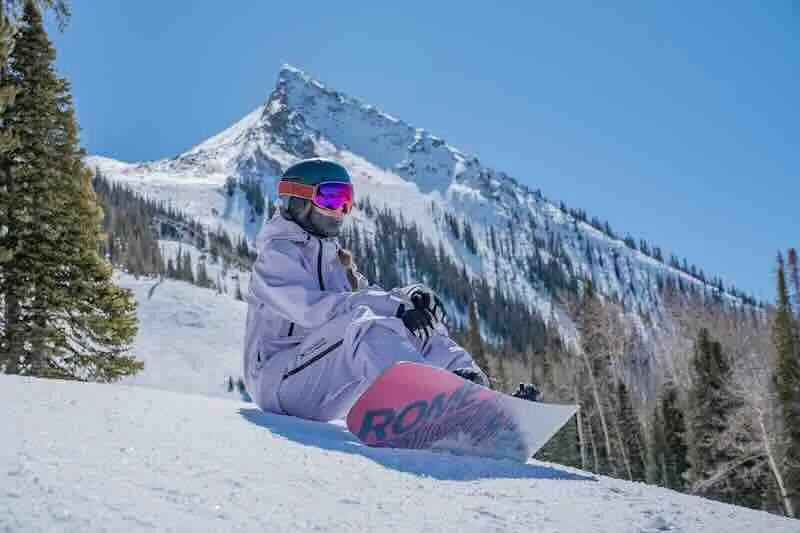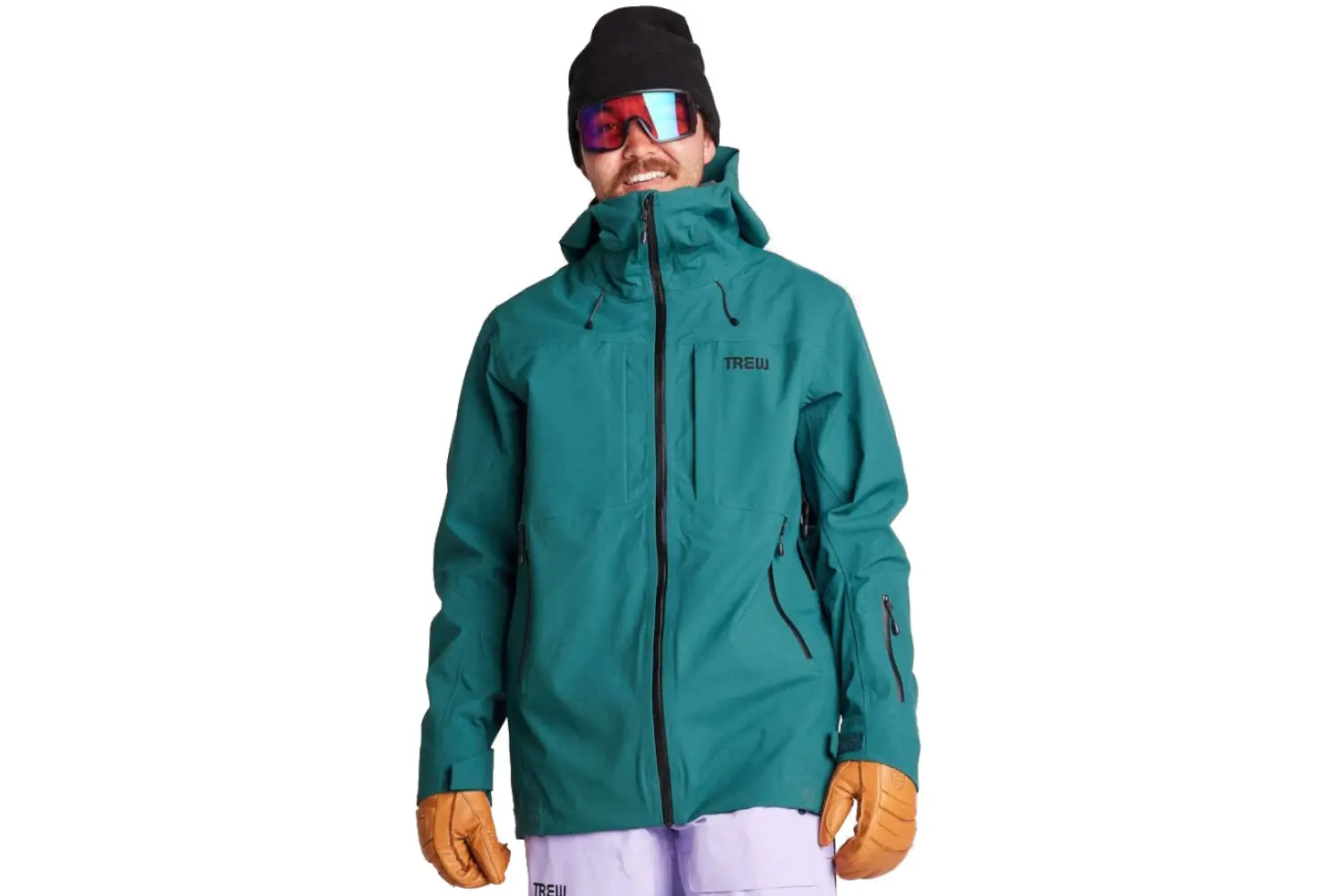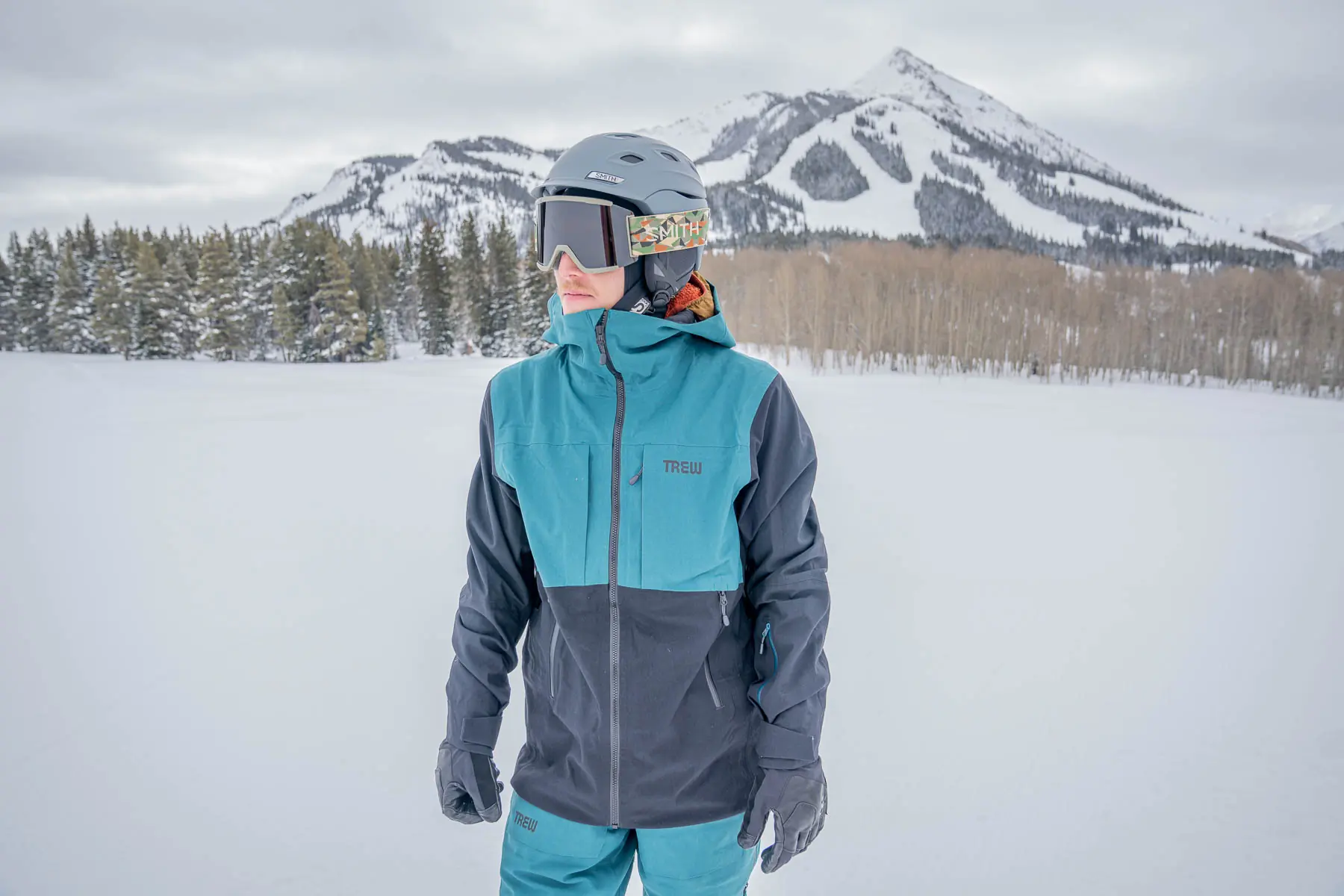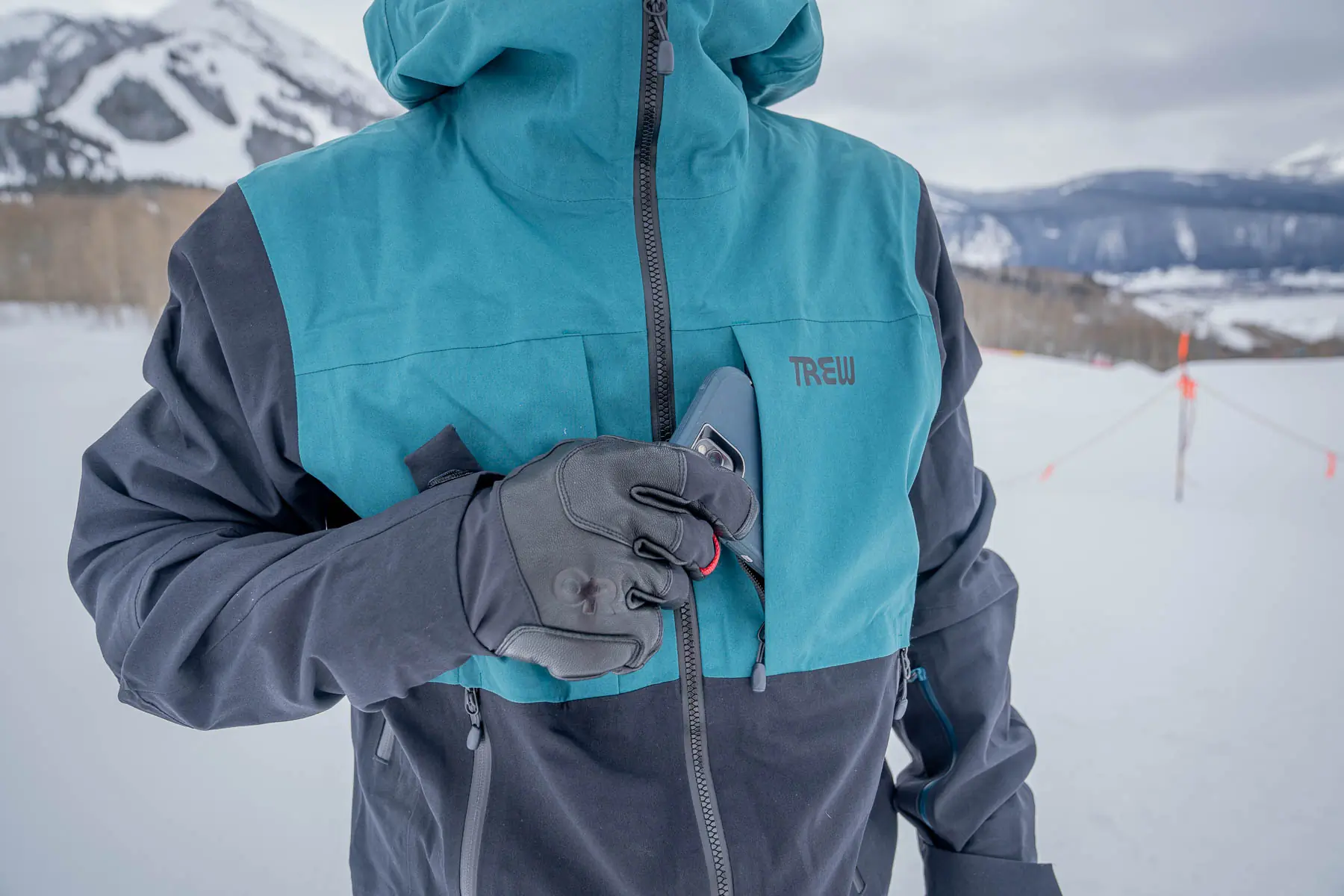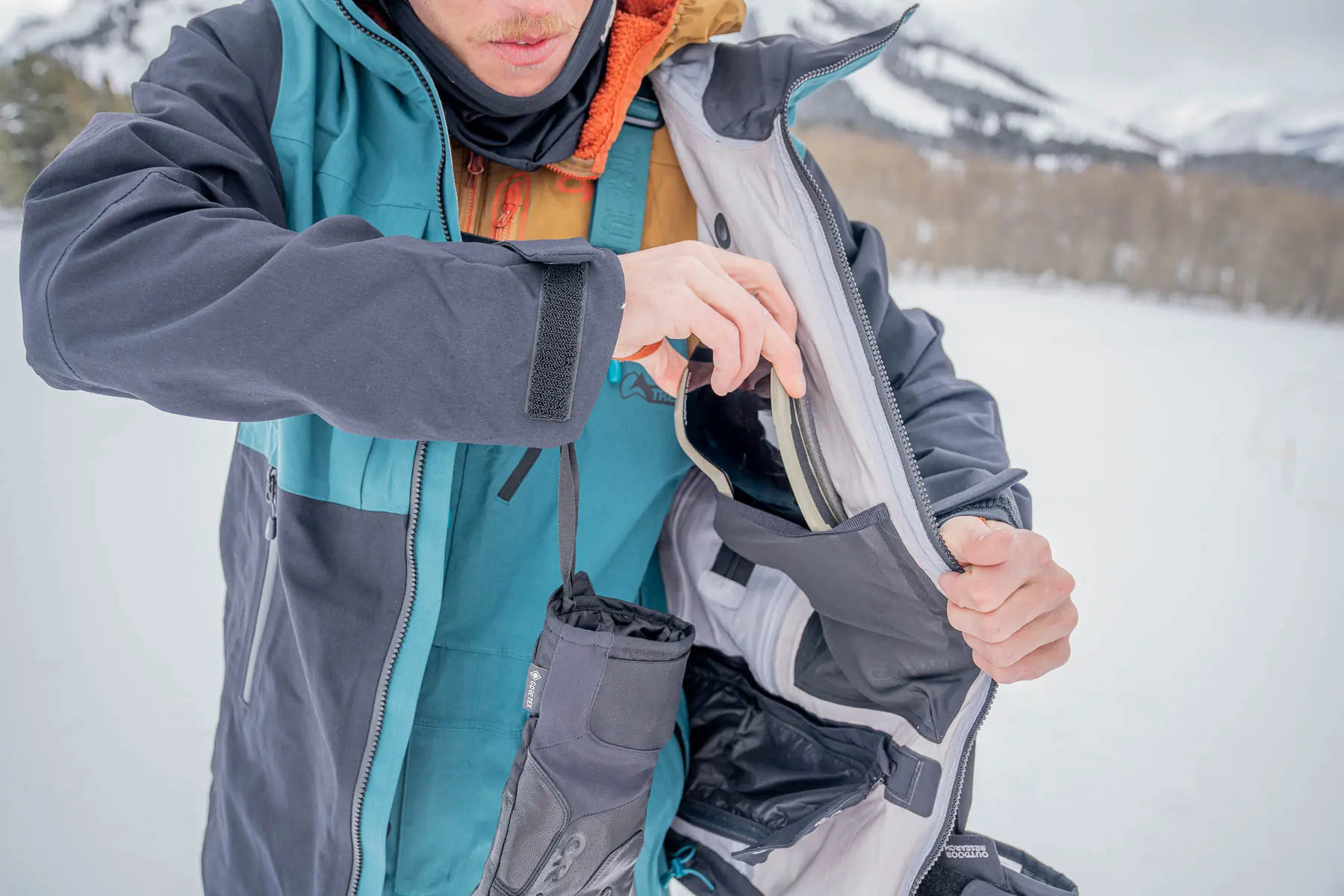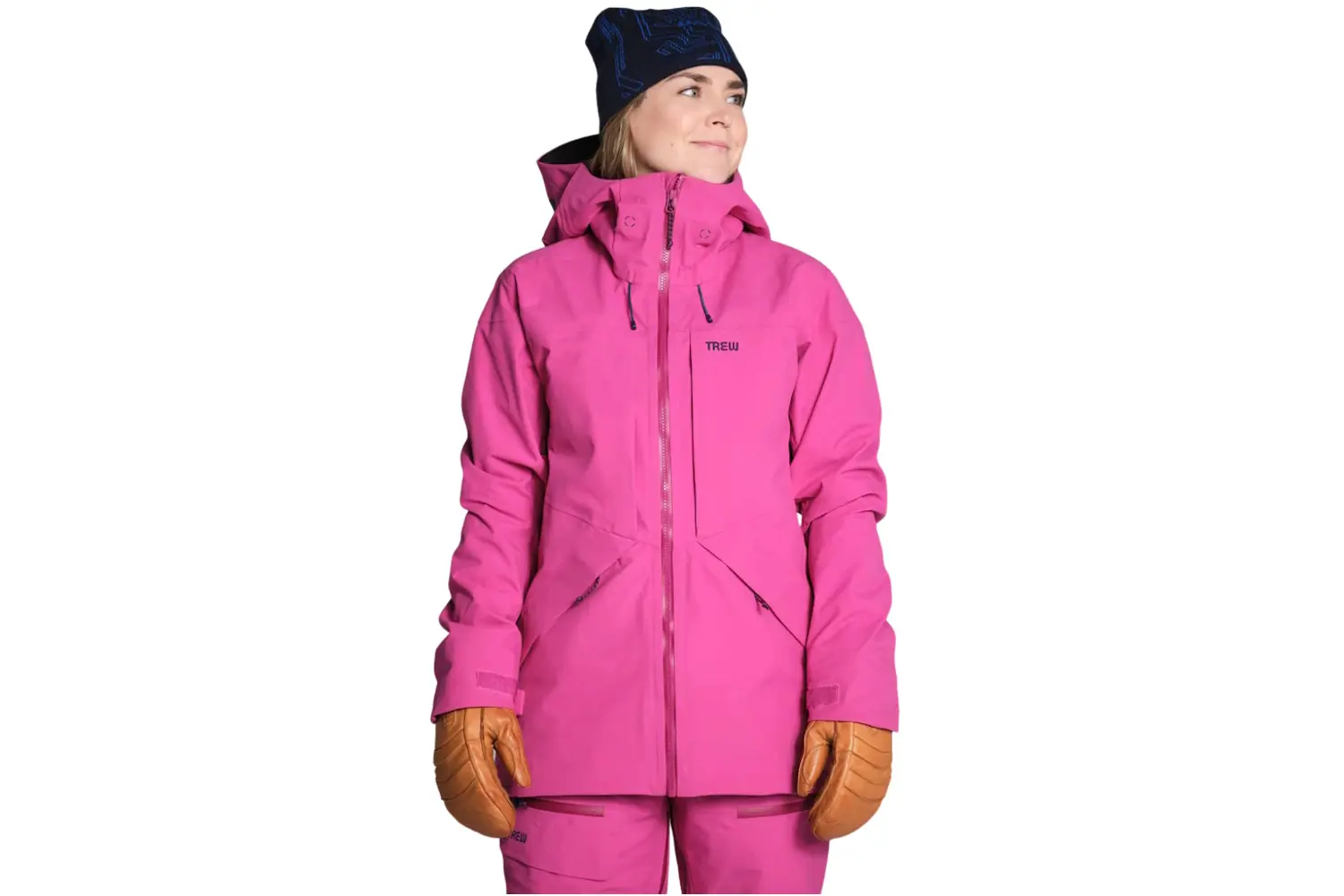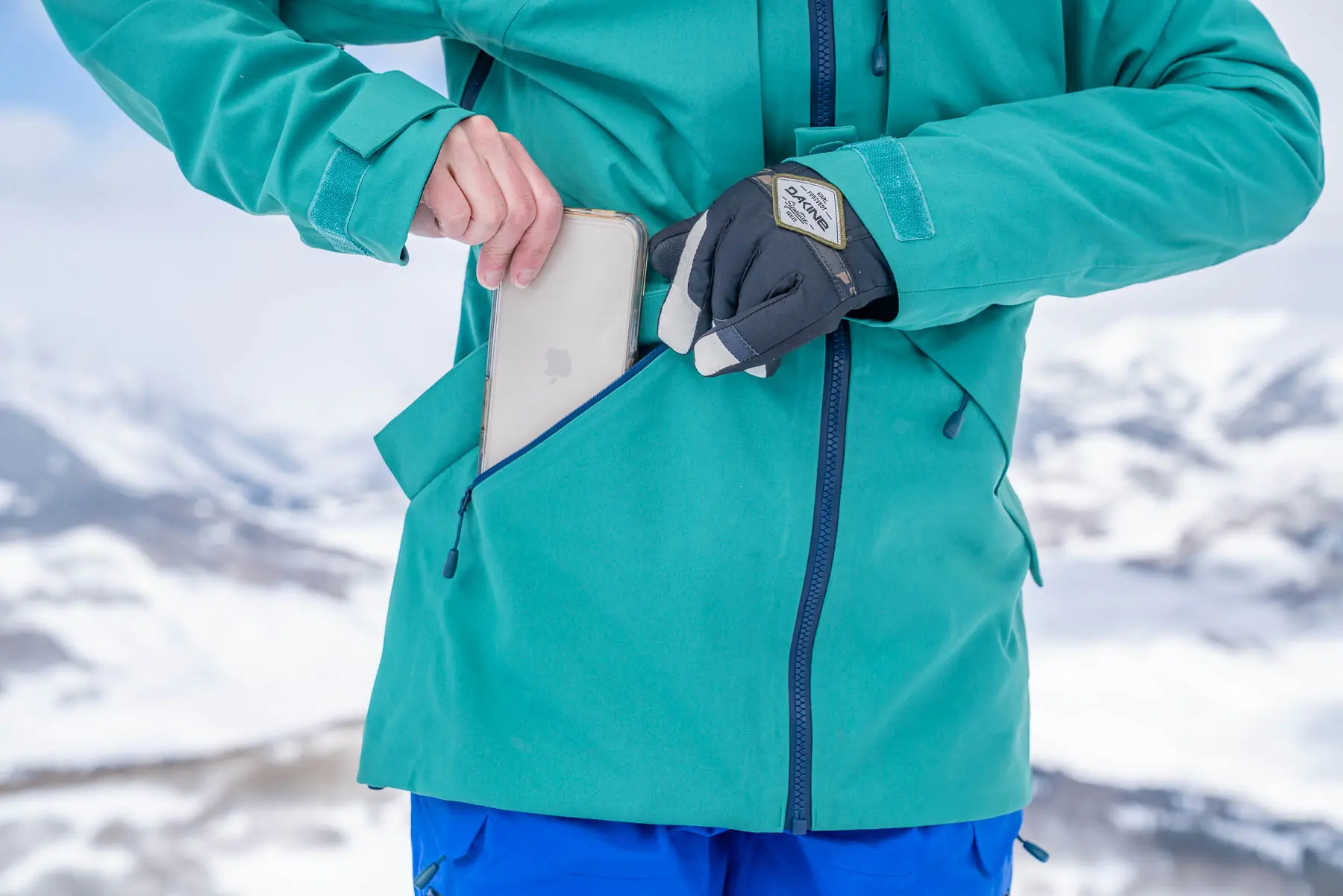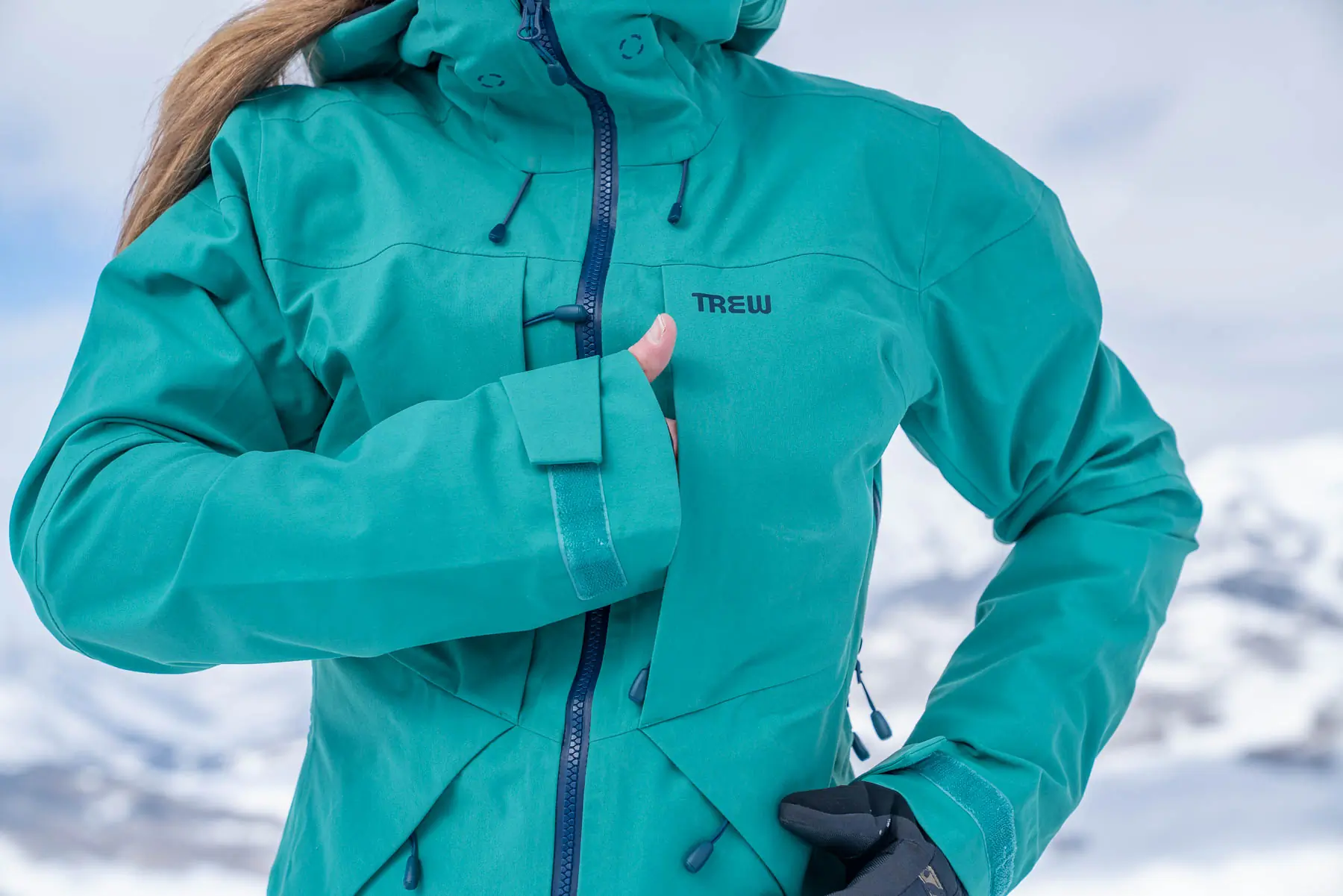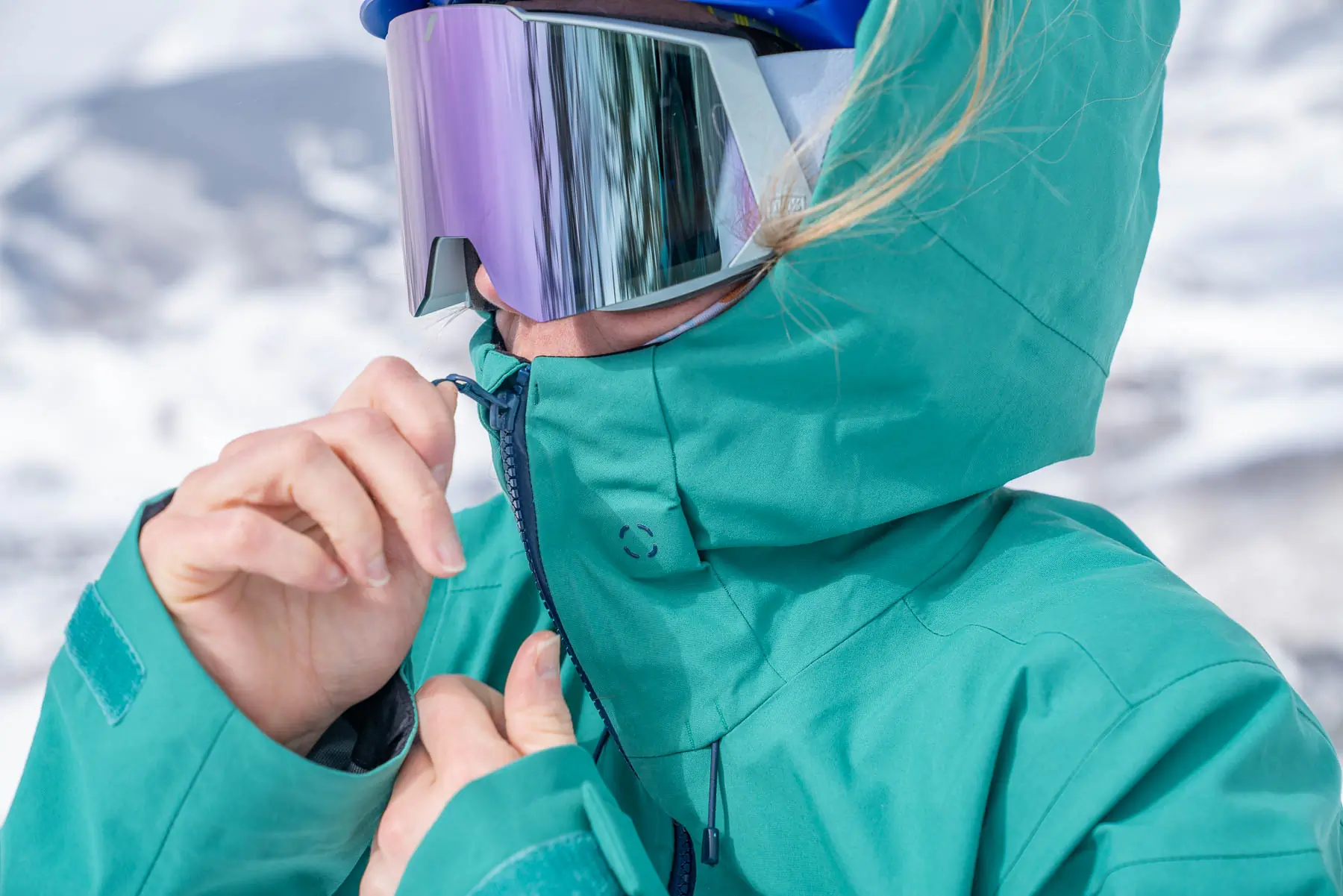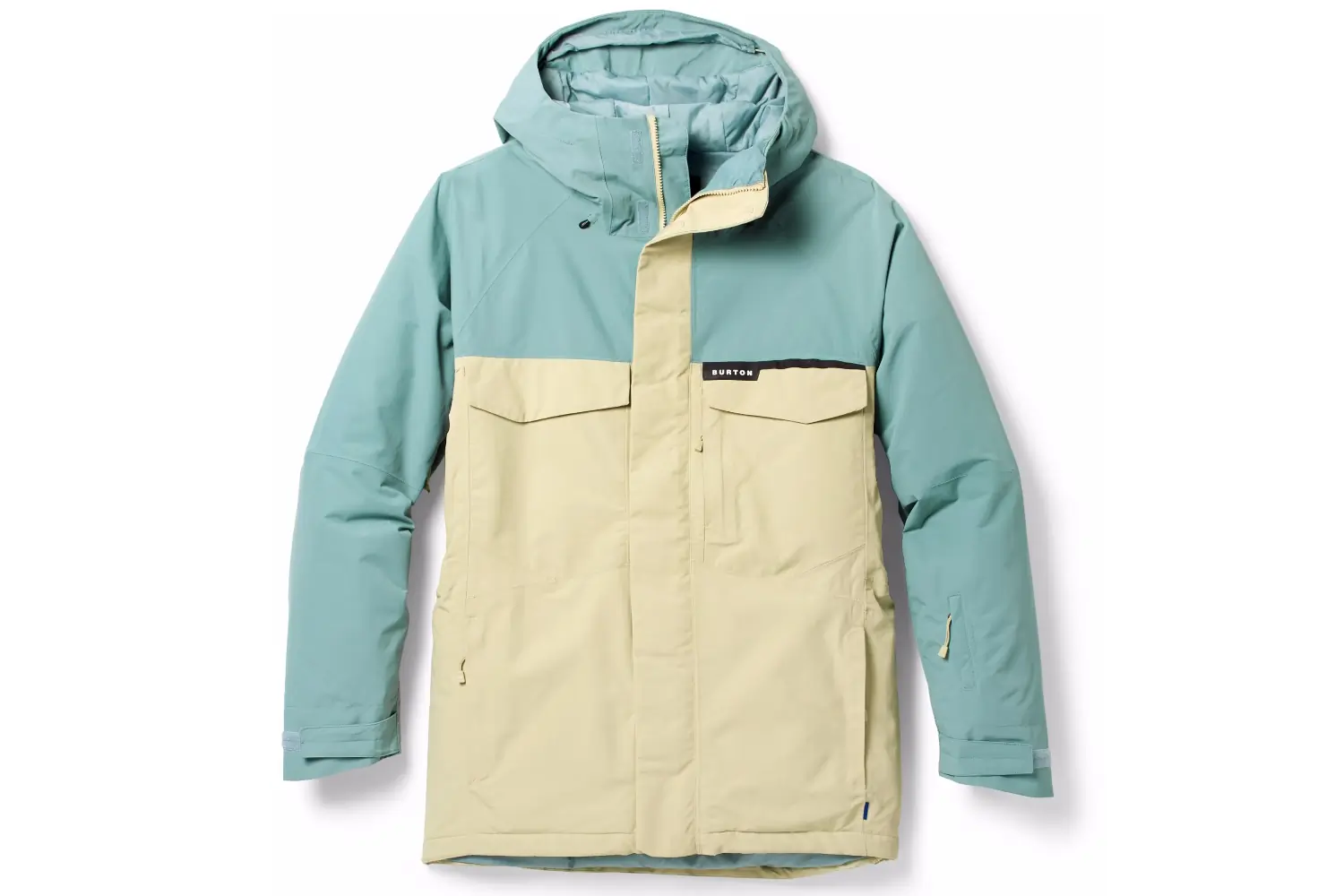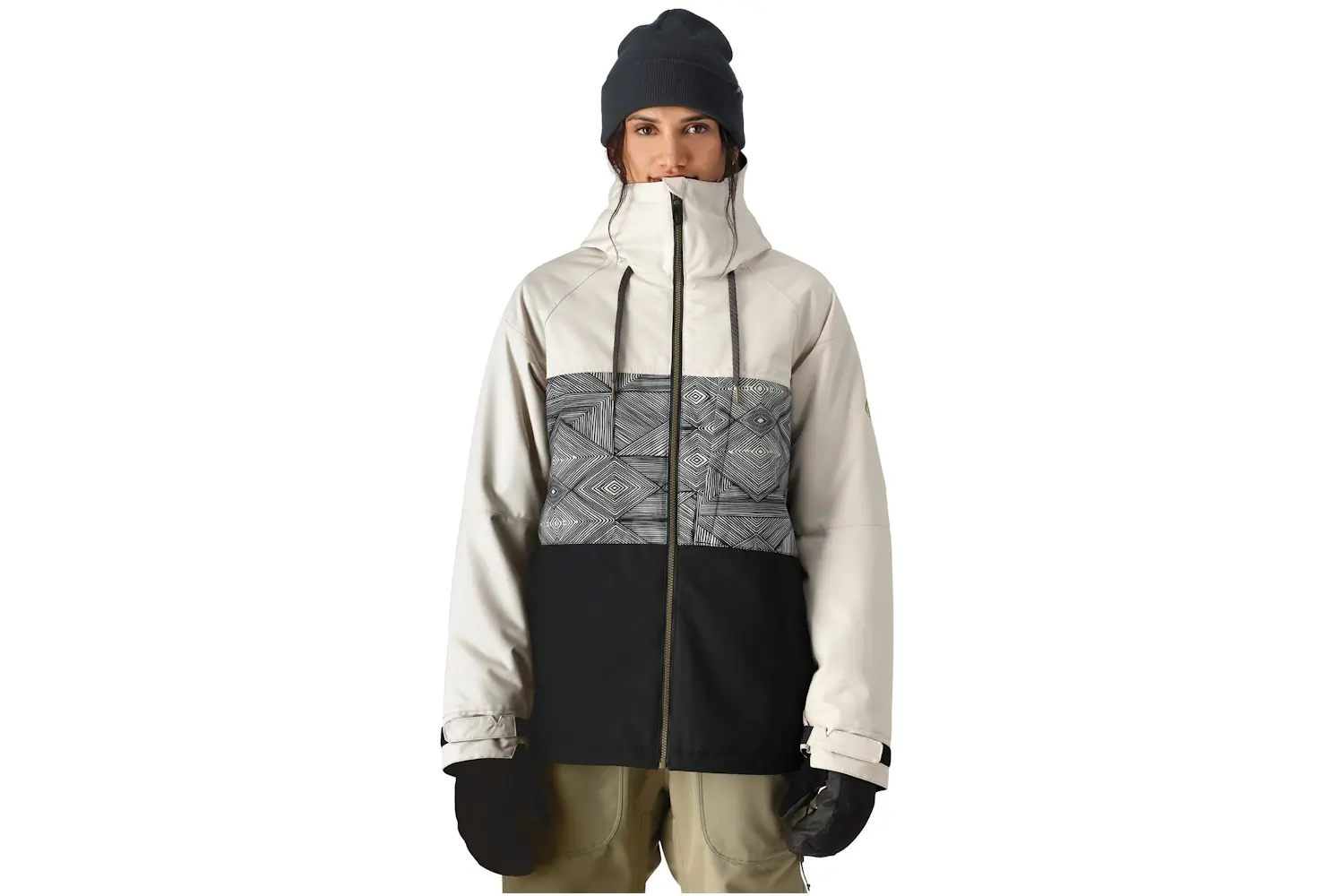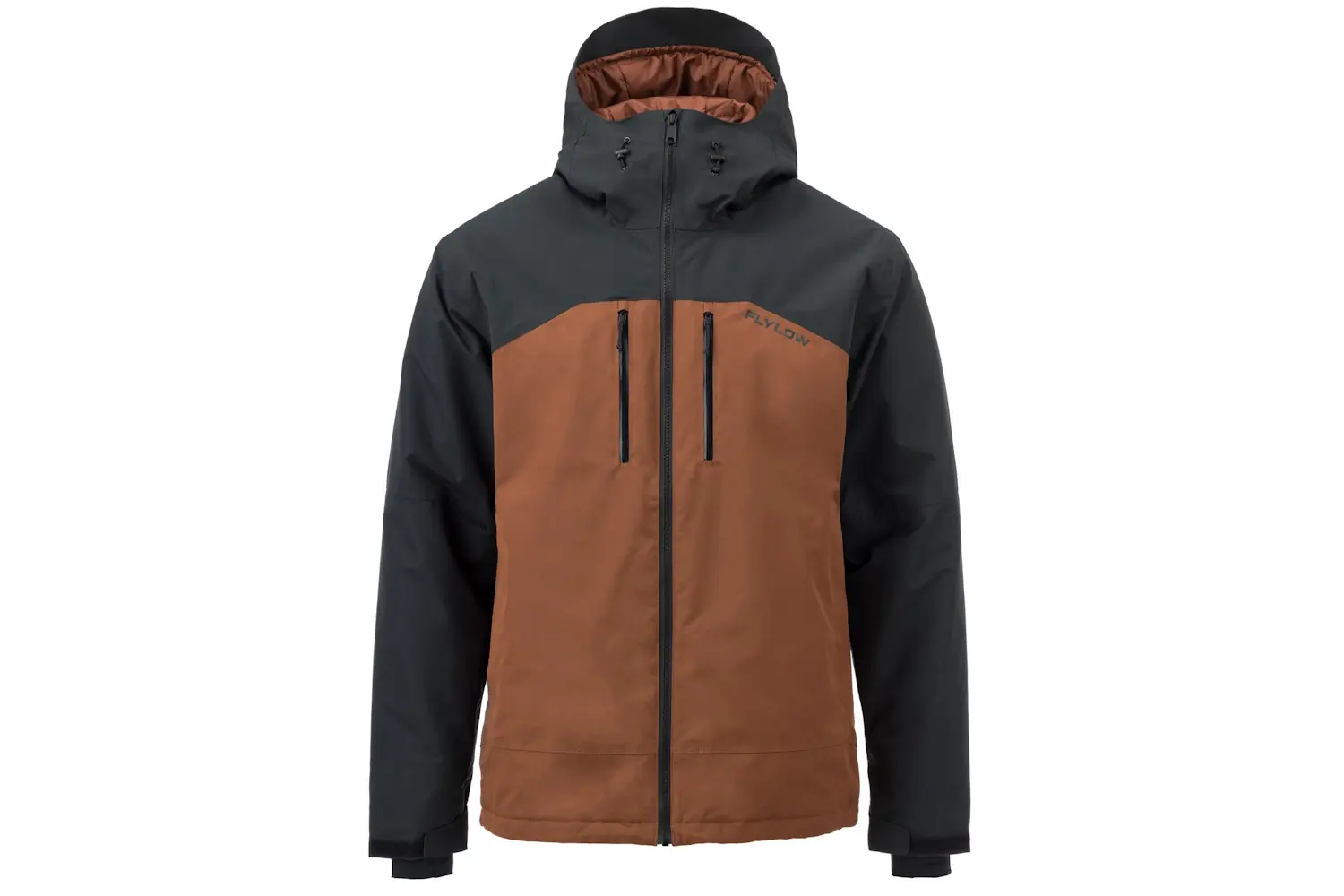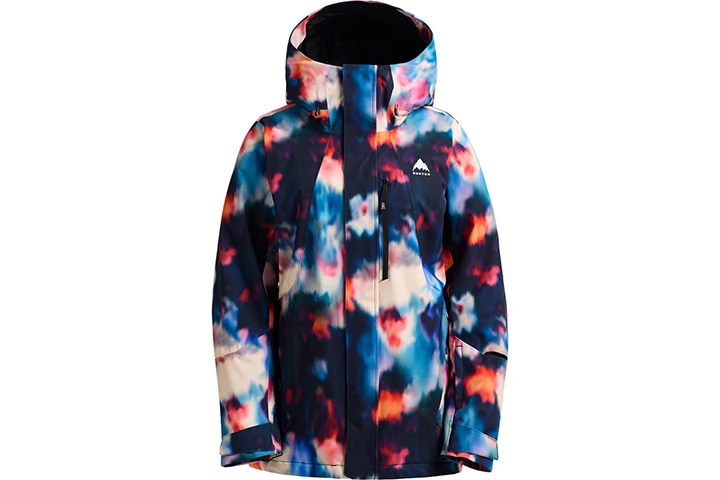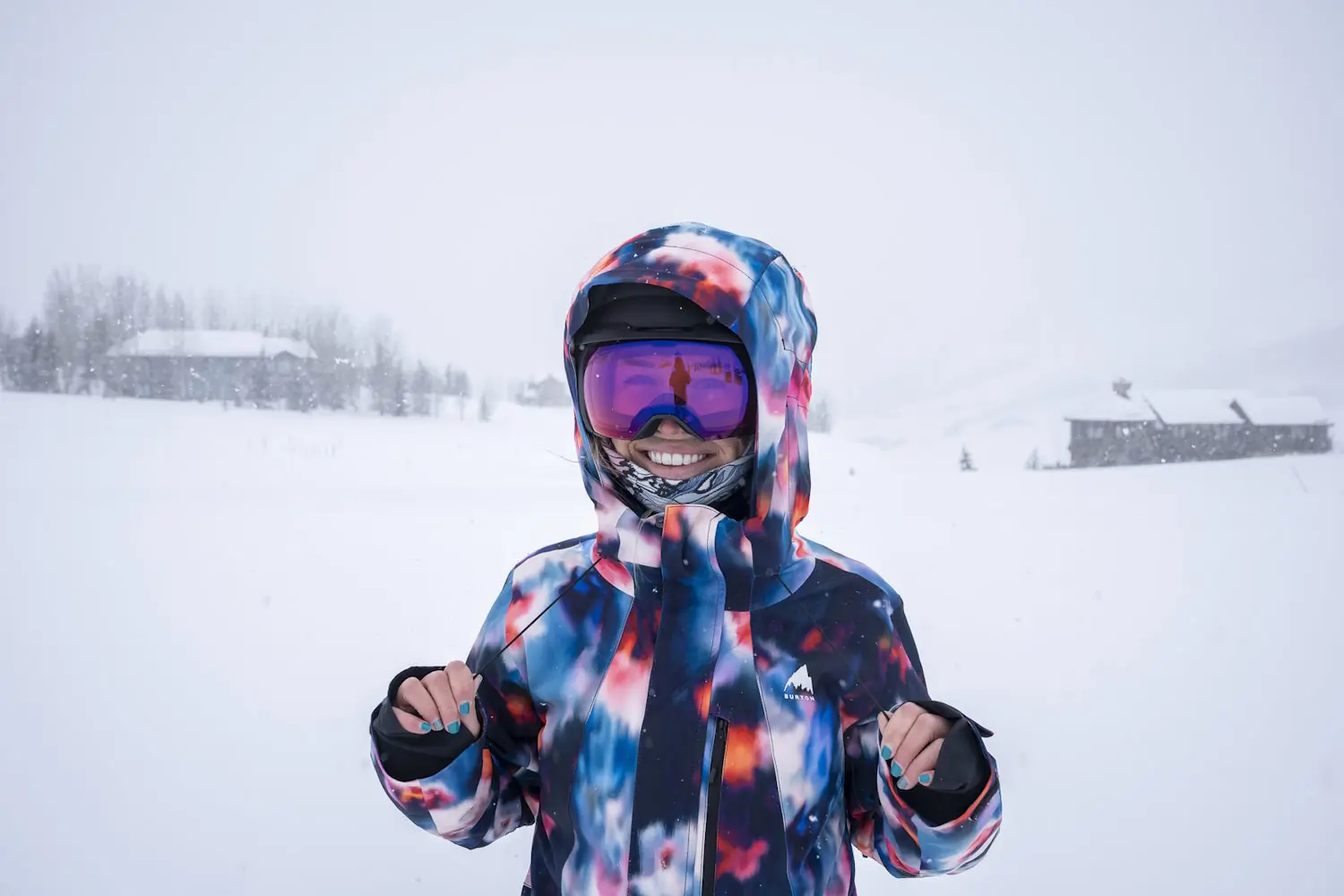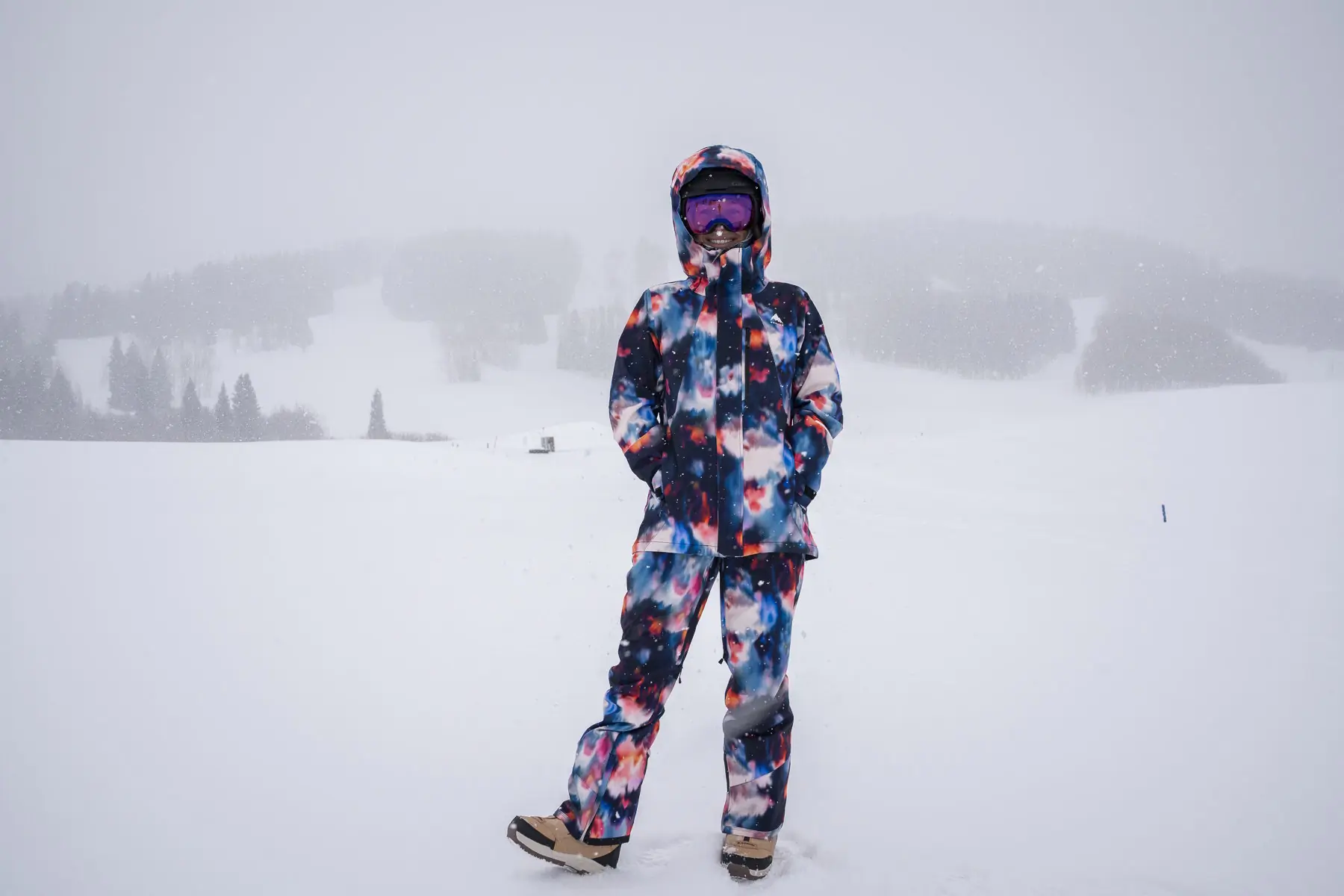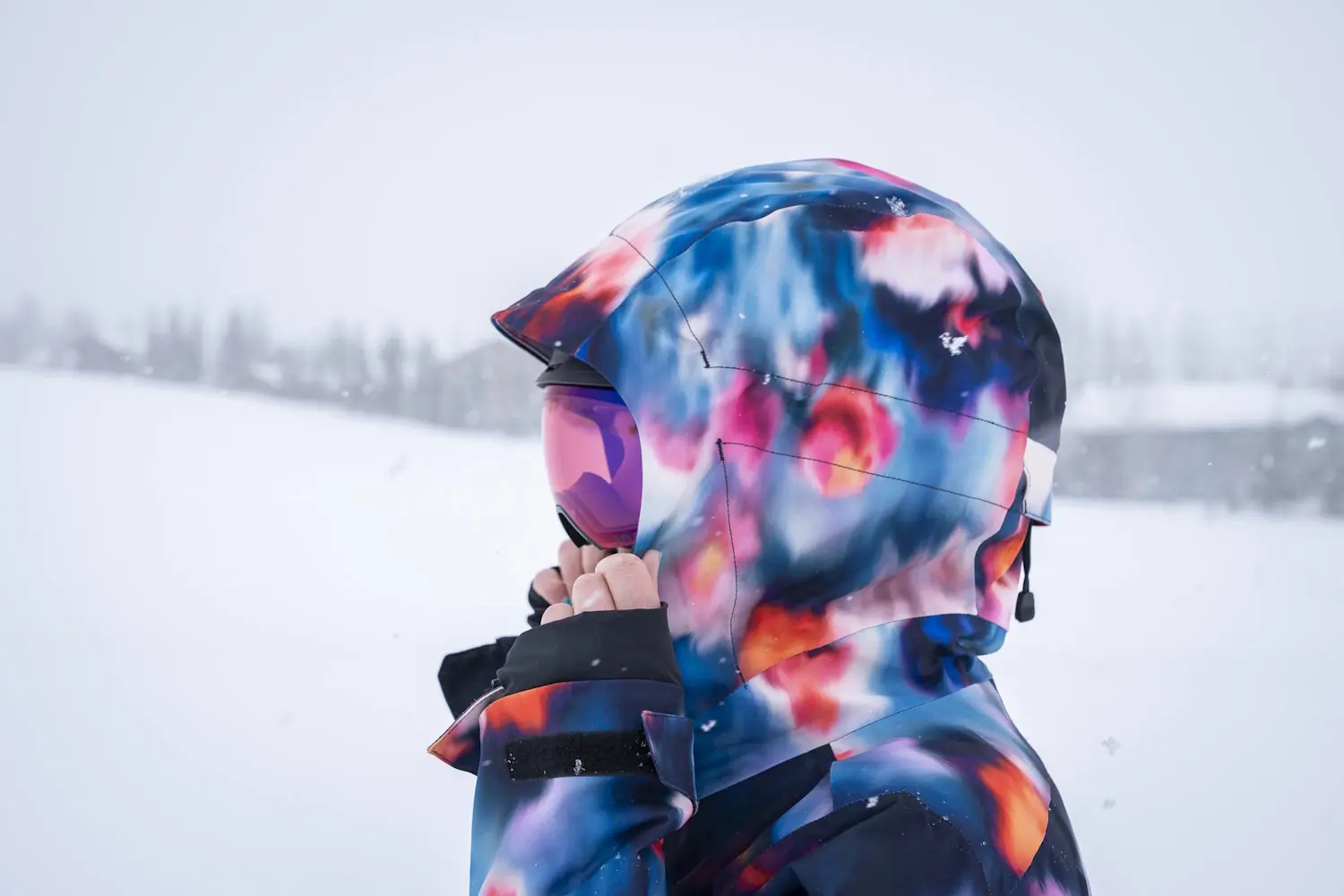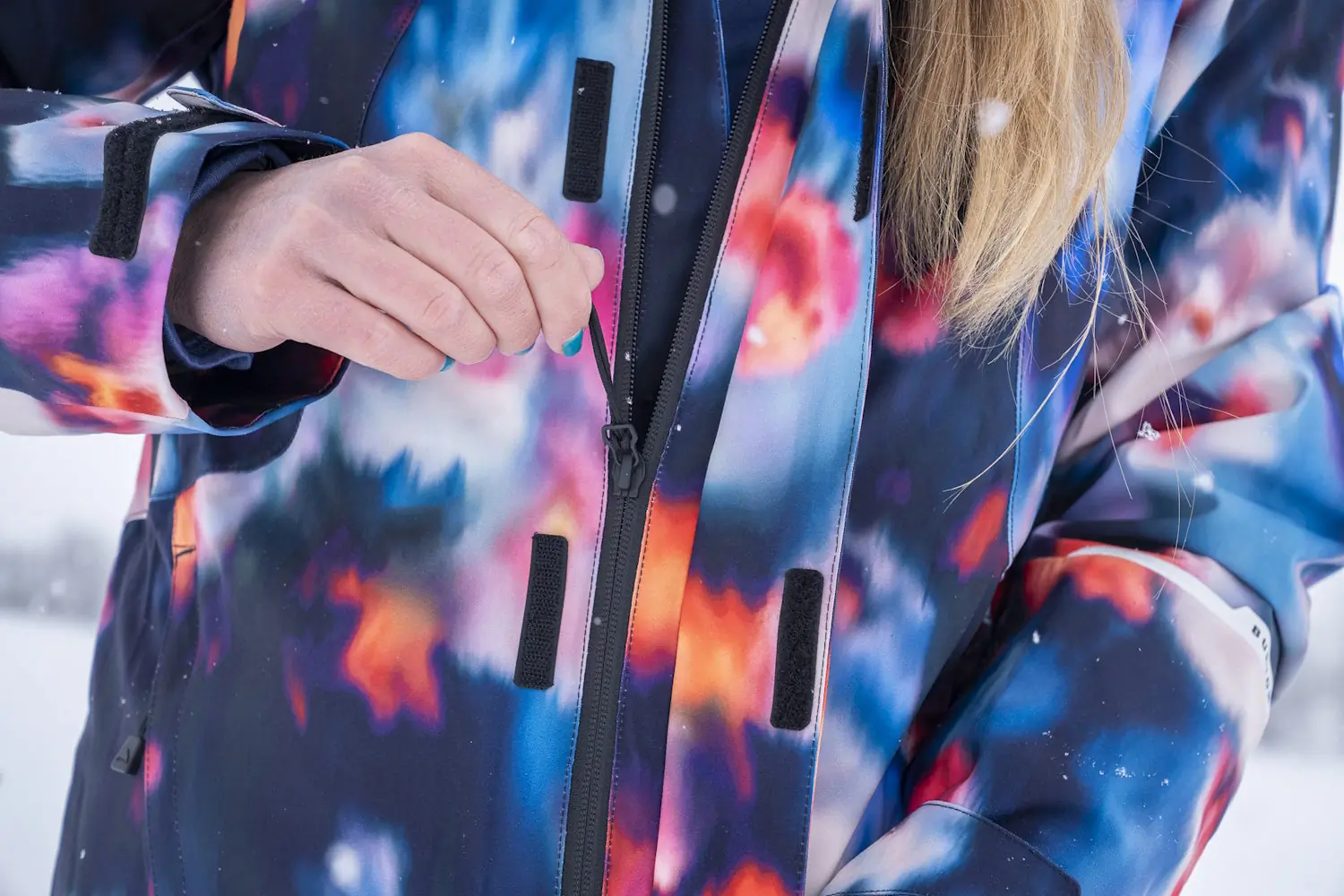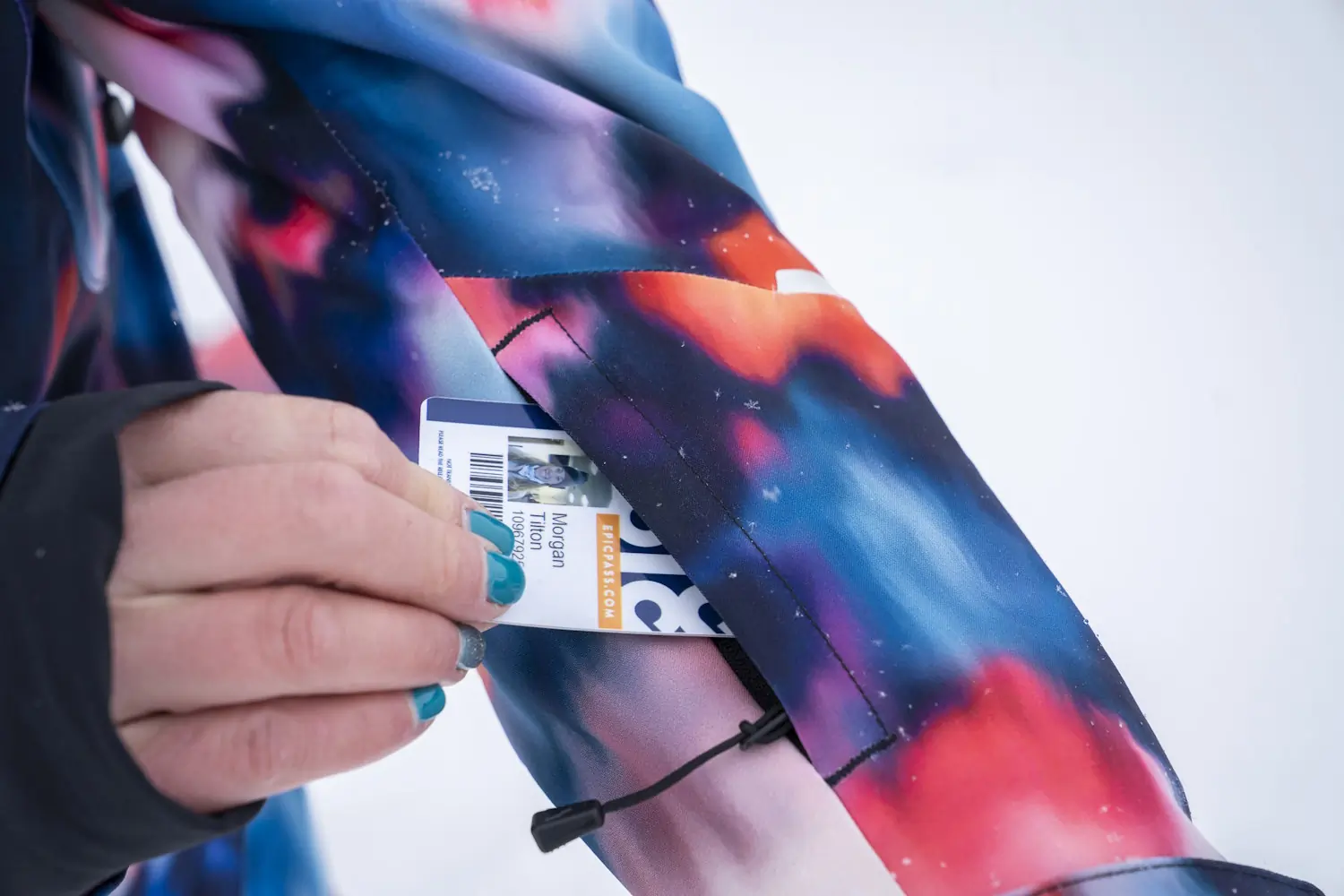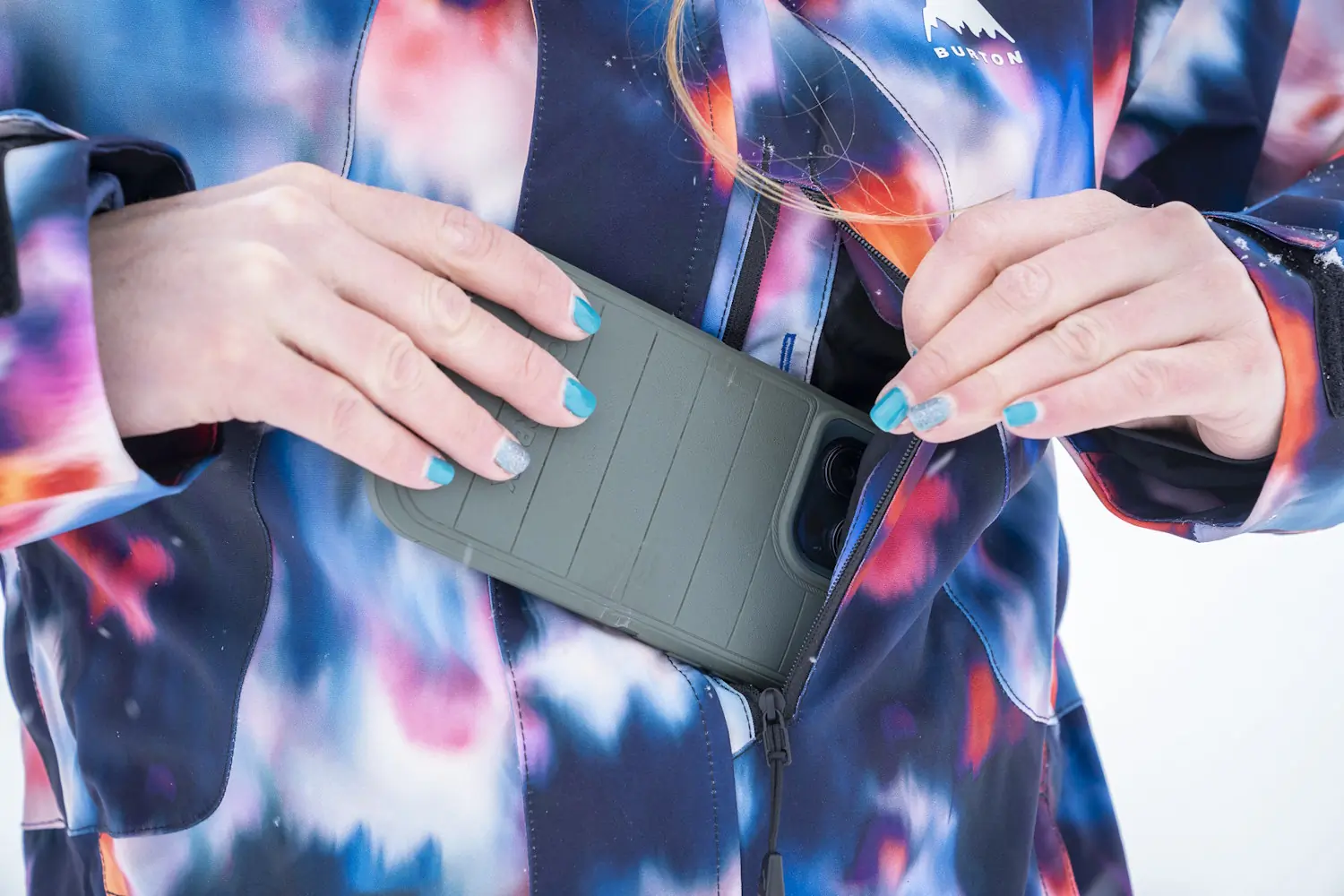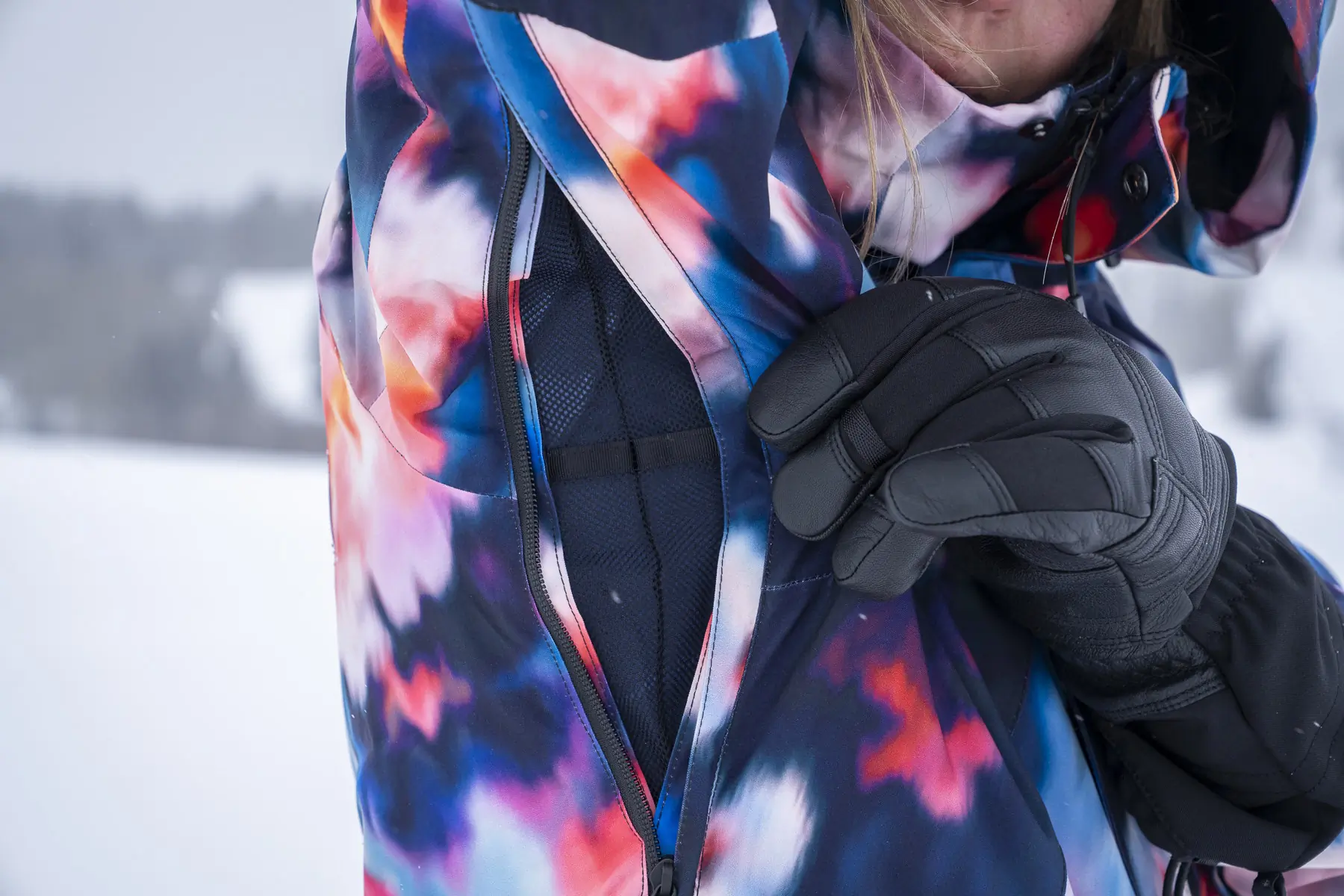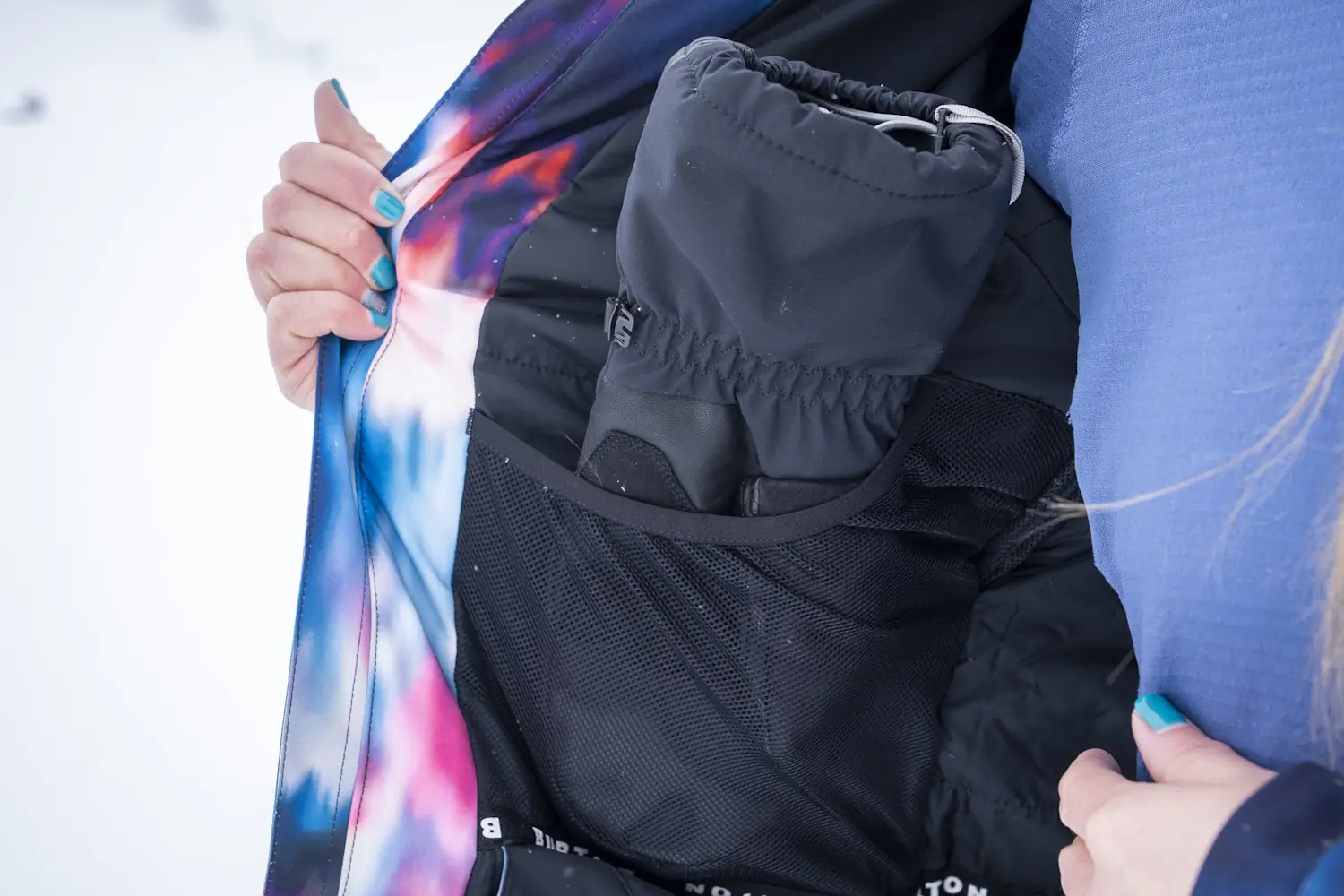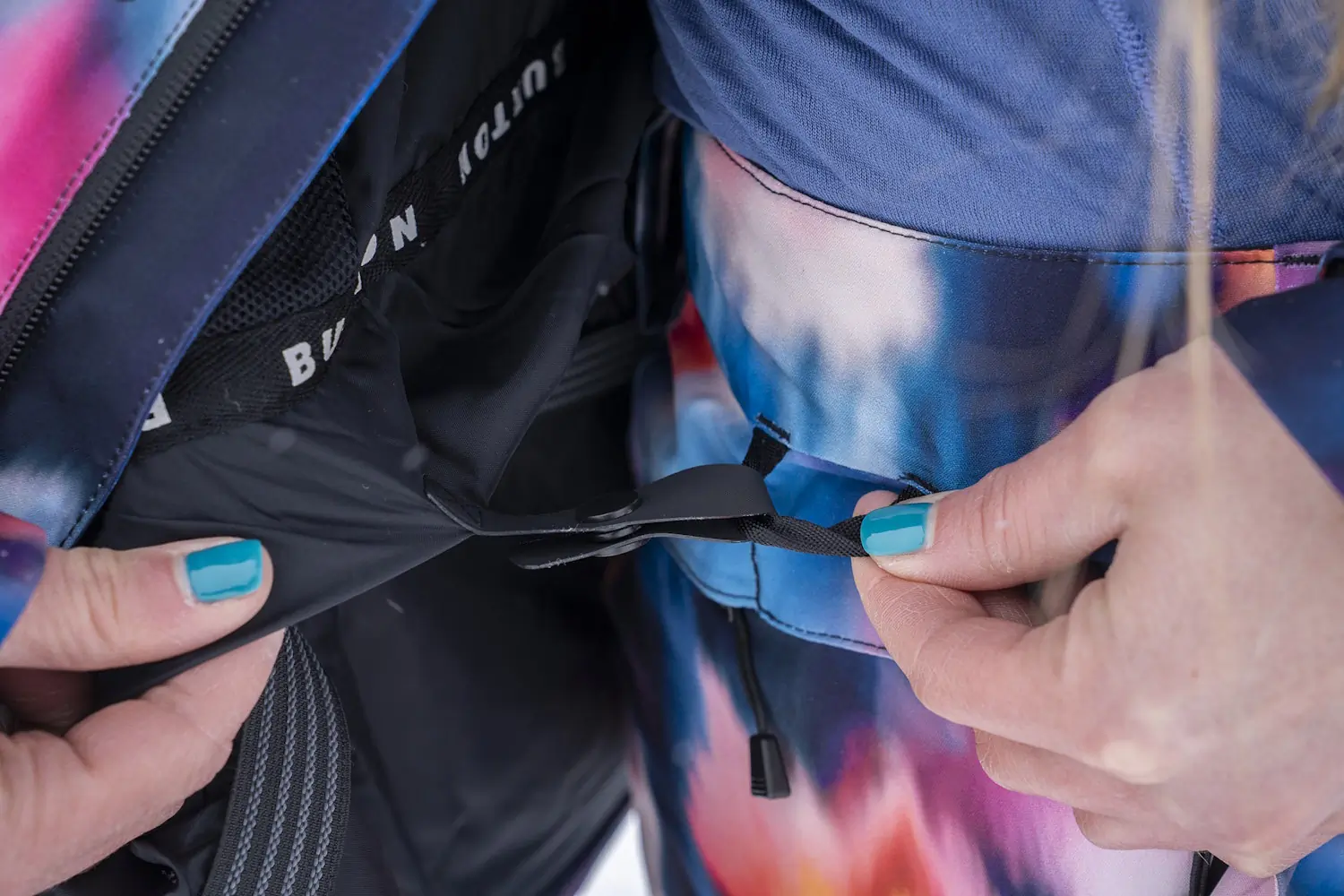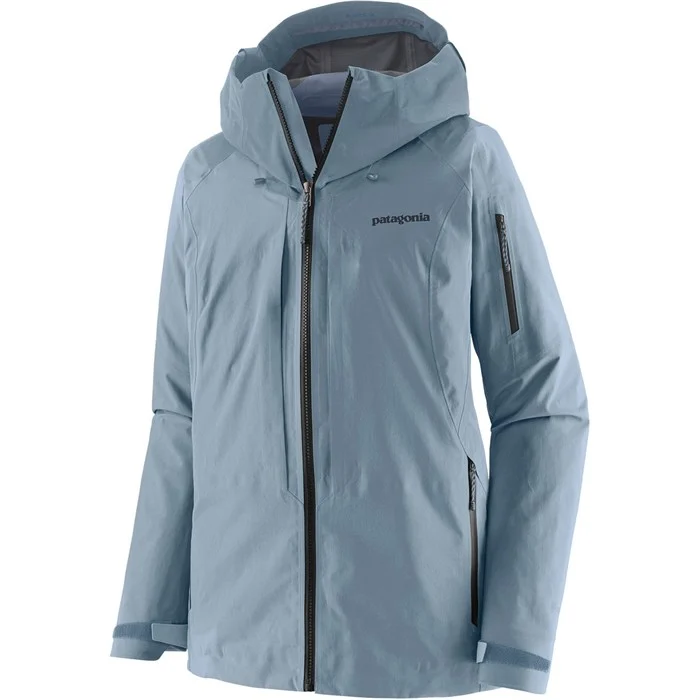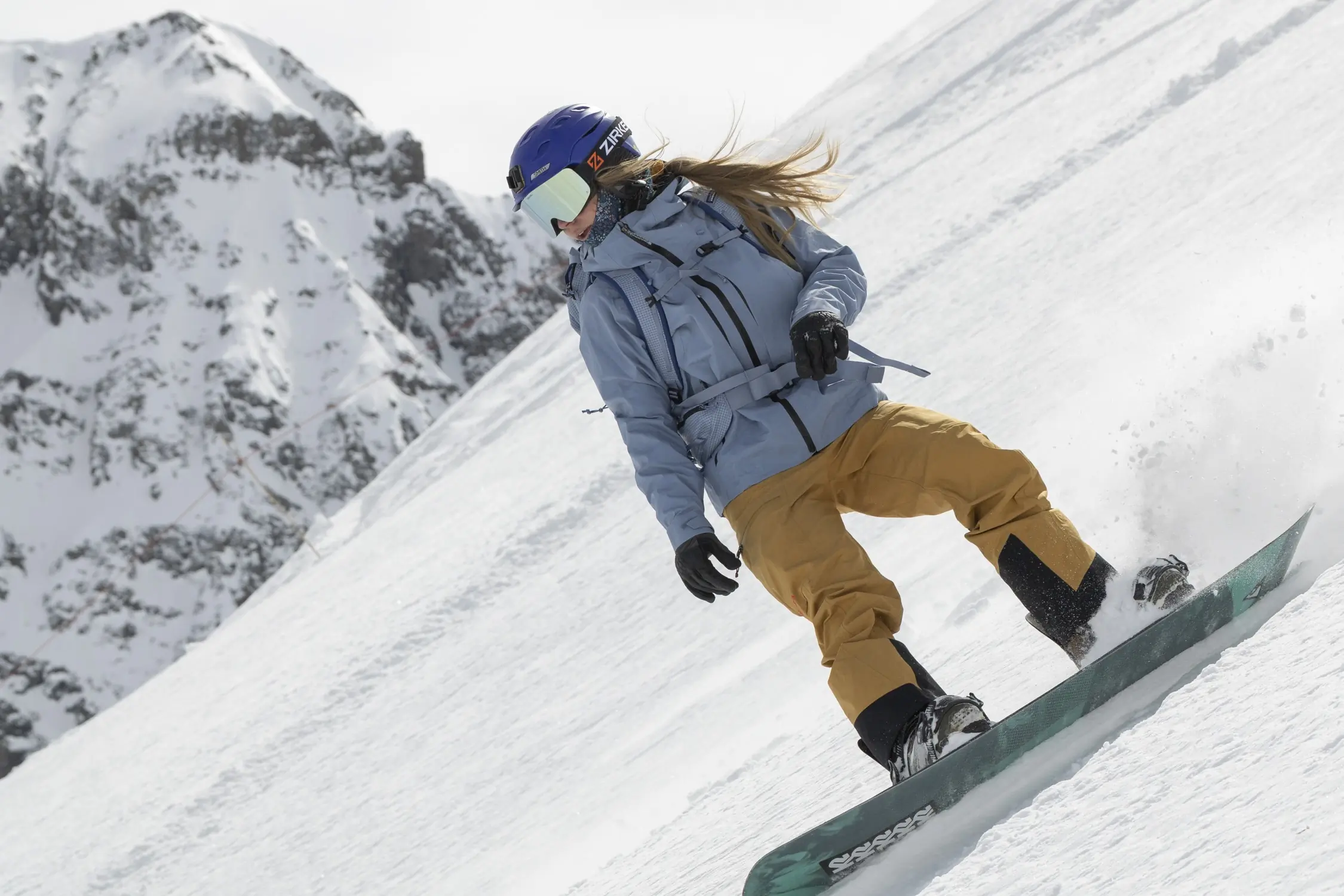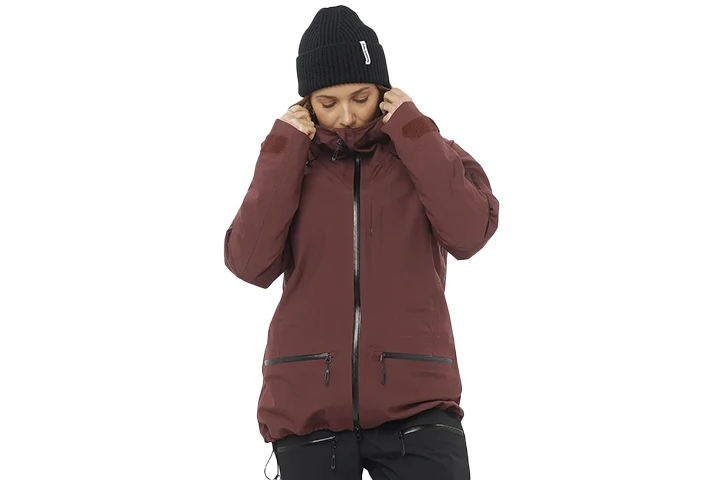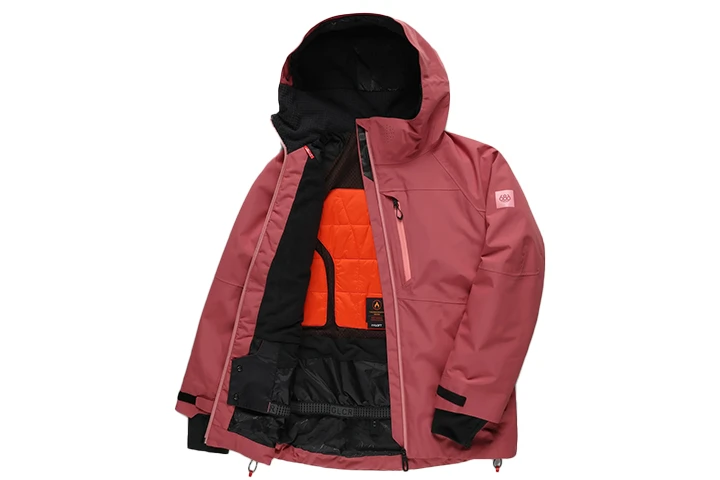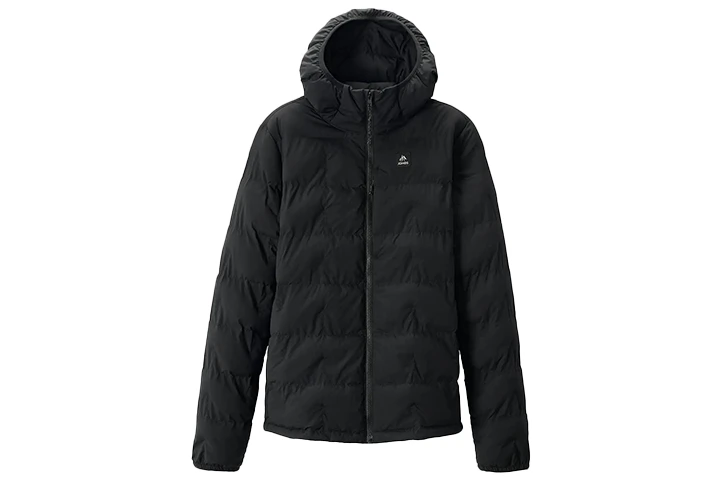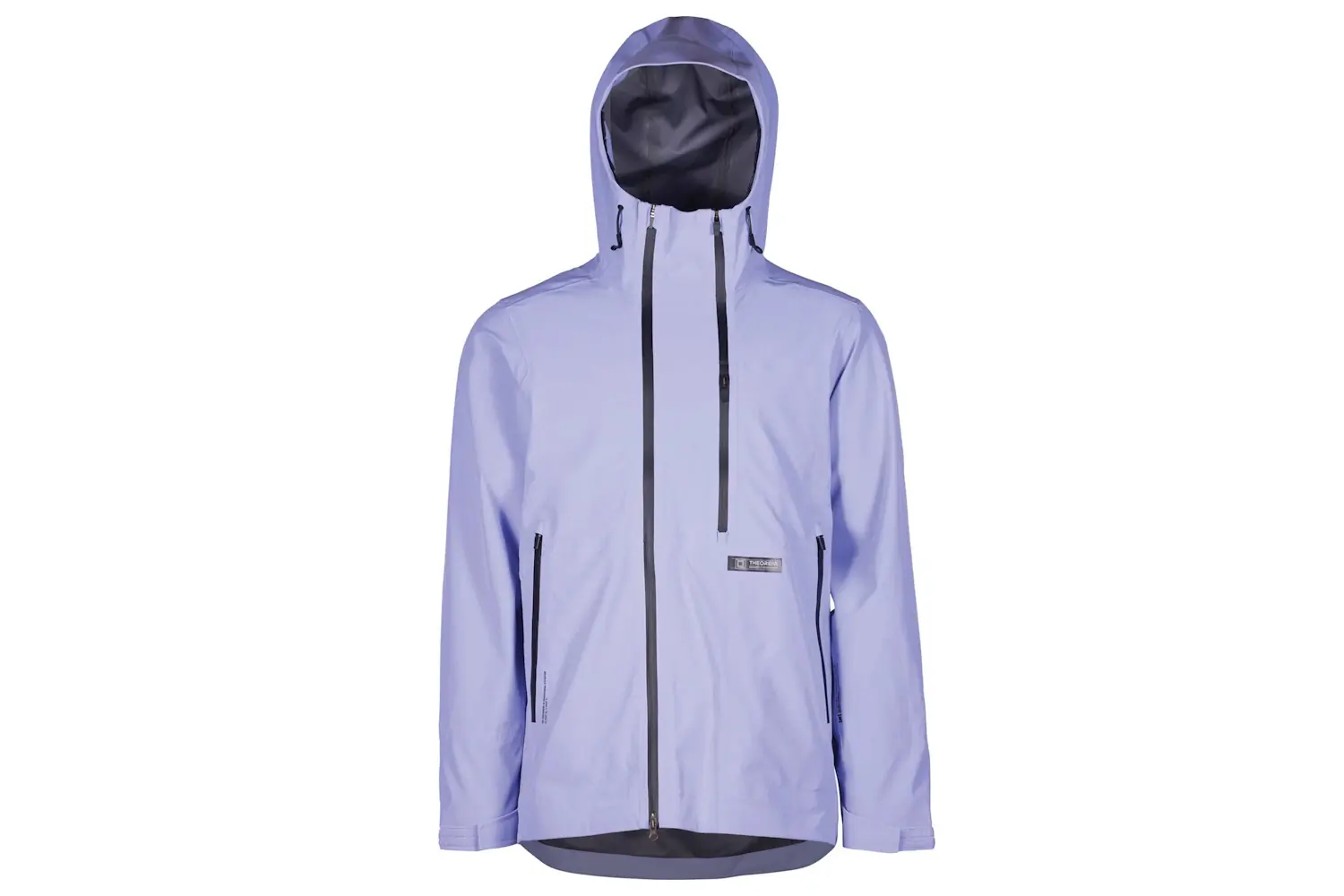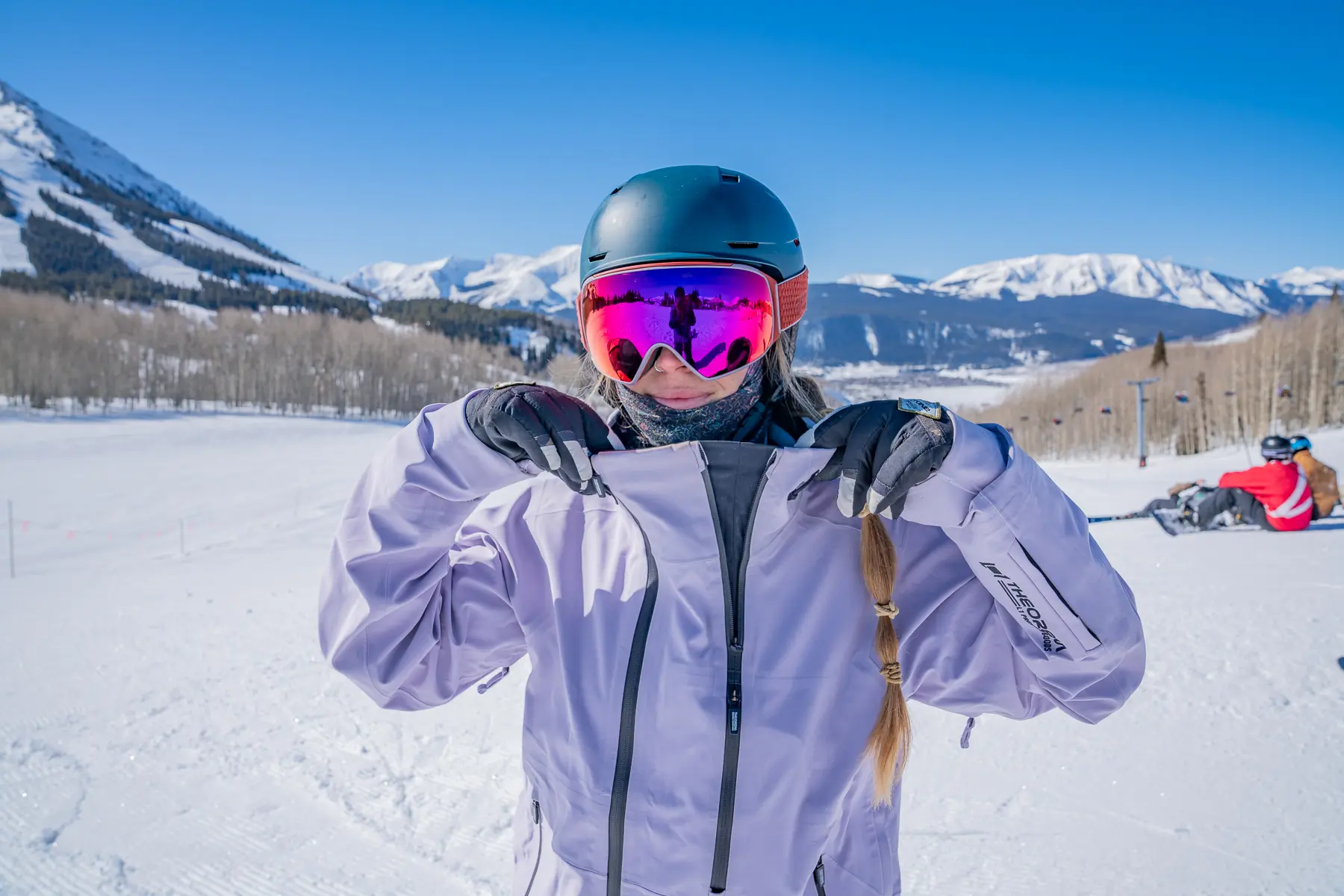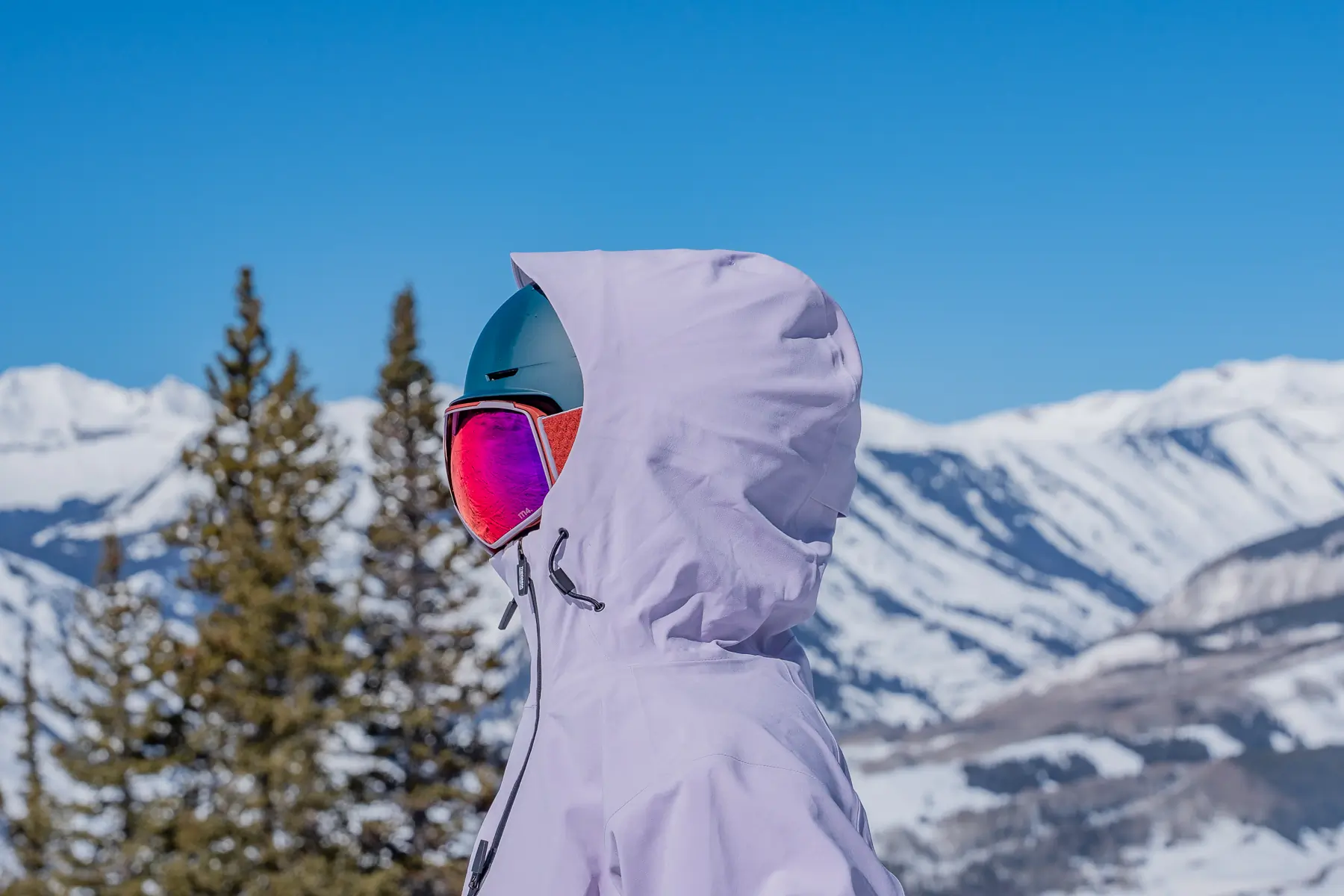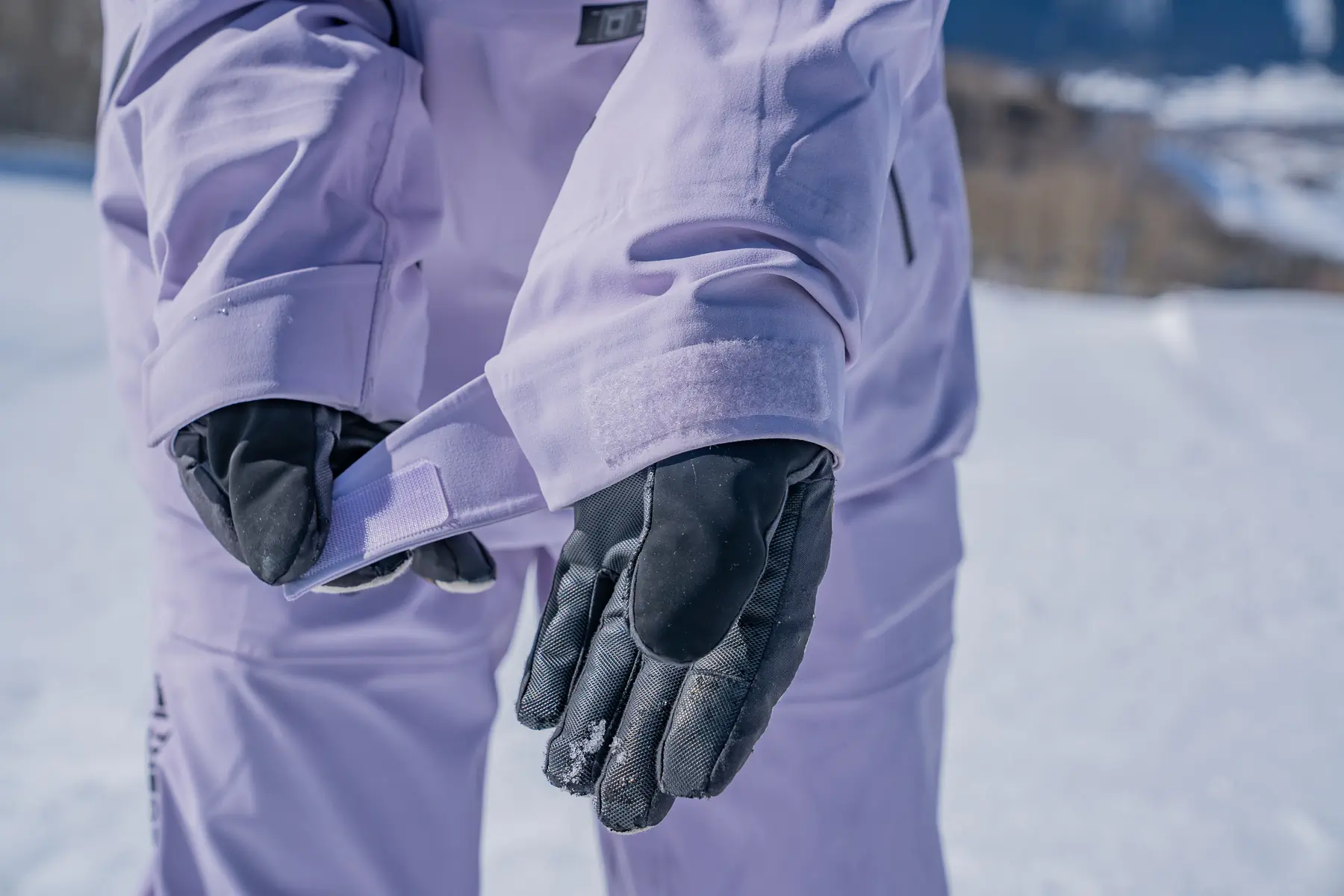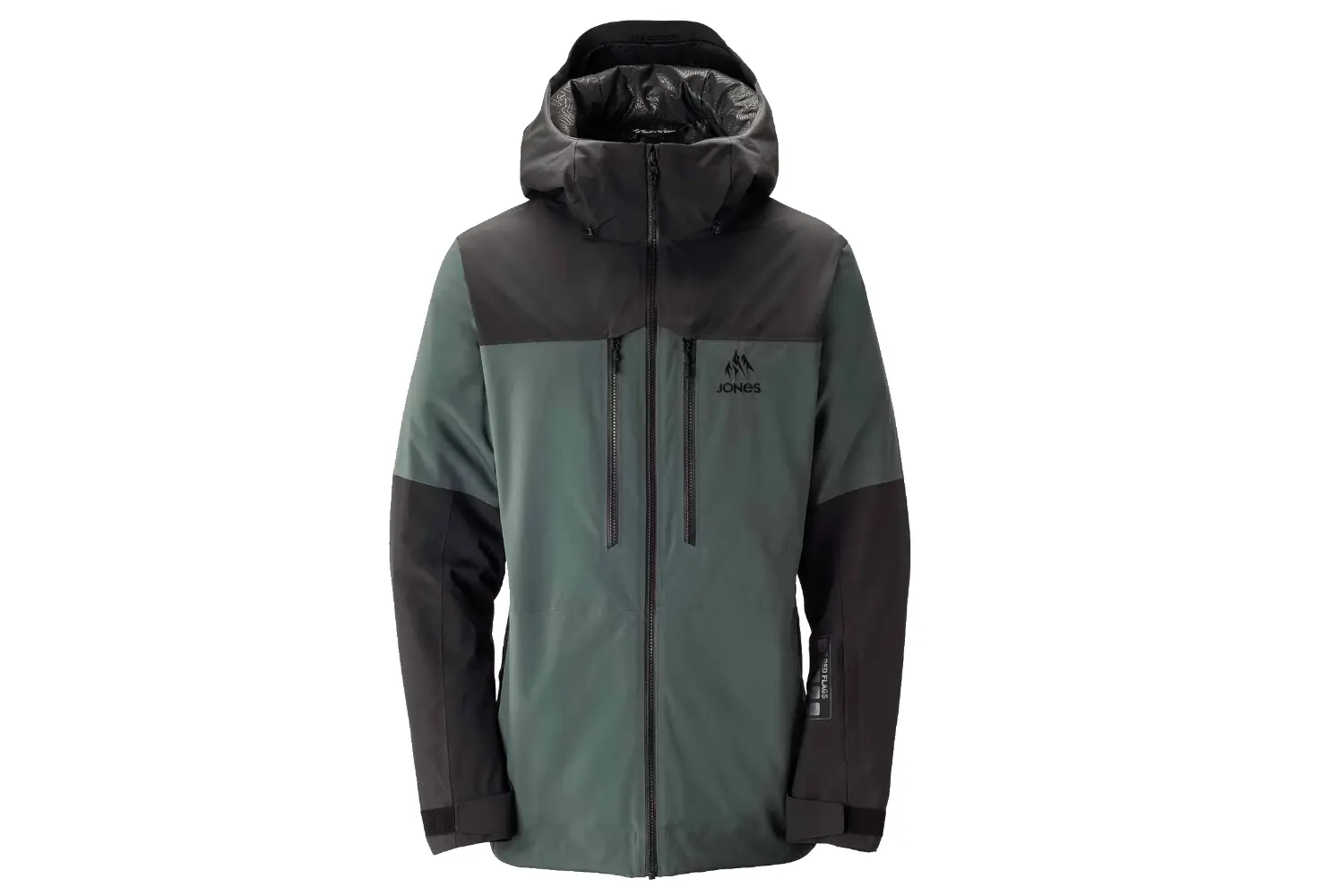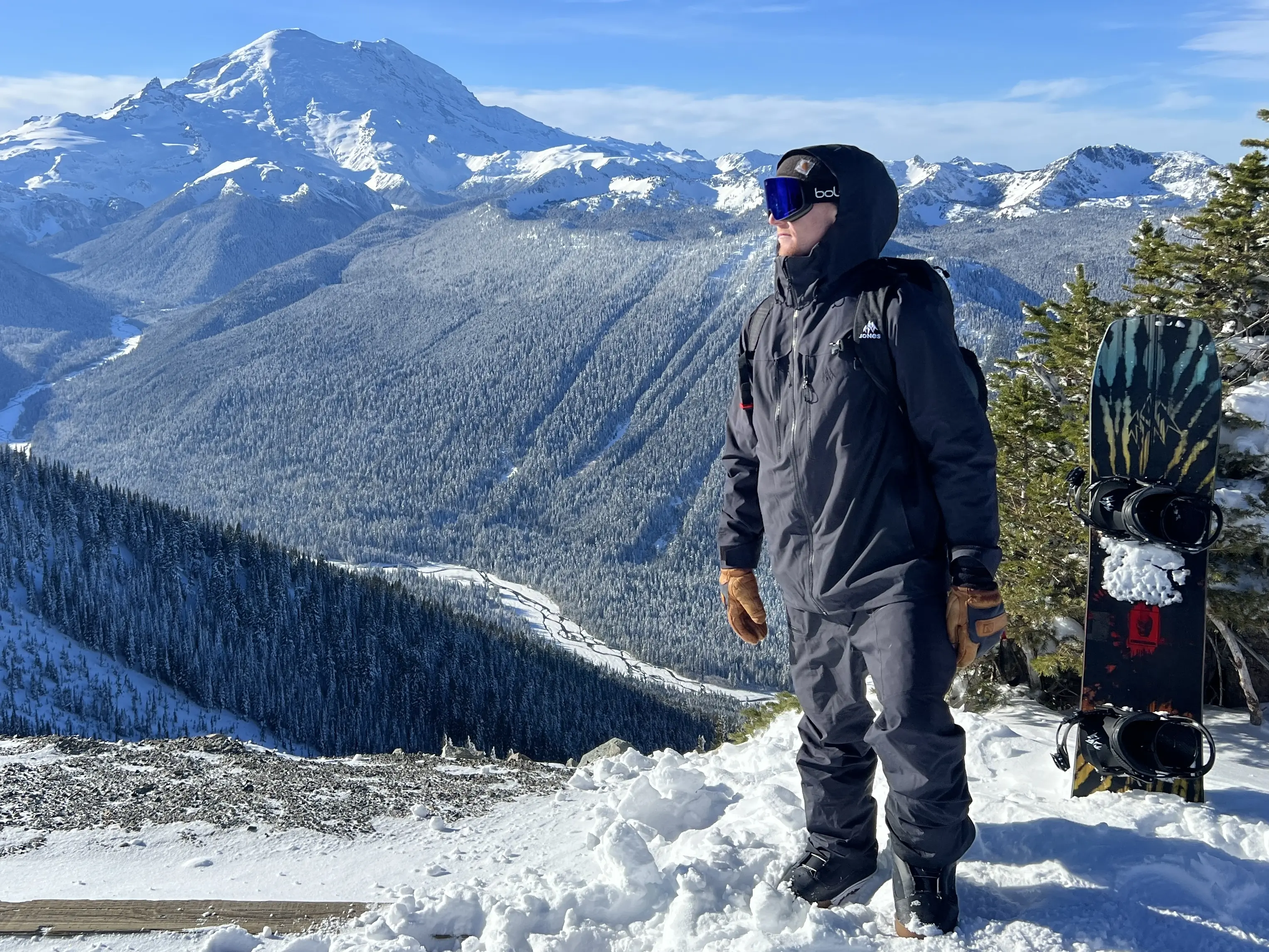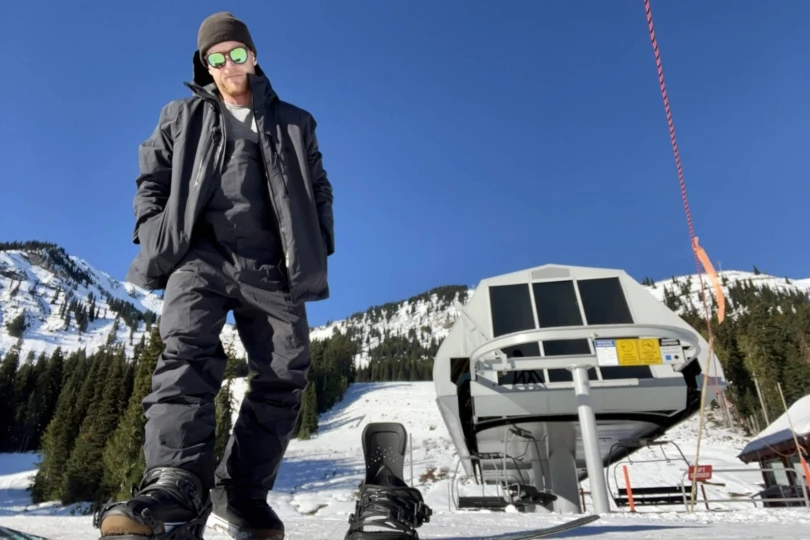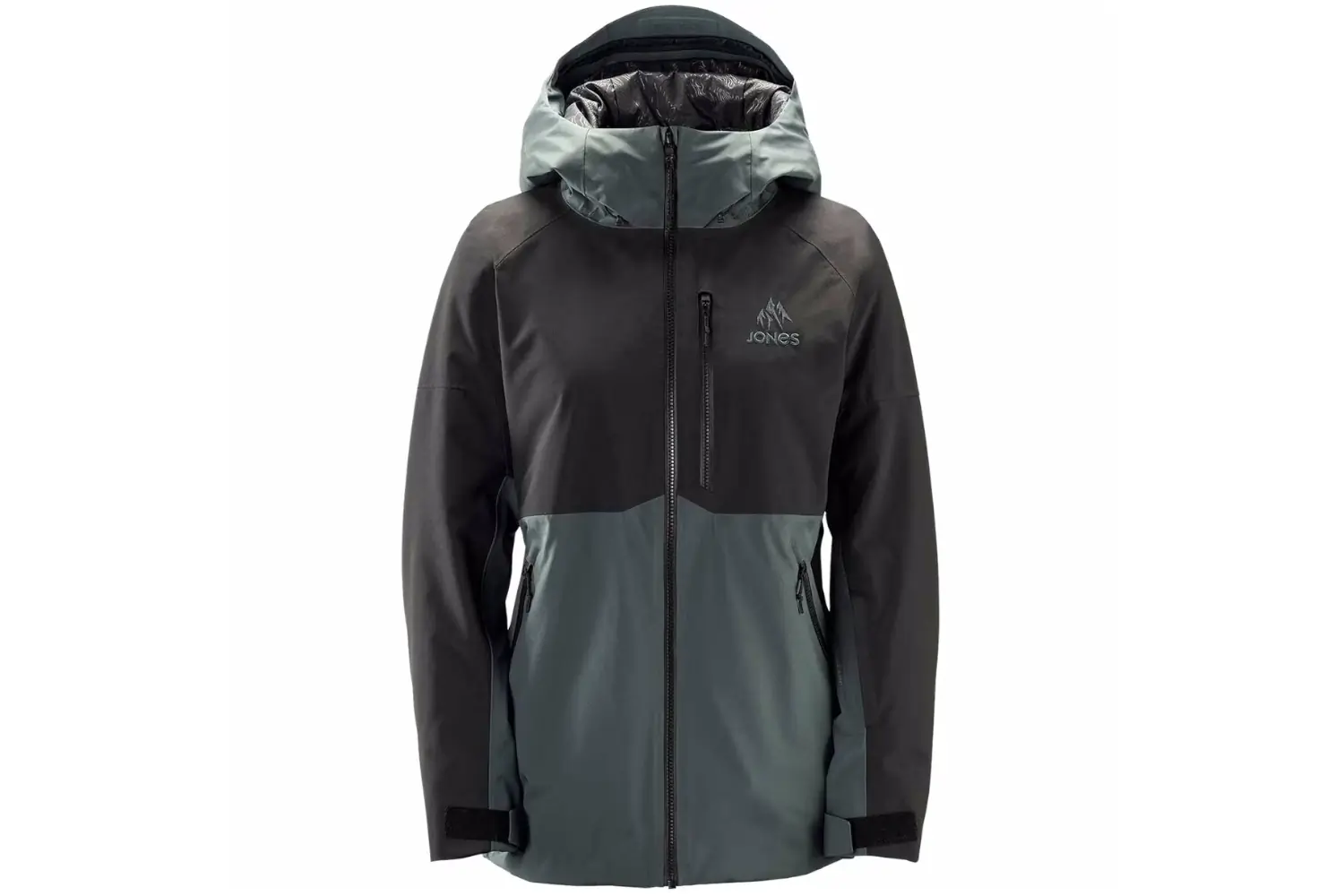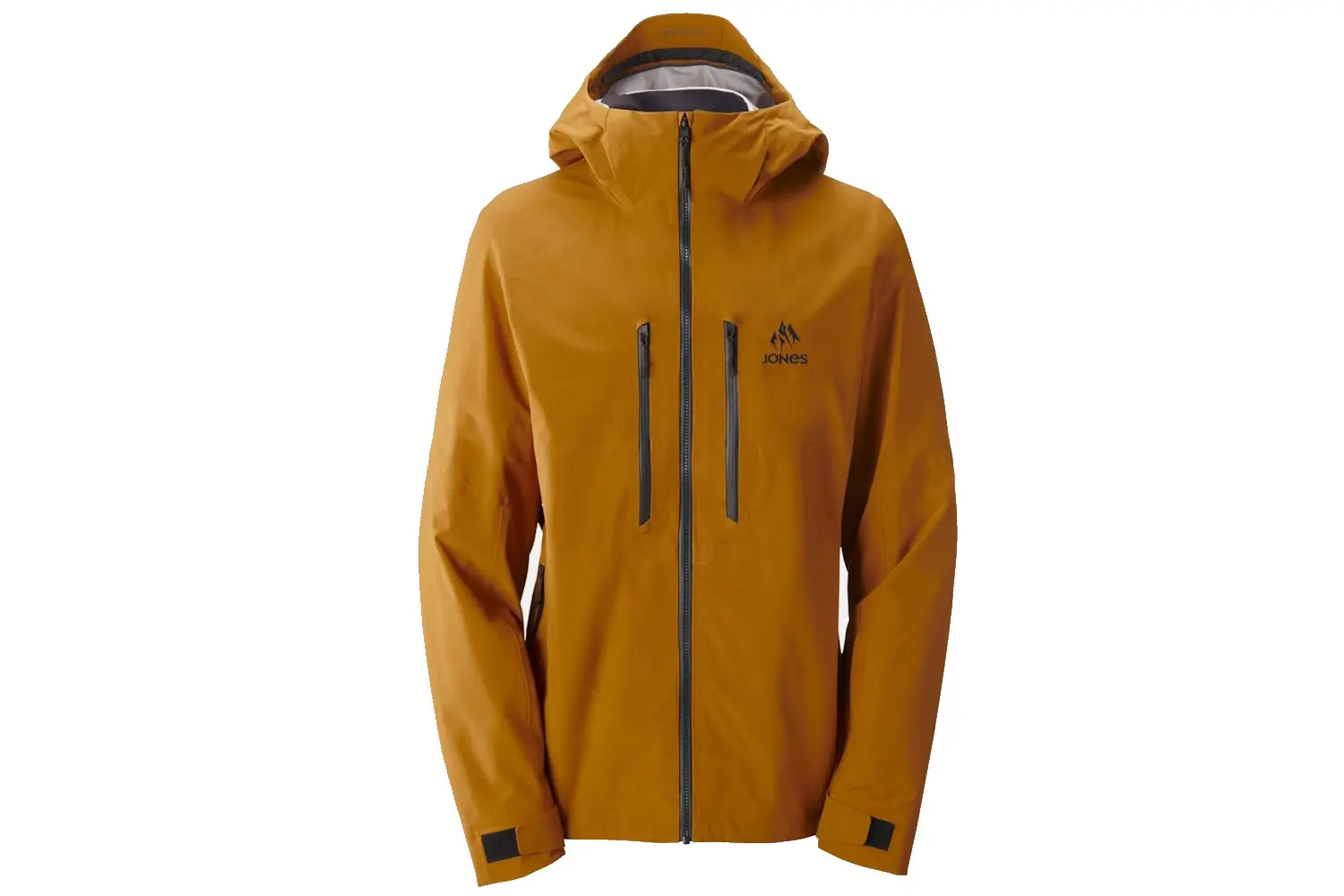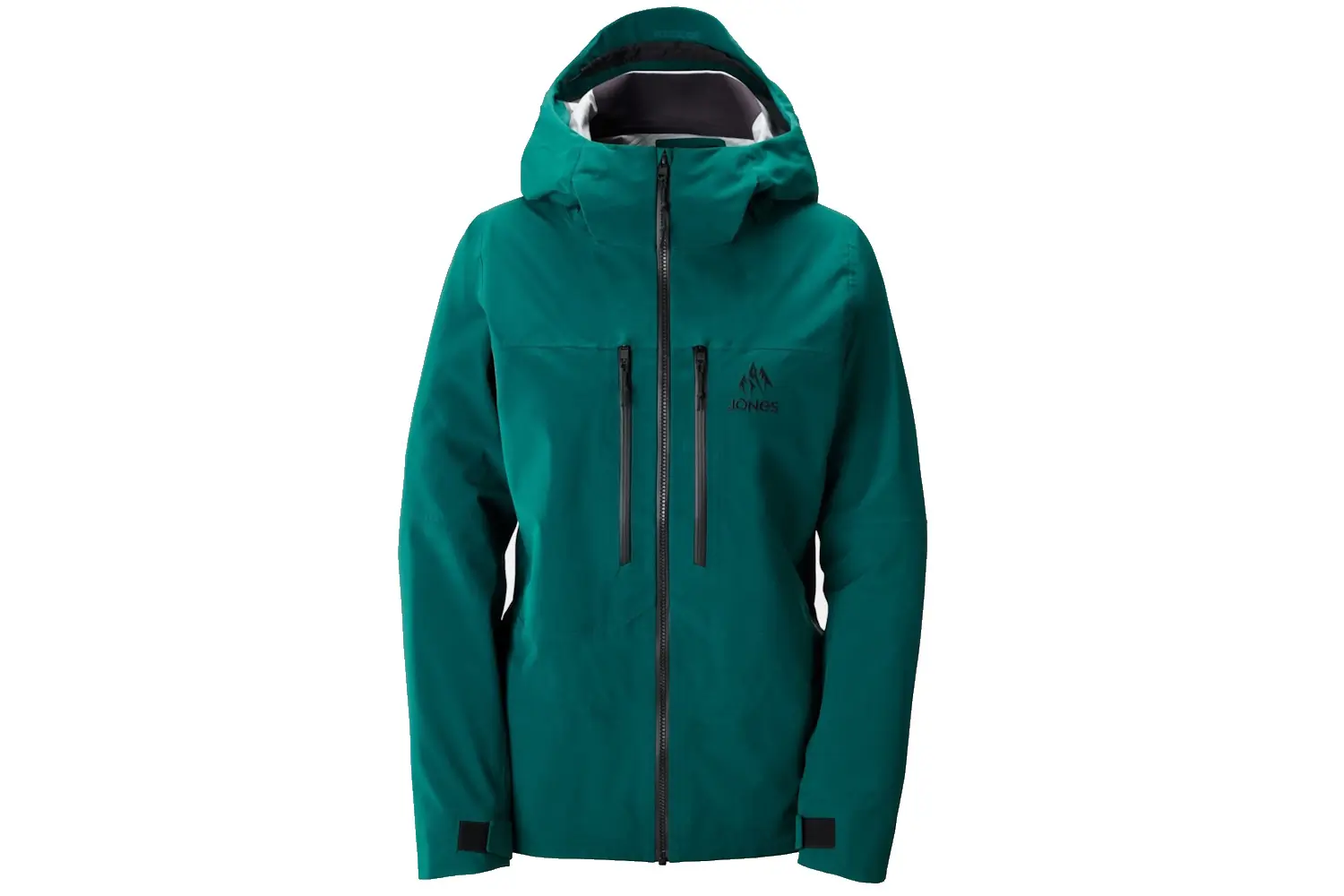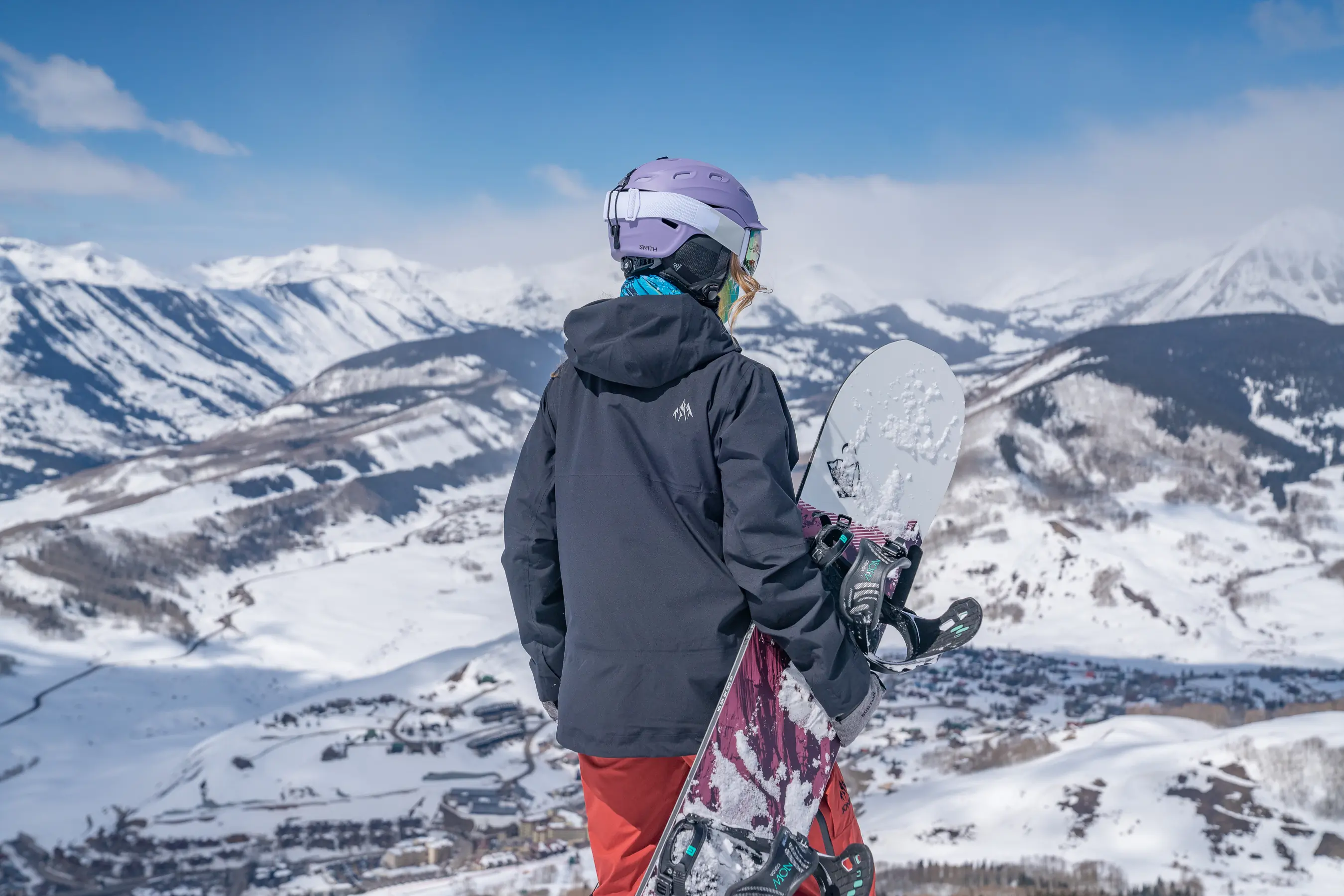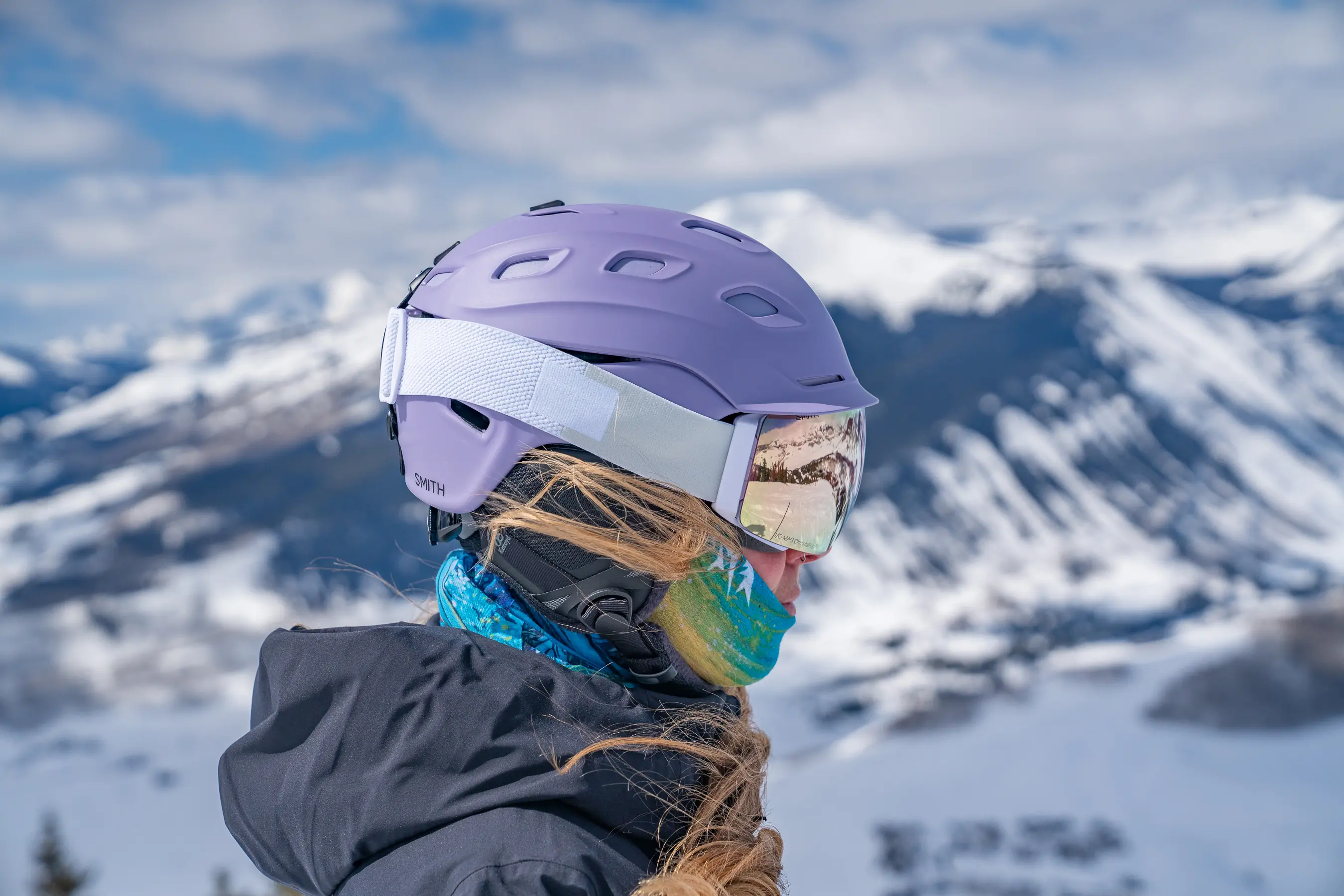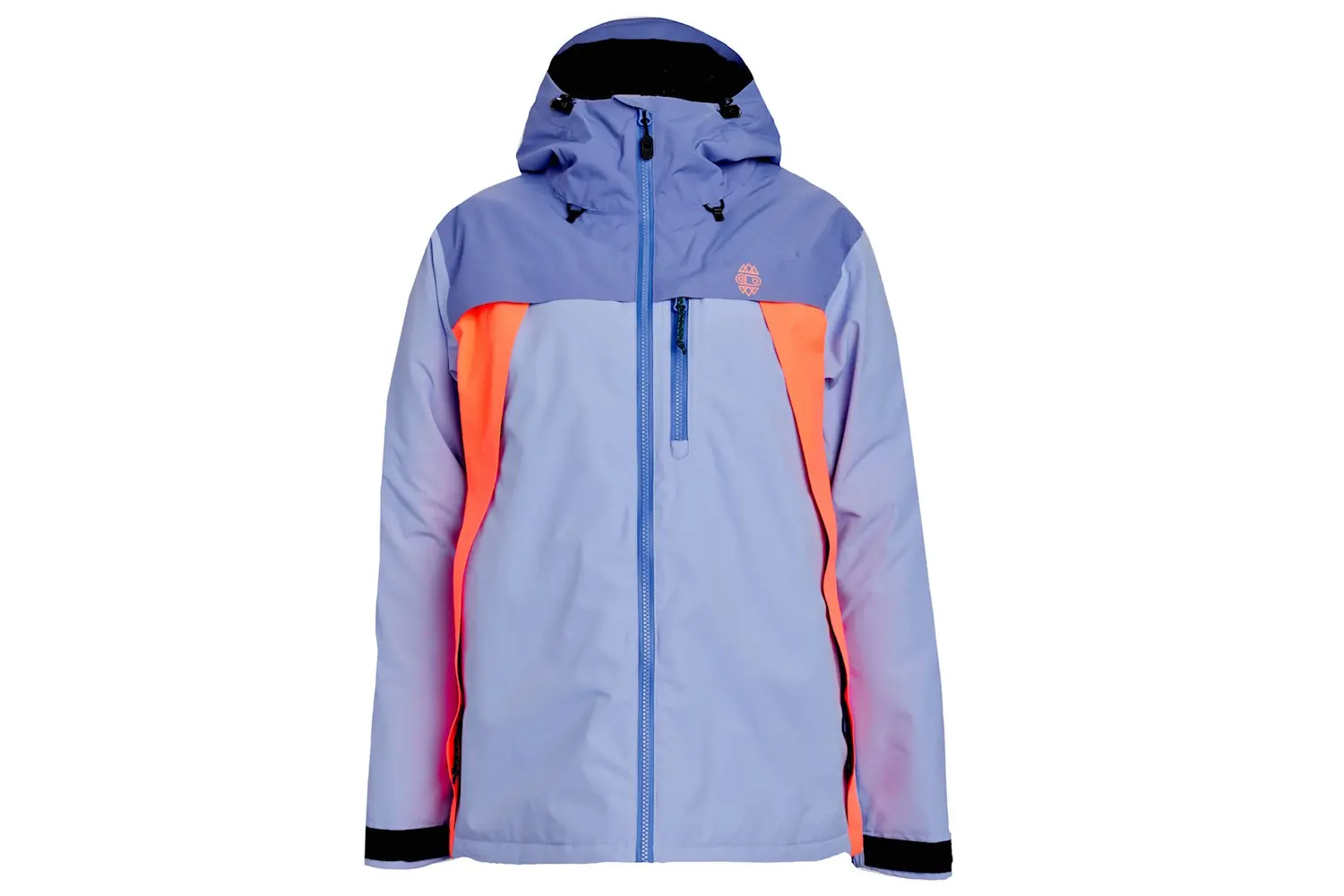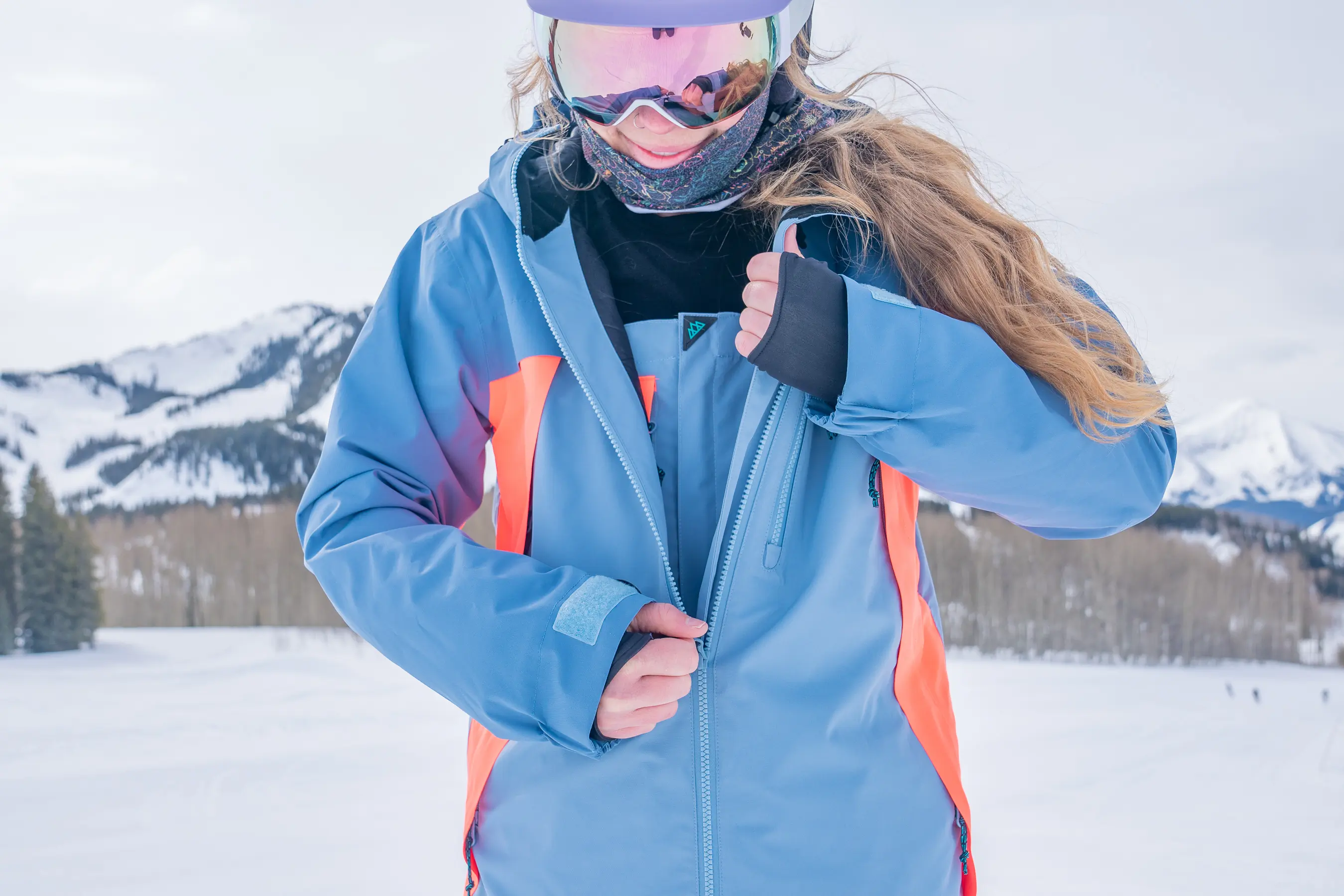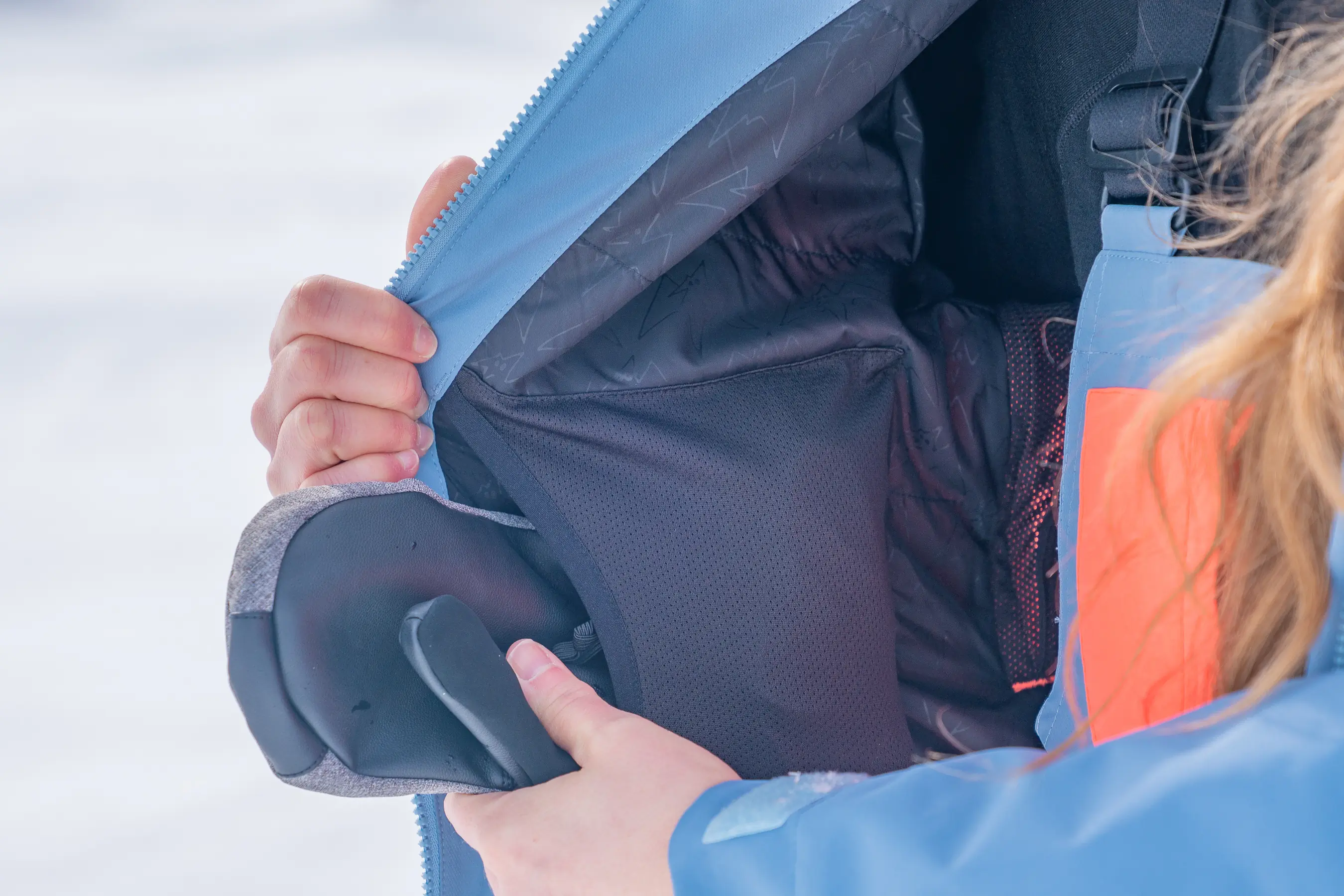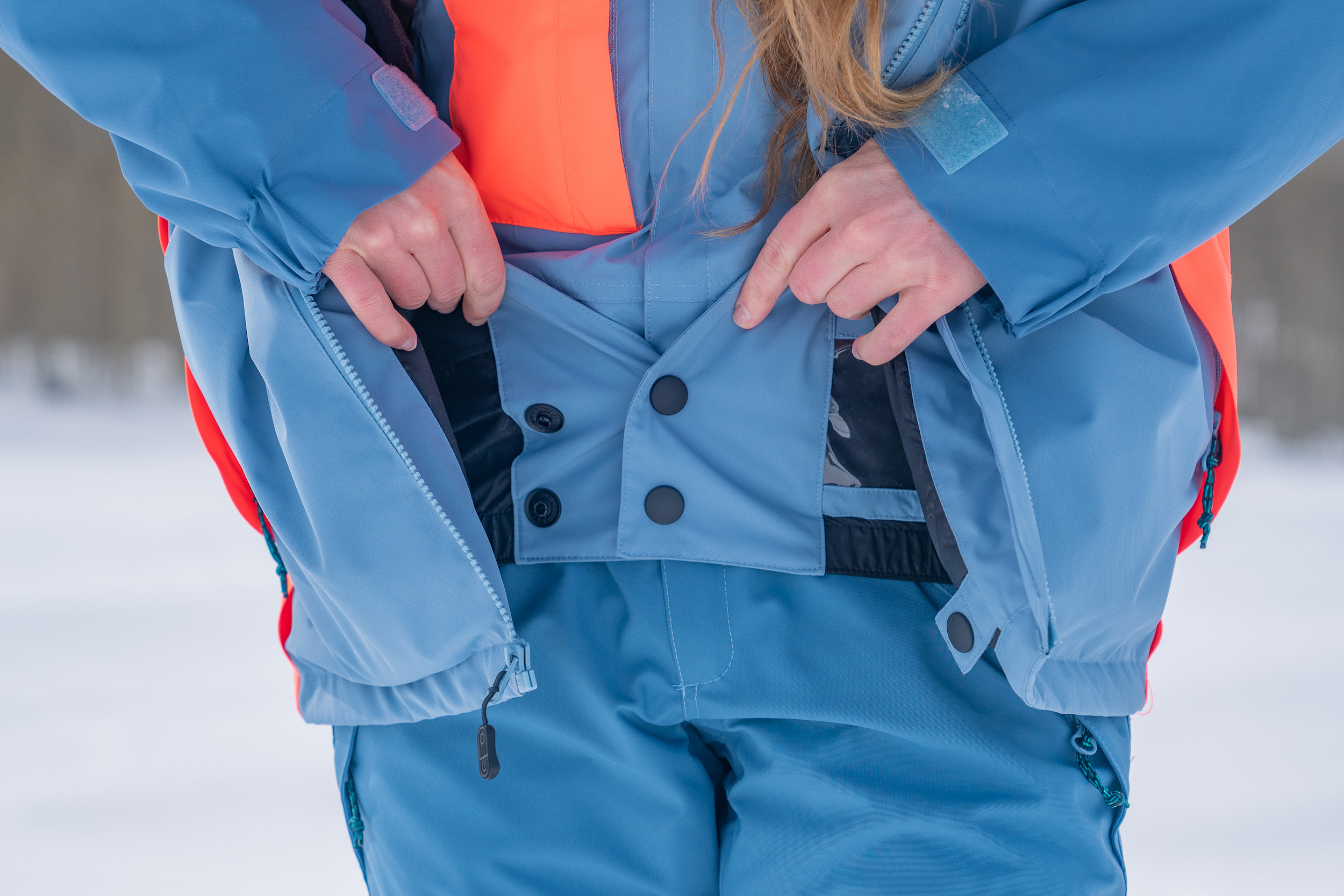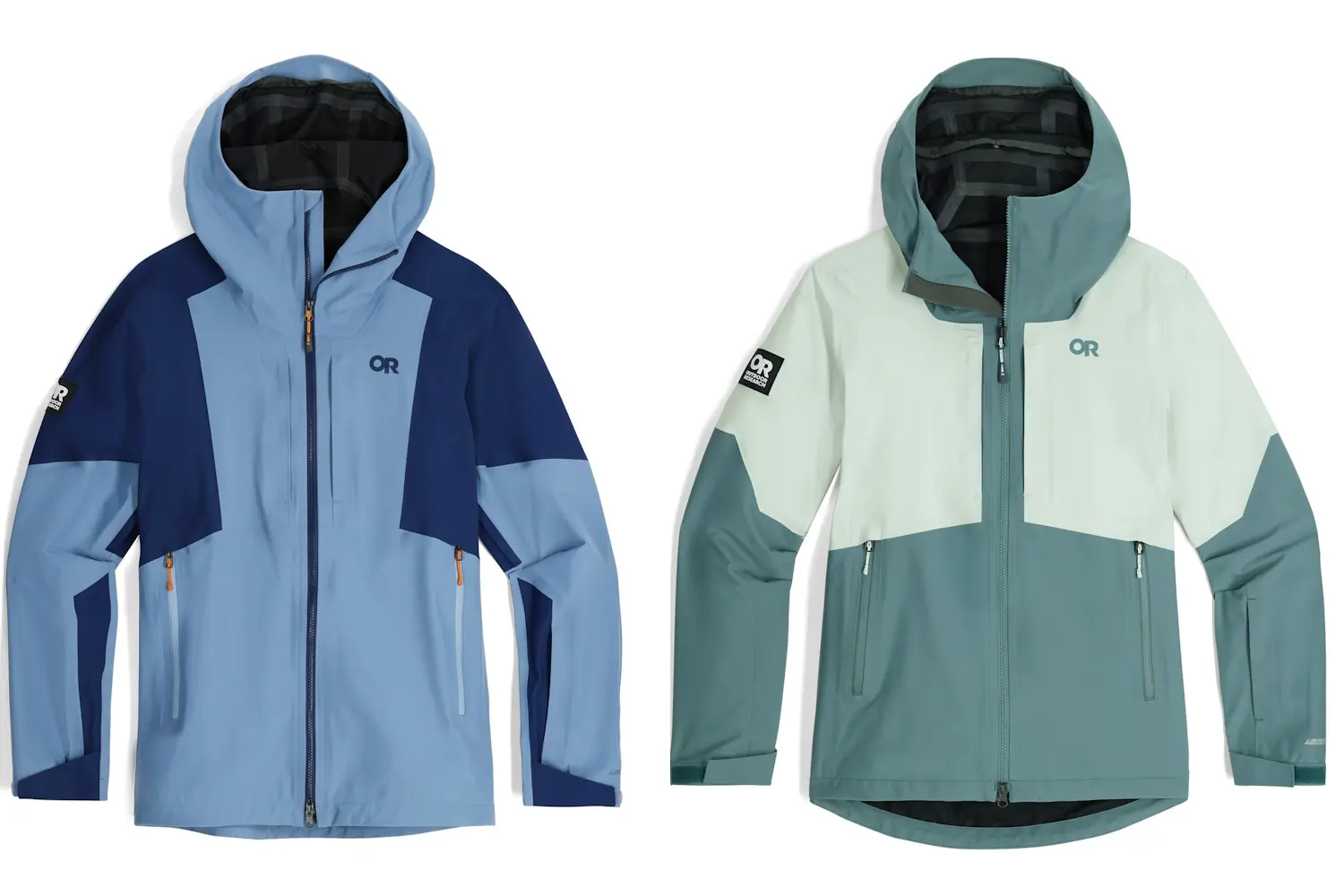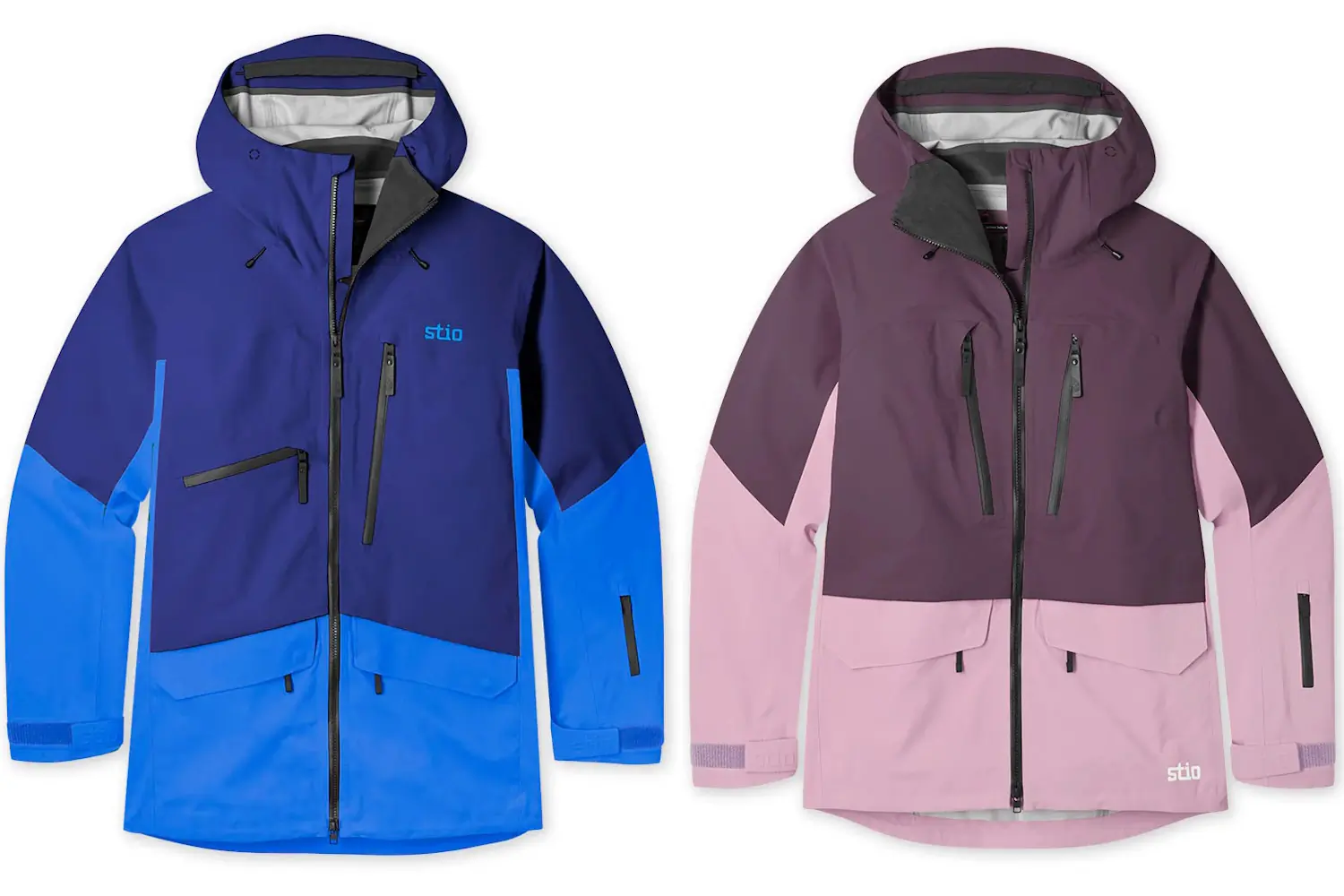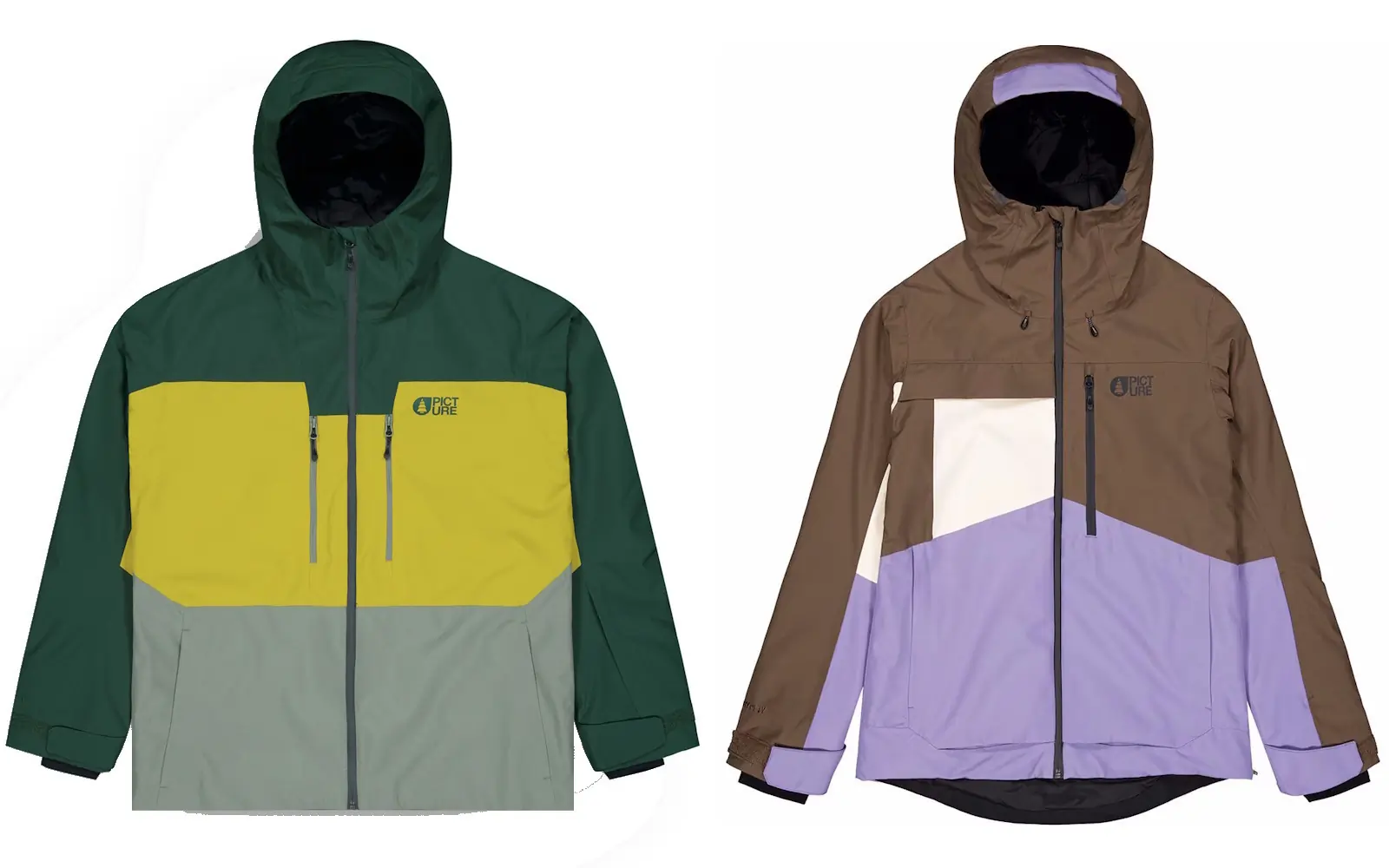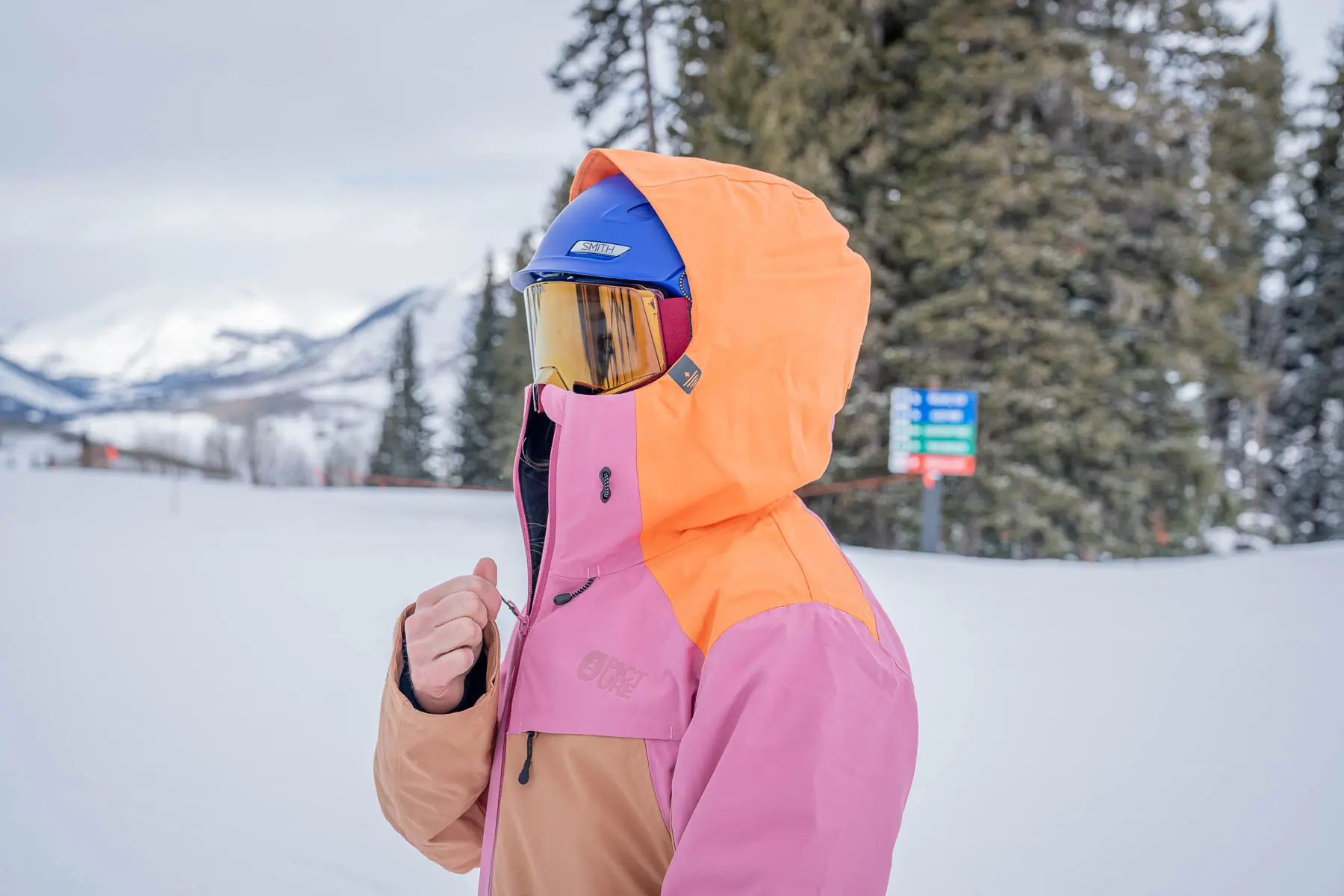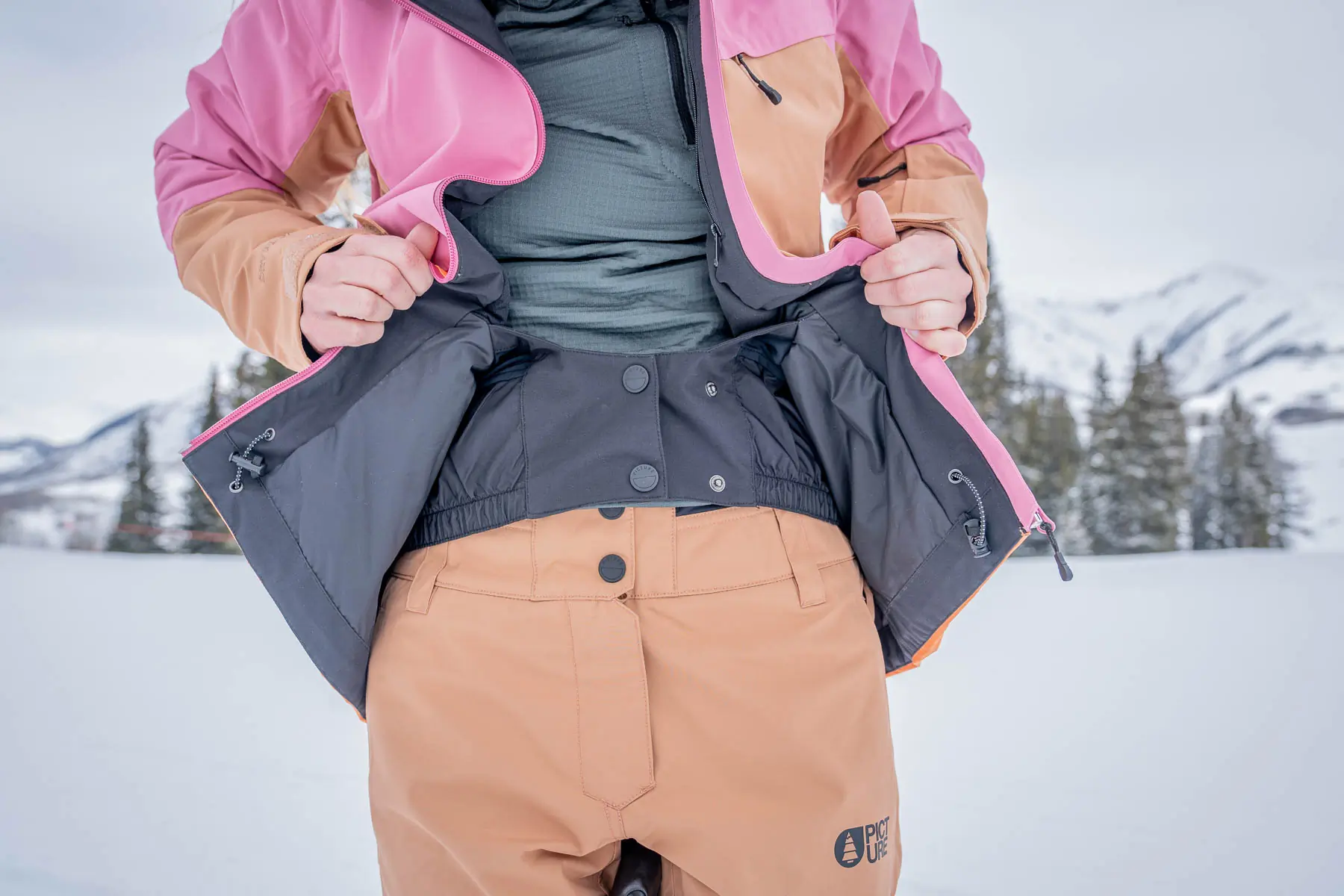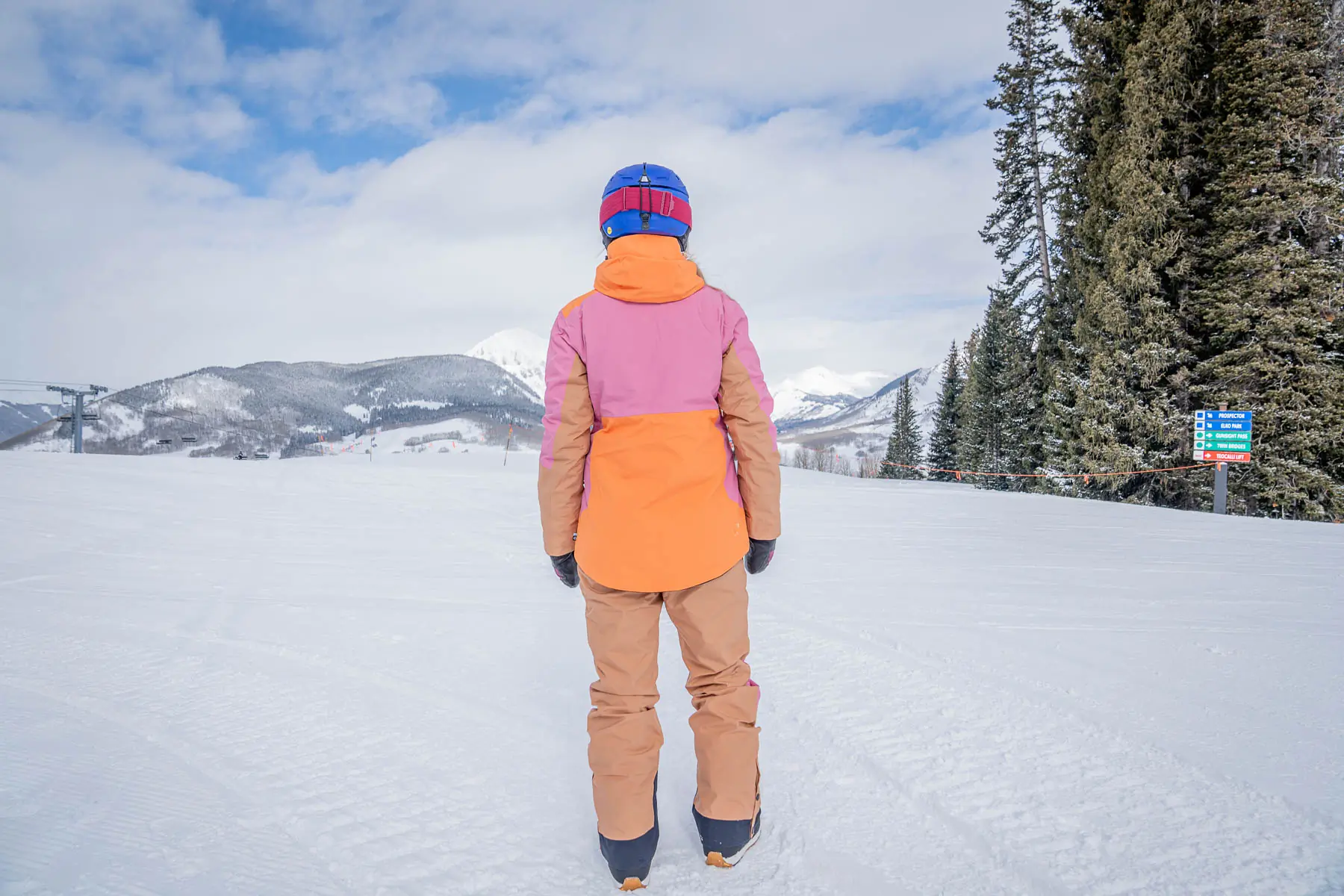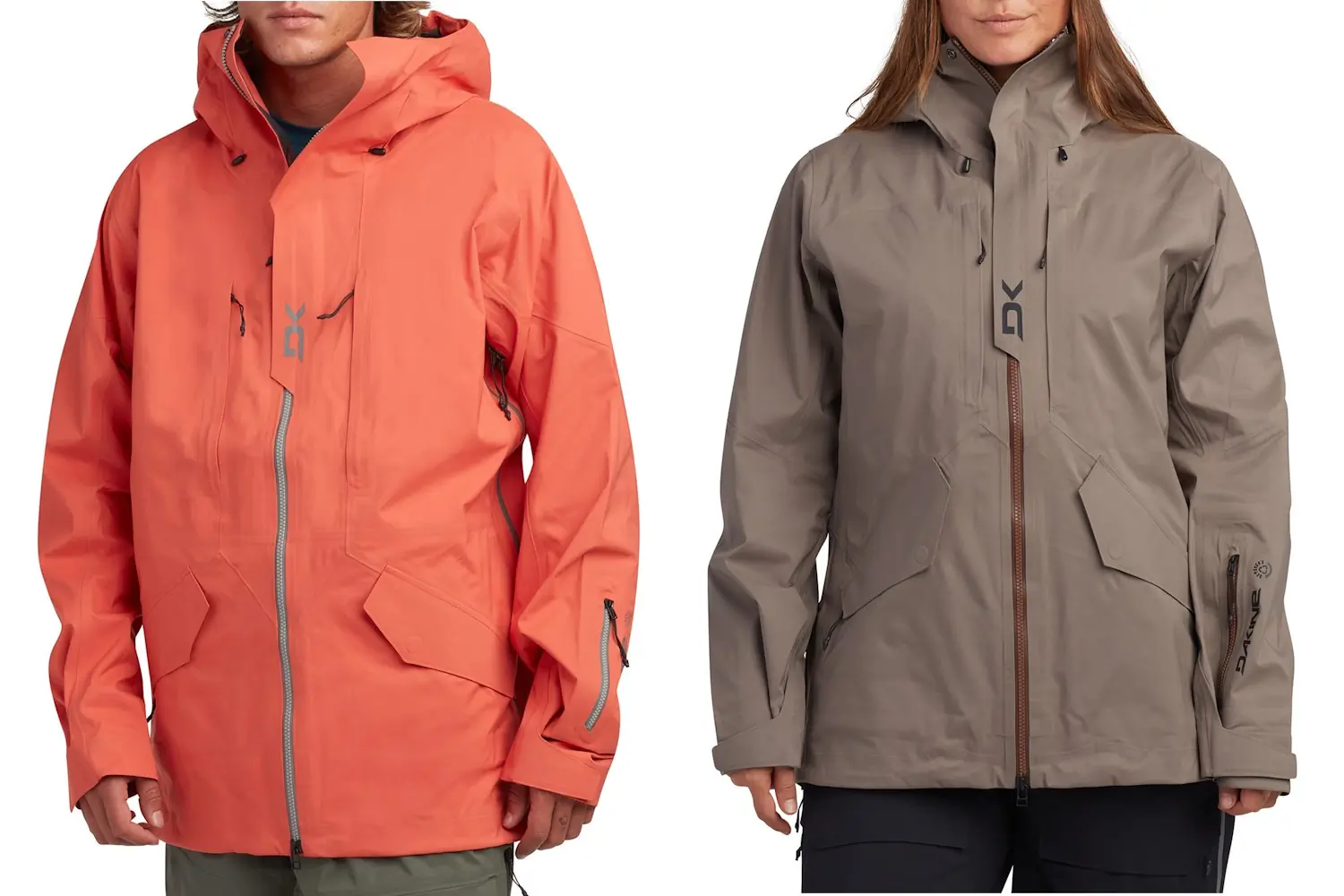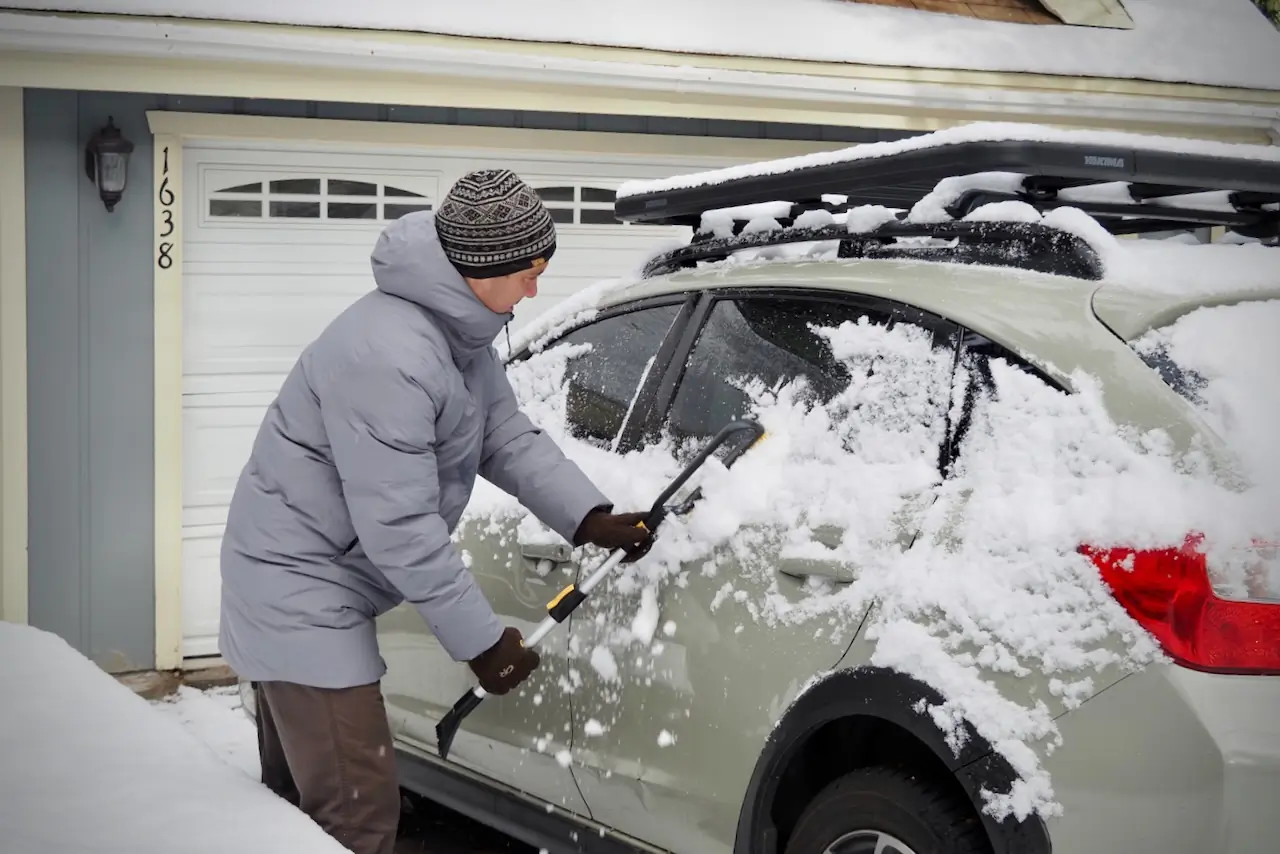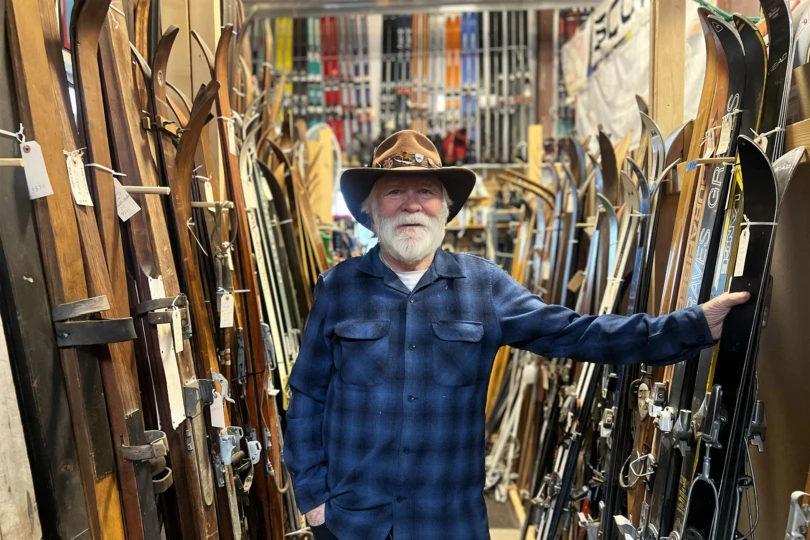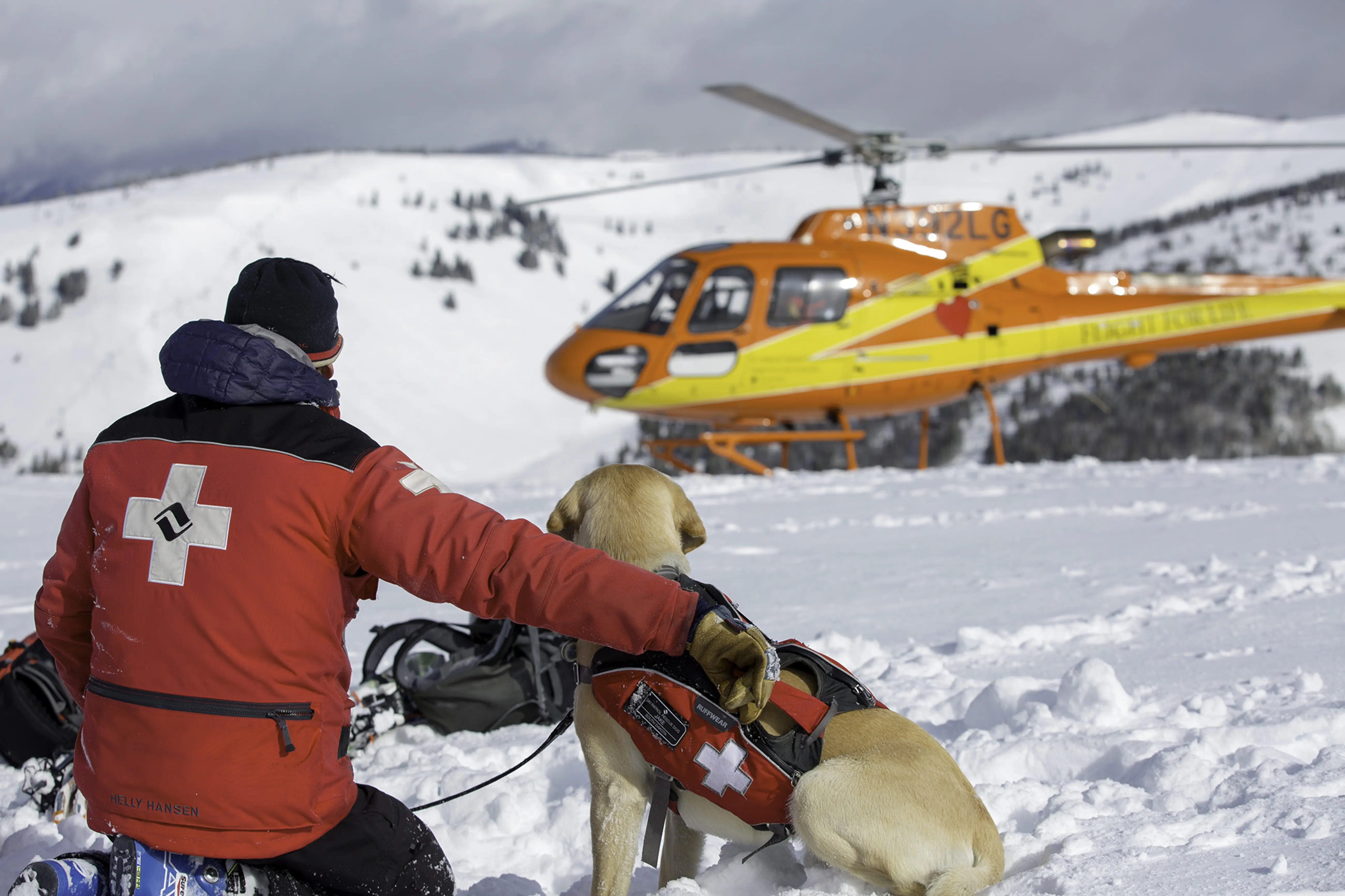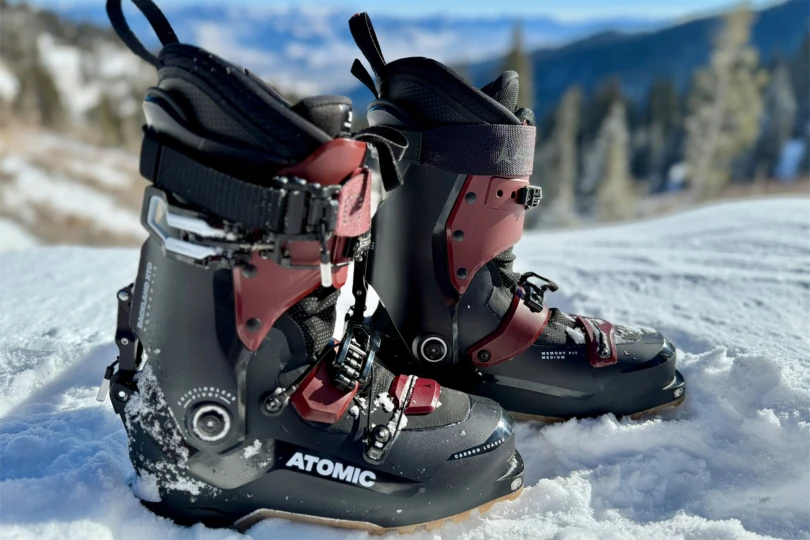Few feelings rival slashing fresh powder on a snowboard. But when the storm’s dumping, you’ll want a snowboard jacket that keeps you warm, dry, and ready to ride. Fortunately for us, snowboard jackets are more technical and tougher than ever.
With so many solid options out there, we cut through the noise — researching, talking to experts, and testing jackets in the field — to help you find your perfect piece.
One of the top builds, the TREW Gear Men’s Cosmic PRIMO Jacket, dishes out extreme waterproofing and breathability while looking sharp and being one of the most innovative, eco-friendly fabrics on the market. Other pieces, like the Burton Men’s Covert 2.0 Jacket, offer a concert of pockets in a 2-layer package that checks the gate for milder climates and most riders with a friendlier price tag. For splitboarding tours or bootpacking in-bounds, the Patagonia PowSlayer Jacket offers up breathability, while the Jones Dark Start Recycled Hoodie delivers insulation in a stretchy, durable package.
Editor’s Note: We updated our Snowboard Jackets buyer’s guide on October 15, 2025, with the addition of the field-tested and awarded Patagonia PowSlayer Jacket. We also added an extended rating system that includes Weather Protection, Fit and Mobility, Durability and Construction Quality, plus Breathability and Ventilation. Scope out the nitty-gritty in the Snowboard Jackets Rating System section below.
Read more of our favorite field-tested fits in our Best Snowboard Jackets for Men roundup.
The Best Snowboard Jackets of 2025-2026
Best Insulated Snowboard Jacket for Women
Burton Women’s Reserve Insulated Stretch Slim Jacket
8.9/10 RatingBest Lightweight Snowboard Jacket for Backcountry Travel
Patagonia Women’s PowSlayer Jacket
9/10 RatingTrew Gear Men’s Cosmic PRIMO Jacket
-
Weather Protection
9.0
-
Fit and Mobility
8.0
-
Durability and Construction Quality
9.0
-
Breathability and Ventilation
8.5
- Shell: 3-layer shell 100% recycled nylon
- Insulated: No
- Waterproof (mm)/breathability (g) rating: 20,000/20,000
- Number of pockets: 7
- Weight: 723 g
Pros
- Colorful designs stand out
- Heavy-duty fabric kept us warm
- Super durable and sustainable 100% recycled PRIMO Fabric
Cons
- Expensive investment
- Hood does not fit flush over helmet
Trew Gear Women’s Stella PRIMO Jacket
-
Weather Protection
9.0
-
Fit and Mobility
8.0
-
Durability and Construction Quality
9.0
-
Breathability and Ventilation
8.5
- Shell: PNW 3L Primo Fabric woven with 100% recycled nylon, Bluesign certified
- Insulation: No
- Waterproof (mm)/breathability (g) rating: 20,000/20,000
- Number of pockets: 7
- Weight: 624 g
Pros
- Top-tier fit and style that we love
- Sustainable inhouse fabric that’s 100% recycled and 20K waterproof
- Fully seam taped
- RECCO reflector
Cons
- We wish there was a zippered internal chest pocket but love the other pockets
- Pricier side
Burton Men’s Covert 2.0 Jacket
-
Weather Protection
7.0
-
Fit and Mobility
8.0
-
Durability and Construction Quality
7.0
-
Breathability and Ventilation
7.0
- Shell: 2-layer Burton DryRide membrane
- Insulated: 80g ThermacoreECO
- Waterproof (mm)/breathability (g) rating: 10,000/5,000
- Number of pockets: 10
- Weight: 992 g
Pros
- The hand pockets are lined with micro fleece — a nice touch
- 10 total pockets on the exterior and interior
- XXS to XXXL offered for plenty of size variety
Cons
- Waterproofness level might not be high enough for folks in high moisture regions
686 Athena Insulated Jacket
-
Weather Protection
7.0
-
Fit and Mobility
8.0
-
Durability and Construction Quality
7.0
-
Breathability and Ventilation
7.0
- Shell: 2-layer infiDRY
- Insulated: Yes, body-mapped with InfiLOFT Insulation — 80 g in body, 60 g in sleeves, 40 g in hood
- Waterproof (mm)/breathability (g) rating: 10,000/10,000
- Number of pockets: 6
- Weight: 939g
Pros
- The tricot-lined collar is always a favorite for our lower face
- Helmet compatible hood
- Functional pockets
- Fully taped seams
Cons
- Not the most waterproof for moisture-rich storms
- No eco-friendly upgrades
Flylow Roswell Jacket
-
Weather Protection
8.0
-
Fit and Mobility
8.2
-
Durability and Construction Quality
8.0
-
Breathability and Ventilation
7.0
- Shell: 2-layer 100% polyester hardshell
- Insulated: 60 g Spaceloft synthetic insulation
- Waterproof (mm)/breathability (g) rating: 15,000/10,000
- Number of pockets: 7
- Weight: 975 g
Pros
- Spacious 13-inch vents underarm
- Great windproofness
Cons
- Not the most waterproof/breathable option for super high moisture climates
Burton Women’s Reserve Insulated Stretch Slim Jacket
-
Weather Protection
8.9
-
Fit and Mobility
8.5
-
Durability and Construction Quality
7.9
-
Breathability and Ventilation
6.9
- Shell: DRYRIDE 2-Layer 100% recycled polyester plain weave stretch; 100% nylon taffeta with 85% nylon, 15% spandex stretch woven upper back panel
- Insulated: Yes, 80g in body, 40g in sleeves, insulated hood
- Waterproof (mm)/breathability (g) rating: 20K/20K
- Number of pockets: 5
- Weight: Unavailable
Pros
- Insulated chest pocket for devices
- Slim fit is stylish and bulk-free
- Softly lined hand pockets
- Roomy hood fits over helmet
Cons
- Insulation might make this pick is too toasty
Patagonia Women’s PowSlayer Jacket
-
Weather Protection
9.0
-
Fit and Mobility
9.0
-
Durability and Construction Quality
9.0
-
Breathability and Ventilation
9.0
- Shell: 3-layer 80-denier 100% recycled nylon plain-weave GORE-TEX Pro ePE fabric with a DWR finish
- Insulated: No
- Waterproof (mm)/breathability (g) rating: Not available
- Number of pockets: 7
- Weight: 193 g
Pros
- Lightweight
- Plenty of pockets
- Helmet-compatible hood
Cons
- Stains are hard to remove
- Light material can feel a bit lean with freezing, harsh wind
Our Other Favorite Shred-Worthy Snowboard Jackets
-
Weather Protection
8.9
-
Fit and Mobility
8.5
-
Durability and Construction Quality
8.0
-
Breathability and Ventilation
8.5
- Shell: 3-layer with 100% recycled nylon/polyamide face fabric and tricot backer
- Insulation: None
- Waterproof (mm)/breathability (g) rating: 20,000/20,000
- Number of pockets: 5 – 1 zip chest, 2 zip hand, 1 internal mesh goggle pocket, 1 zip sleeve pass pocket
- Weight: 550 g
Pros
- Roomy pockets
- Baggy freeride cut
- Feels lightweight
- Super waterproof-breathable
Cons
- If you're looking for a closer-fitting, athletic style, look elsewhere
- Lacks traditionally angled hand pockets
-
Weather Protection
8.0
-
Fit and Mobility
8.5
-
Durability and Construction Quality
8.0
-
Breathability and Ventilation
7.0
- Fit: Regular
- Insulation: Yes, 85% recycled insulation
- Shell: 2-Layer infiDRY fabric plus PFAS-free DWR
- Waterproof (mm) / breathability (g) rating: 20K/15K
- Weight: 1,003 g
Pros
- Generous pockets and insulated phone pocket
- Cozy insulation
- Baggy fit for freedom of movement
- Wrist gaiters have thumbholes and transform into mittens
Cons
- Might have too much insulation for warm spring days
- Wrist gaiters might feel cumbersome to some
-
Weather Protection
8.0
-
Fit and Mobility
9.0
-
Durability and Construction Quality
8.0
-
Breathability and Ventilation
6.0
- Shell: 100% recycled 30-denier 4-way stretch polyester, PFC‑free DWR
- Insulation: 100% recycled synthetic Air Flake polyester
- Waterproof (mm)/breathability (g) rating: DWR-rated 3/10 (water-resistant, not fully waterproof); breathability is 30 CFM (rated 10/10)
- Number of pockets: 5 total – 3 external (one chest, two hand) and 2 internal drop pouches
- Weight: 510 g
Pros
- Breathable insulation layer
- Super stretchy and mobile across shoulders
- Excellent for layering beneath a shell
- Stows in external chest pocket
Cons
- Need to size up to fit over a shell
- Water resistant but not waterproof
-
Weather Protection
8.8
-
Fit and Mobility
8.0
-
Durability and Construction Quality
8.0
-
Breathability and Ventilation
7.0
- Shell: 3-layer 87% recycled polyester, 13% spandex, PFC-free DWR
- Insulated: No
- Waterproof (mm)/breathability (g) rating: 20,000/20,000
- Number of pockets: 5
- Weight: Unavailable
Pros
- Huge hand pockets (detachable goggle cloth included)
- Generously fleece-lined inner collar
- Unique neck vent and brimmed hood
- Roomy and stylish
Cons
- Fabric is a bit loud
- Not the lightest jacket but very protective
- Hood fit works over a helmet but could be better tailored
-
Weather Protection
8.9
-
Fit and Mobility
8.9
-
Durability and Construction Quality
8.5
-
Breathability and Ventilation
7.5
- Shell: 100% recycled 2-layer body-mapped 4-way stretch polyester, 100% recycled stretch polyester liner, PFC-free DWR
- Insulated: Lightly insulated with biodegradable and recycled PrimaLoft Bio
- Waterproof (mm)/breathability (g) rating: 20,000/20,000
- Number of pockets: 9
- Weight: 920 g
Pros
- Powder skirt included
- Helmet-compatible hood
- 100% recycled materials from fabric to insulation and zip pulls
Cons
- No bright color options
- Insulation might not be your top pick
-
Weather Protection
8.9
-
Fit and Mobility
8.9
-
Durability and Construction Quality
8.5
-
Breathability and Ventilation
7.5
- Shell: 100% recycled polyester 4-way stretch fabric, PFC-free DWR, interior 100% recycled polyester liner
- Insulation: 100% recycled PrimaLoft PURE, eco-friendly synthetic insulation
- Waterproof (mm)/breathability (g) rating: 20K/20K
- Number of pockets: 7
- Weight: 800 g
Pros
- Roomier fit for comfortable layering and liberal moves
- Lightly insulated for cold days on the ski lift
- Super functional pockets
- Stylish
Cons
- An insulated jacket isn’t our top choice for backcountry endeavors
-
Weather Protection
9.4
-
Fit and Mobility
9.4
-
Durability and Construction Quality
9.0
-
Breathability and Ventilation
8.0
- Shell: 3-layer 100% recycled polyester fabric and PFC-free DWR
- Insulated: No
- Waterproof (mm)/breathability (g) rating: 30,000/30,000
- Number of pockets: 9
- Weight: 786 g
Pros
- Soft, stretchy fabric for unlimited movement
- Lifetime warranty
- 100% recycled material
- Lightweight
Cons
- Lightweight also means it's easy to get cold when not moving or on the chairlift
- Among the most expensive jackets tested
-
Weather Protection
9.4
-
Fit and Mobility
9.4
-
Durability and Construction Quality
9.0
-
Breathability and Ventilation
8.0
- Shell: 3-layer 100% recycled polyester 70-denier four-way stretch face fabric, 100% recycled 20-denier polyester backer, PFC-free DWR, recycled YKK Natulon and YKK VISLON AquaGuard zippers
- Insulated: No
- Waterproof (mm)/breathability (g) rating: 30,000/30,000
- Number of pockets: 6
- Weight: 590 g
Pros
- Supple and soft yet durable
- Eco-friendly materials including 100% recycled face fabric, backer, zippers
- Lifetime warranty
- Unique infographics for backcountry travel and safety
Cons
- Lightweight — not insulated one bit, which could be a deterrent for some riders
- The burly zipper teeth are a bit rough against the hands
- An investment
-
Weather Protection
8.0
-
Fit and Mobility
7.0
-
Durability and Construction Quality
7.5
-
Breathability and Ventilation
7.0
- Shell: 100% recycled 2-layer Eco-Vortex stretch polyester face fabric, PFC-free DWR
- Insulated: 100% post-consumer recycled PrimaLoft 60 g/40 g insulation
- Waterproof (mm)/breathability (g) rating: 30,000/20,000
- Number of pockets: 5
- Weight: N/A
Pros
- Mega spacious pockets
- Tapered wrist cuffs
- Extremely waterproof to withstand a coastal snow climate
Cons
- Hand pocket entrances are angled a bit high
- Insulation and coverage is overkill for backcountry use
-
Weather Protection
7.5
-
Fit and Mobility
7.5
-
Durability and Construction Quality
8.0
-
Breathability and Ventilation
9.0
- Shell: 3-layer electrospun AscentShell membrane with a 40-denier by 65-denier weave, 50-denier polyester backer
- Insulated: No
- Waterproof (mm)/breathability (g) rating: 10,000/20,000
- Number of pockets: 7
- Weight: 576 g (women’s); 627 g (men’s)
Pros
- Lighterweight shell
- Functional
- Plenty of pocket options
Cons
- Leaner, athletic fit means there’s not as much room for dense midlayers on cold lift laps
-
Weather Protection
9.0
-
Fit and Mobility
8.5
-
Durability and Construction Quality
9.0
-
Breathability and Ventilation
7.5
- Shell: 3L 100% recycled PeakProof, 150-denier face, 20-denier tricot backer, 80/20 PFC-free DWR finish
- Insulated: No
- Waterproof (mm)/breathability (g) rating: 20,000/10,000
- Number of pockets: 8
- Weight: 876 g (men's); 766 g (women's)
Pros
- Freeride, baggier fit for freedom of movement
- Ample, spacious pockets
- Hood fits over helmet easily
Cons
- Pricier choice
- Not primary pick for backcountry and uphilling
-
Weather Protection
8.0
-
Fit and Mobility
8.0
-
Durability and Construction Quality
7.5
-
Breathability and Ventilation
6.0
- Shell: 2-layer 100% Circular Polyester sourced from factory scraps and recycled jackets
- Insulated: Recycled Thermal STD 60 g in the body and sleeves, 40 g in the hood
- Waterproof (mm)/breathability (g) rating: 20,000/15,000
- Number of pockets: 6
- Weight: 964-1,276 g
Pros
- Bonus goggle cleaner included
- Synthetic insulation retains warmth through high moisture
- Moderate price
- Very sustainable design
Cons
- Not ideal for warm conditions or uphill travel
- Jacket is on the heavier side
-
Weather Protection
8.0
-
Fit and Mobility
7.0
-
Durability and Construction Quality
7.0
-
Breathability and Ventilation
7.9
- Shell: 3-layer 4-way stretch recycled polyester with C6 DWR
- Insulated: No
- Waterproof (mm)/breathability (g) rating: 20,000/20,000
- Number of pockets: 7
- Weight: 746 g
Pros
- Vent ports help prevent goggle fogging inside face guard
- Integrated hood visor
- Lengthy, ergonomic fit
Cons
- Internal chest pocket does not have media port
- Full powder skirt does not extend 360-degrees to front
- Not the softest material inside the face guard
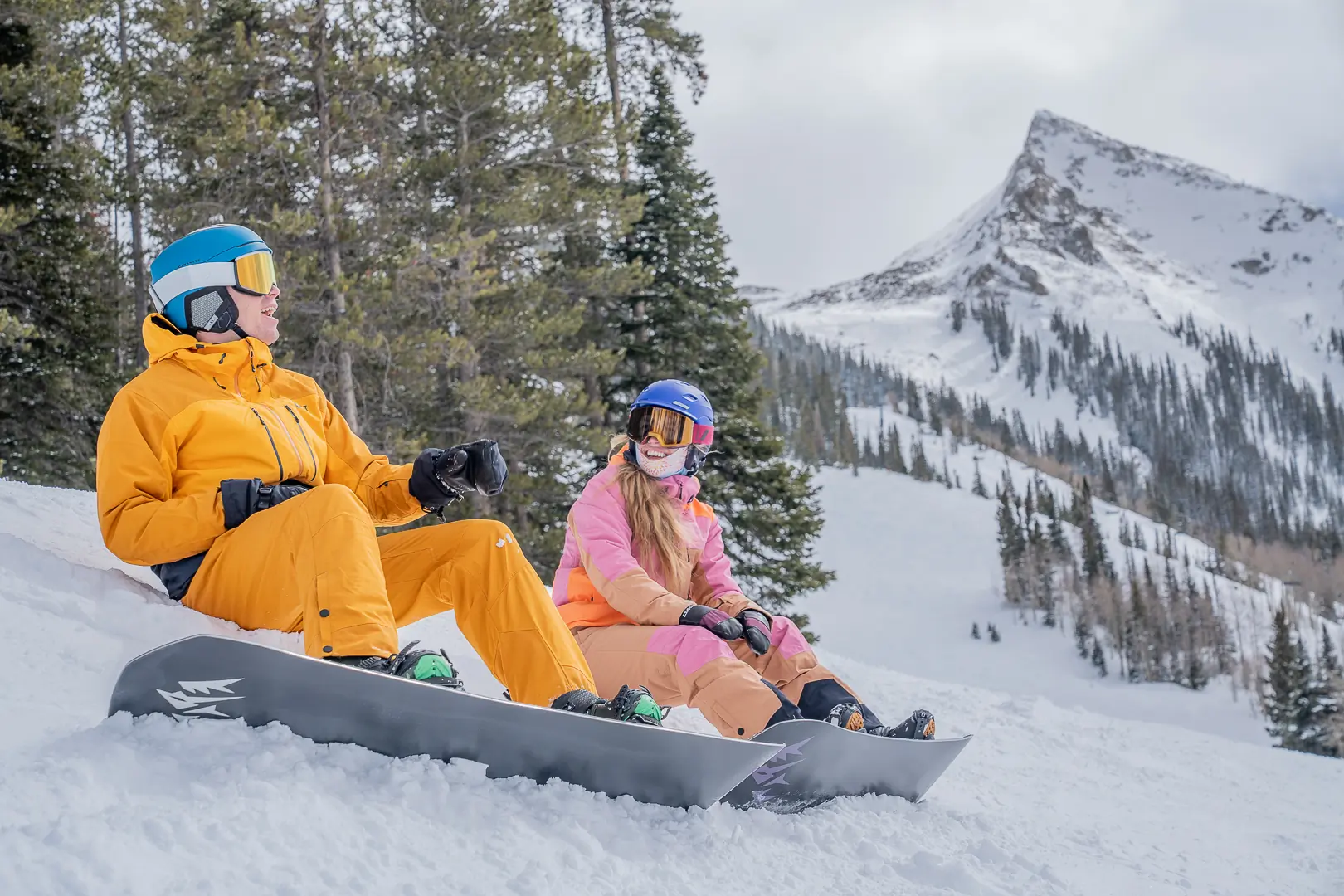
Snowboard Jacket Comparison Chart
Scroll right to view all of the columns: Price, Shell, Waterproof/Breathability, Number of Pockets, Weight.
| Snowboard Jacket | Price | Shell | Waterproof/ Breathability | Number of Pockets | Weight |
| TREW Gear M’s Cosmic PRIMO & W’s Stella PRIMO Classic | $499 | 3-layer | 20K/20K | 7 | 624-723 g |
| Burton M’s Covert 2.0 | $270 | 2-layer Burton DryRide | 10K/5K | 10 | 992 g |
| 686 W’s Athena Insulated | $210 | 2-layer infiDRY | 10K/10K | 5 | Unavailable |
| Flylow M’s Roswell | $300 | 2-layer 100% polyester hardshell | 10K/10K | 7 | 975 g |
| Burton W’s Reserve Insulated Stretch Slim | $260 | DRYRIDE 2-Layer 100% recycled polyester plain weave stretch; 100% nylon taffeta with 85% nylon, 15% spandex stretch woven upper back panel | 20K/20K | 5 | Unavailable |
| Patagonia W’s PowSlayer & M’s | $799 | 3-layer 80-denier 100% recycled nylon plain-weave GORE-TEX Pro ePE fabric with a DWR finish | Not available | 7 | 193 g |
| Salomon Absolute 3L W’s Shell & M’s | $420 | 3-layer with 100% recycled nylon/polyamide face fabric and tricot backer | 20K/20K | 5 | 550 g |
| 686 Hydra Insulated | $300 | 2-Layer infiDRY fabric plus PFAS-free DWR | 20K/15K | 8 | 1,003 g |
| Jones Dark Start Recycled W’s & M’s | $280 | 100% recycled 30-denier 4-way stretch polyester, PFC‑free DWR | DWR-rated 3/10 (water-resistant, not fully waterproof); breathability is 30 CFM (rated 10/10) | 5 | 510 g |
| L1 Axial | $419 | 3-layer 87% recycled polyester, 13% spandex, PFC-free DWR | 20K/20K | 5 | Unavailable |
| Jones Snowboards M’s & W’s MTN Surf Recycled | $400, $500 | 2-layer 100% recycled body-mapped 4-way stretch polyester | 20K/20K | 9 | 920 g |
| Jones Snowboards M’s & W’s Shralpinist Stretch Recycled | $500, $525 | 3-layer 100% recycled polyester fabric, PFC-free DW | 30K/30K | 6 | 590 g |
| Airblaster W’s Sassy Beast | $320 | 2-layer Eco-Vortex stretch fabric with 100% recycled polyester | 30K/20K | 5 | Unavailable |
| Outdoor Research M’s Skytour AscentShell & W’s Skytour | $429 | 3-layer electrospun AscentShell membrane | 10K/20K | 7 | 576-627 g |
| Stio Figment M’s & W’s | $529 | 3-layer 100% recycled PeakProof, 150-denier face, 20-denier tricot backer, 80/20 PFC-free DWR finish | 20K/10K | 8 | 876 g (men’s); 766 g (women’s) |
| Picture Men’s Object & Women’s Seen | $350 | 2-layer 100% Circular Polyester sourced from factory scraps and recycled jackets | 28K/15K | 6 | 964 to 1276 g |
| Dakine Sender Stretch | $239 | 3-layer 4-way stretch recycled polyester | 20K/20K | 7 | 746 g |
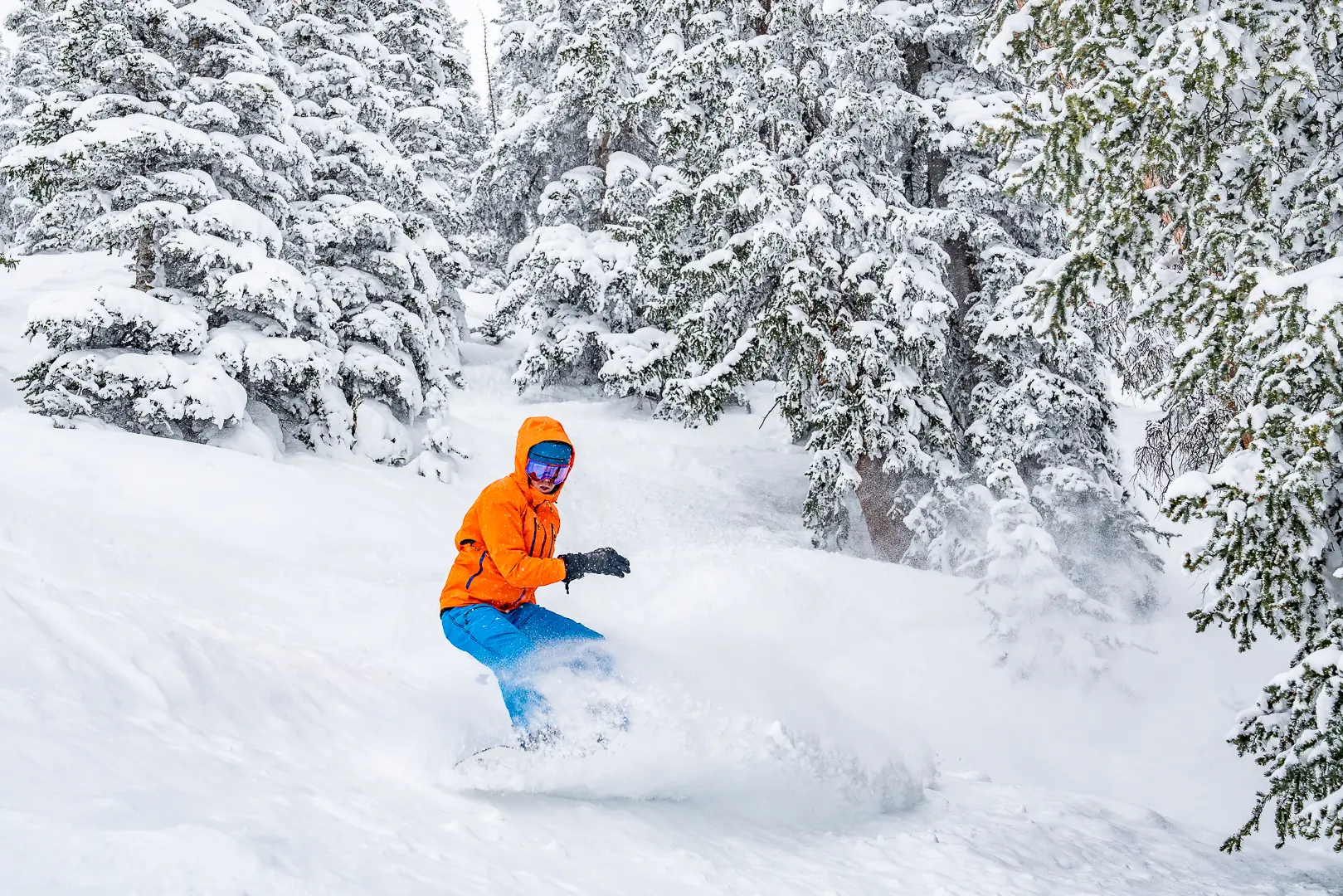



How We Tested Snowboard Jackets
Our GearJunkie snowboard gear testers shred at the resort, head into the backcountry, pow surf, and are certified instructors. We’ve tested snowboard jackets in a range of conditions from California to the Colorado Rockies and in high-alpine environments. Our apparel has barricaded ice-cold wind and blizzard conditions. It’s befriended us on long lift rides, vert-heavy backcountry tours, and while romping through deep powder.
Our Expert Testers
Leading the gear tests, GearJunkie Senior Editor Morgan Tilton specializes in snowsports. She’s been snowboarding since 2002 when she switched from skiing on two planks to one. She tested snowboard jackets a total of 95 hours in 2023 — excluding all the hours she spends shoveling massive amounts in a snow jacket. In 2024, she tested snowboard jackets for 263 hours, in addition to working with gear testers. So far in 2025, she’s tested snowboard jackets for 165 hours across 44 days on snow, covering more than 700 miles and 194,500 feet of descent.
Lead author, photographer, and gear tester Eric Phillips has been snowboarding since 2008. He’s a formerly certified Level II PSIA-AASI instructor and records over 100 days on snow at his home mountain in Crested Butte. Contributor Austin Beck-Doss has been snowboarding since 2005 and has also thrashed jackets around for this guide.


Our Testing Grounds
Tilton has taken laps at ski areas since age 4 at her home mountain, Telluride Ski Resort. While she grew up competing in slopestyle competitions, today she lives in the Elk Mountains, where she snowboards in-bounds at Crested Butte Mountain Resort, splitboard tours and mountaineers in the region’s surrounding backcountry, heads out on sled-accessed adventures, enjoys hut trips and couloirs with homies, and pow surfs in-between. She’s traveled to incredible places with her snowboard, including Mount Washington on Vancouver Island, British Columbia, California’s Big Bear Mountain Resort, and a solo trip along the Powder Highway to Fernie, Kicking Horse, and Revelstoke.
Phillips does a mix of resort snowboarding, backcountry splitboarding, mountaineering, snowmobiling, and pow surfing in his home range of the Elk Mountains and neighboring San Juan Mountains.
The GearJunkie team meets for an annual on-snow test week to grind out turns and swap notes, including two previous gatherings at Crested Butte Mountain Resort, which is known for its expert terrain.
Our Testing Process
While testing snowboard jackets, we consider a range of key attributes: fit, style, durability, functionality, ease of movement, zipper quality, pocket design and utility, waterproofness, breathability, insulation, hood, collar, wrist gaiters, cuffs, and overall value.
We consider the climate and purpose each jacket is best suited. We also consider the most innovative, sustainable, popular, acclaimed, and legacy products across a range of price points and applications.
Our Snowboard Jackets Rating System
We score each snowboard jacket on a 1–10 scale for Weather Protection, Fit and Mobility, Durability and Construction Quality, plus Breathability and Ventilation.
- Weather Protection: While considering weather-proofness, we take into account how the jacket shields moisture and wind.
- Fit and Mobility: Examines how effortlessly the jacket moves with us while going uphill, downhill, ski pole planting, wearing a ski backpack, and bending over, as well as if there are any snag points. We cover men’s and women’s specific iterations in this guide, so we also consider how the jacket is tailored to each gender. That includes articulation around the shoulders, chest, and hips.
- Durability and Construction Quality: Considers the overall material, seams, collar, hood, zippers, and pockets. We consider gender-specific pocket placement and targeted insulation zones.
- Breathability and Ventilation: Takes a look at how effectively the design releases moisture and heat during high-output activity, including the material and mechanical vents.
Rather than being an average, the Overall Rating is based on contextual, editorial judgment, and the complex user experience across various scenarios and conditions. The extended ratings are primary factors but not a comprehensive reflection of the cumulative details we examine in a jacket.


Buyer’s Guide: How to Choose a Snowboard Jacket
Solid snowboard jackets have been on the market for several decades. Back in 1991, Volcom founders Richard Woolcott and Tucker Hall launched their triple-threat apparel lineup for surf, skate, and snow.
Established in 2001, Analog outerwear has been rolling out fashion-stomping pieces ever since. They even won a nod from Time Magazine for the MD Clone Jacket — with a Sony mini-disc and digital music player sewn into the fabric — as one of coolest inventions of 2002. Analog was officially acquired by Burton in 2004.
Most recently, after pioneering Protect Our Winters and Jones Snowboards, Jeremy Jones charged ahead with a leading-edge outerwear line that debuted in 2021-2022.
With so many great options out there for snowboard jackets, one of the biggest dividers is if you’ll be using it for the resort or backcountry.
Backcountry
If you plan to splitboard tour out-of-bounds, you’ll want a premium option from the lot. A solid backcountry jacket will have spacious exterior and interior pockets that are large enough for extra gloves or even splittie skins. Alternatively, if you need to warm them up, you can quickly toss your bulky skins into your zipped-up jacket or inside your bibs because the hip belt of your ski pack will create a kangaroo pouch. Top-notch breathability and waterproofness are key for human-powered missions away from civilization. You’ll want a super durable, functional, and adaptable jacket that you can add layers under or over. One of our favorite jackets for out-of-bounds days is the Jones Snowboards Men’s Shralpinist Stretch Recycled Jacket and the Jones Snowboards Women’s Shralpinist Stretch Recycled Jacket, which are specifically designed for the job.
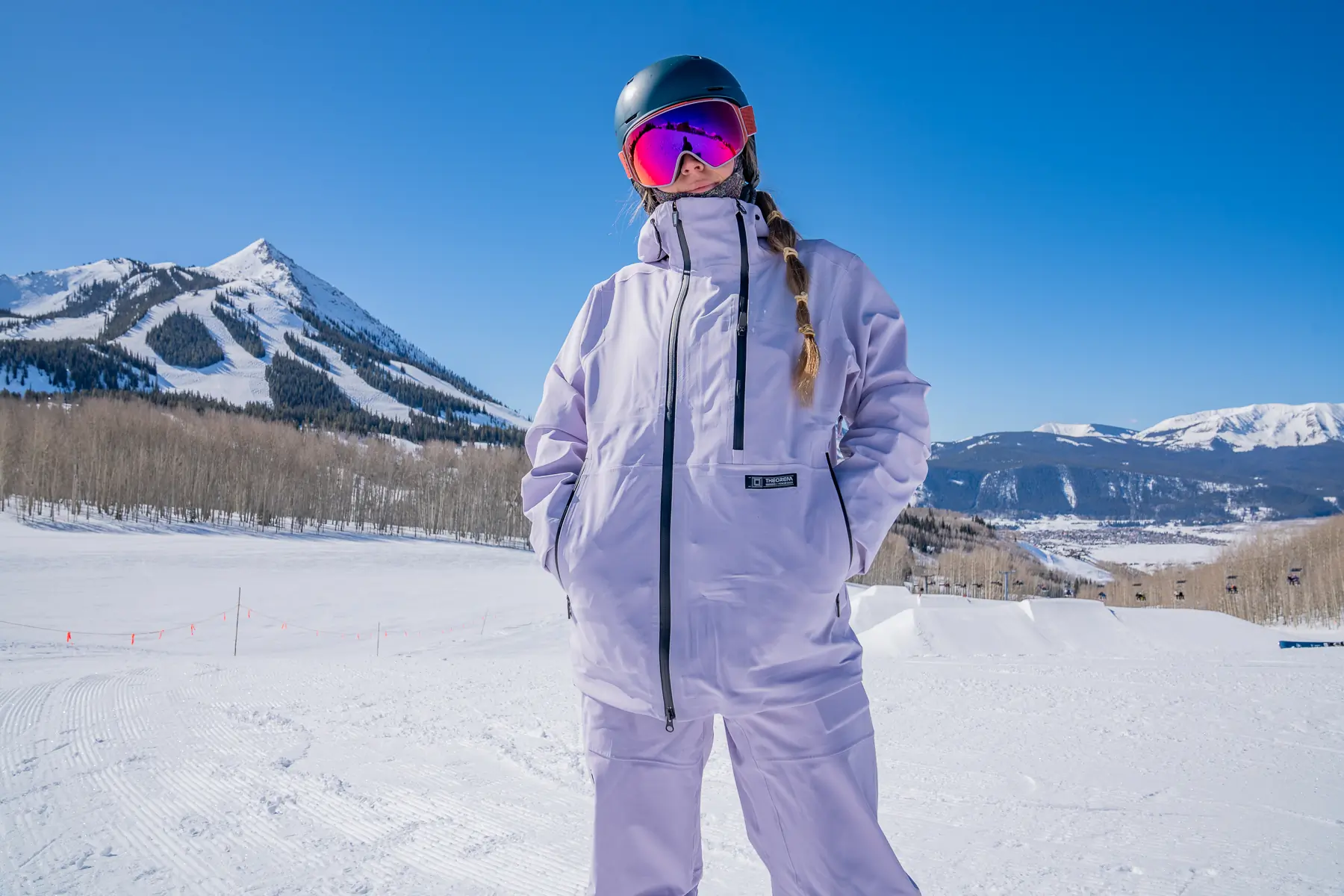



Resort
If your rotation is at the resort, you can often get away with a jacket at a lower price point, which often has lower waterproofness and breathability. The textile may also be less durable but totally reasonable for standard laps at the hill. If your days out are in super cold climates with windchill that sends you into the teens, zero, or negatives, consider snagging an insulated jacket to keep your energy up.
Details matter and each jacket is unique in addition to its cut and style. You’ll see a wide variety of pocket placement and sizes across kits. Some pouches are insulated for your phone. Designs could have fixed or removable powder skirts, softly lined pockets and chinguards, wrist gaiters, underarm vents, and fixed or removable hoods. Also, not all hoods are created equal. Many claim to be helmet-compatible only to lock and bind your neck like you’re strapped into an emergency sled on the hill. We aim to expose all the pros and cons of each jacket.
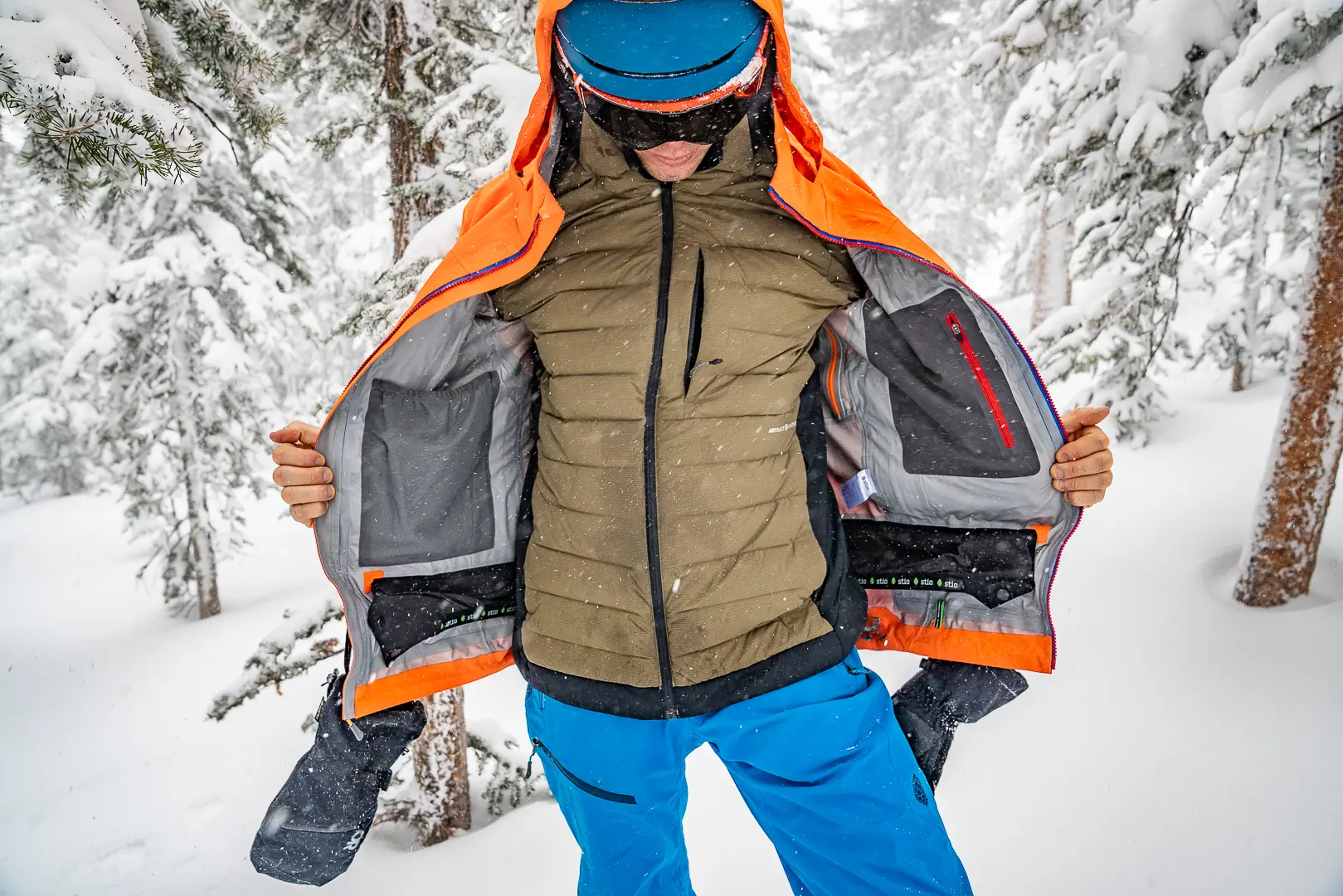



How to Layer
Maintaining a comfortable temperature — not cold, not sweating — can be a challenge across variable conditions. In the mountains, we’ve all seen multiple seasons in a single day or even in a few hours. The best way to manage body temperature is by properly layering.
Base Layers
Starting with the against-the-skin layer, we recommend a tight-fitting base layer made of synthetic fabric, wool, or a hybrid of the two fibers. Check out our Men’s Base Layers and Base Layers for Women buyer’s guides for more information on the right set for you. If you’re bundled up and still cold, upgrade to a midweight or heavyweight wool base layer.
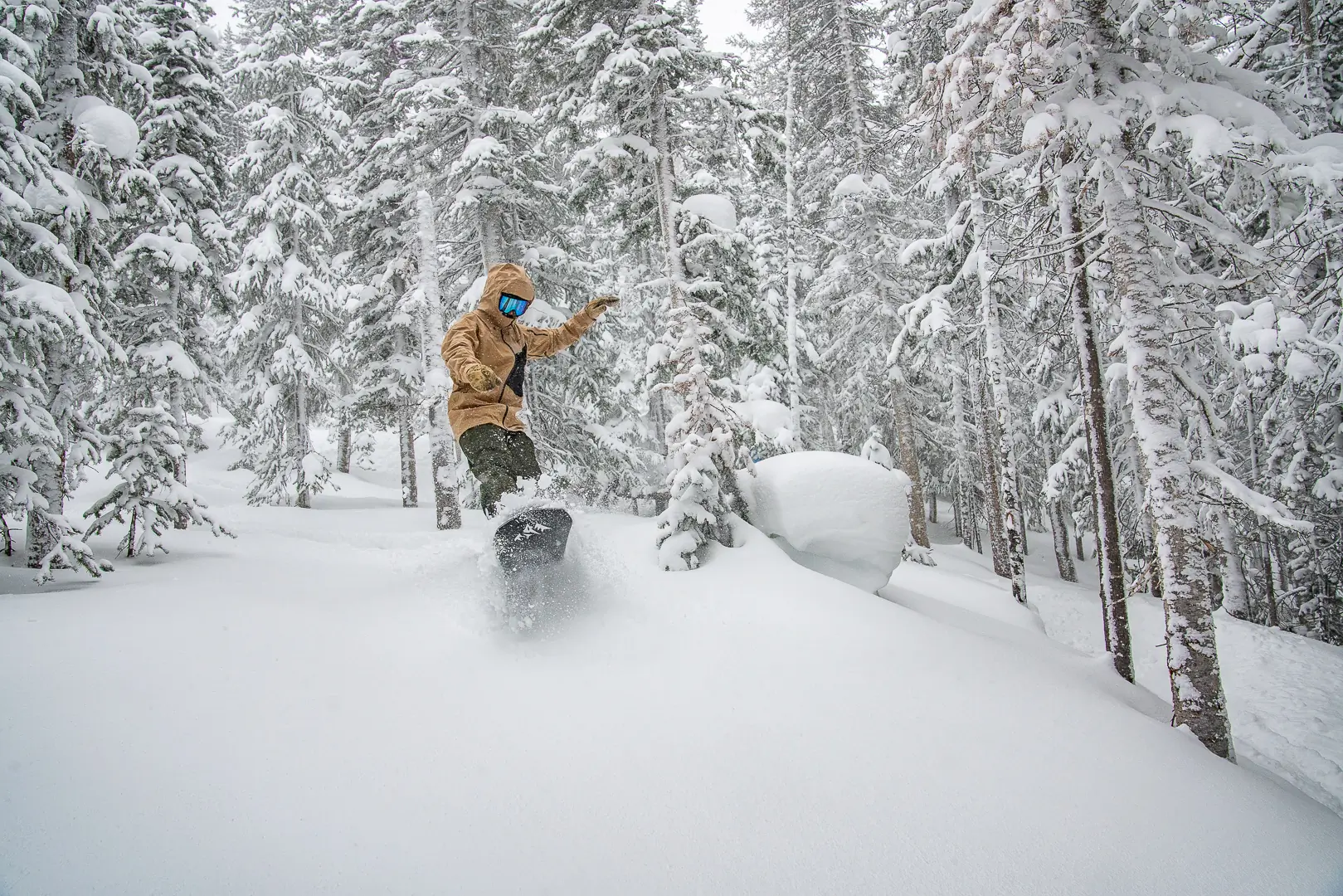



Midlayers
After your base layers, you can add an optional midlayer, which provides insulation.
We recommend pulling on either a down puffy jacket, synthetic jacket, fleece, or a wool midlayer for that warmth boost. For resort snowboarding, we usually wear this layer at the start of cold mornings before ditching it later in the day as the temps rise. To be totally clear, while you only wear one base layer, you can pile on a couple of midlayers as you need to get warm, like adding a down vest over a sweater.
Outer Layers
Lastly, there is the snowboard jacket, which is either insulated or a shell. Both block wind, snow, water, and abrasion, such as rubbing against a tree branch or taking a slider on the run.
If you’re too warm, you can open your jacket’s underarm vents to cool down. Otherwise, ditch the midlayer or wear a lighter-weight base layer.
When choosing your jacket size, leave a little room so that you can easily layer beneath.
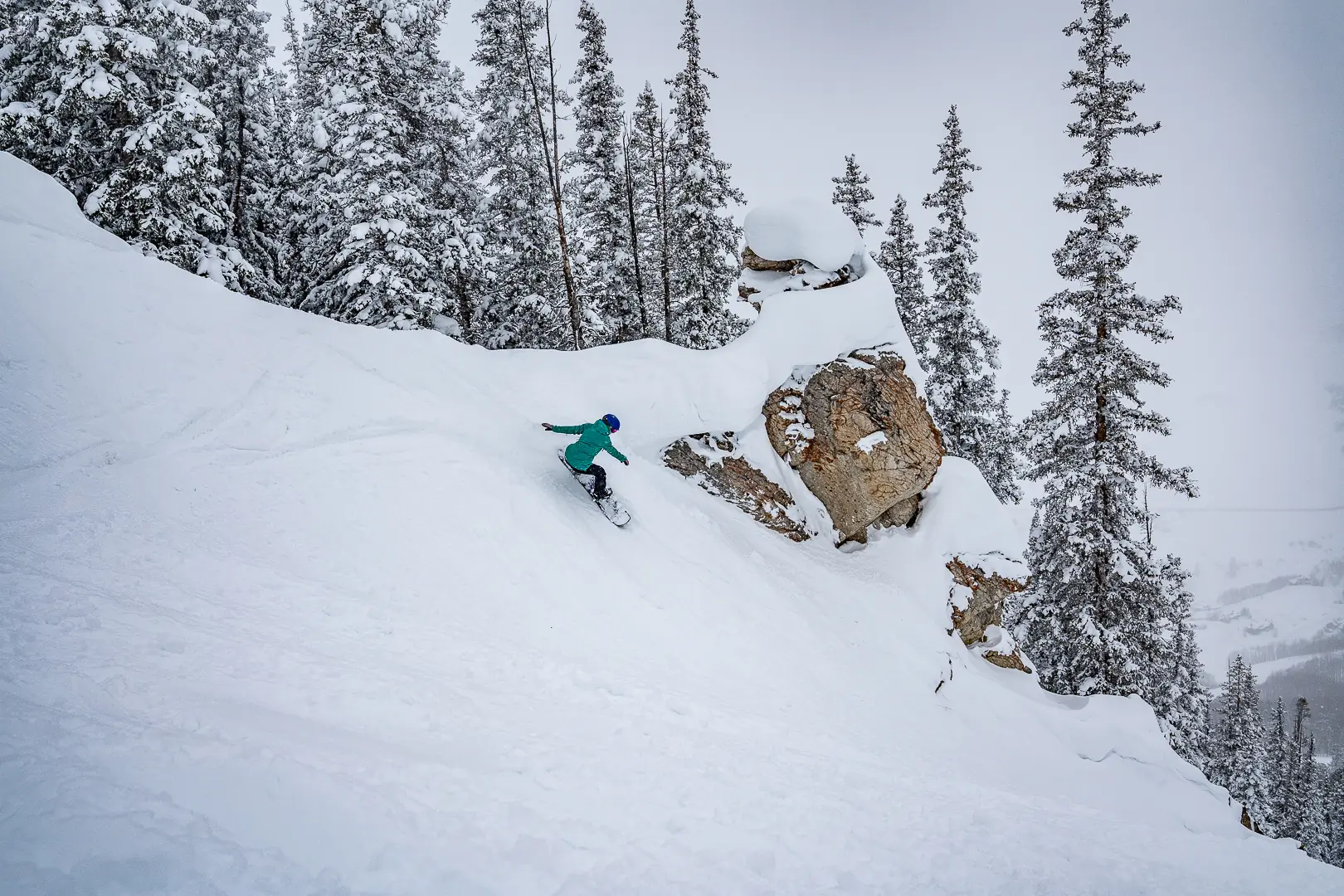



2-Layer vs. 3-Layer Jacket
A 2-layer jacket has a face fabric — such as polyester or nylon — connected to an inner liner that protects the fabric, is breathable, and adds comfort. These jackets usually feel less hefty than a 3-layer jacket. Some have insulation, and the outermost surface is usually treated for waterproofness. The price is generally more moderate compared to 3-layer jackets.
Dialing up the durability, a 3-layer jacket has a waterproof/breathable membrane — often made by GORE-TEX or a brand’s in-house tech, like The North Face’s DryVent or FUTURELIGHT — sandwiched between a tough face fabric and liner. Sometimes the outer fabric is dually treated for waterproofness. These jackets usually offer burlier protection for fierce weather conditions, can be more durable, and are pricier.
Broadly, you’ll want to scrutinize how robust you need your jacket to be for the conditions you’ll snowboard in, as well as budget needs. For instance, the TREW Gear Men’s Cosmic PRIMO Jacket is a superior 3-layer jacket with powerful 20K/20K of waterproof-breathability for blizzard-ridden winters, and it’ll cost you $479. The 2-layer Burton Men’s Covert 2.0 Jacket is a perfectly suitable waterproofness level for milder weather patterns and comes in at $200 less.
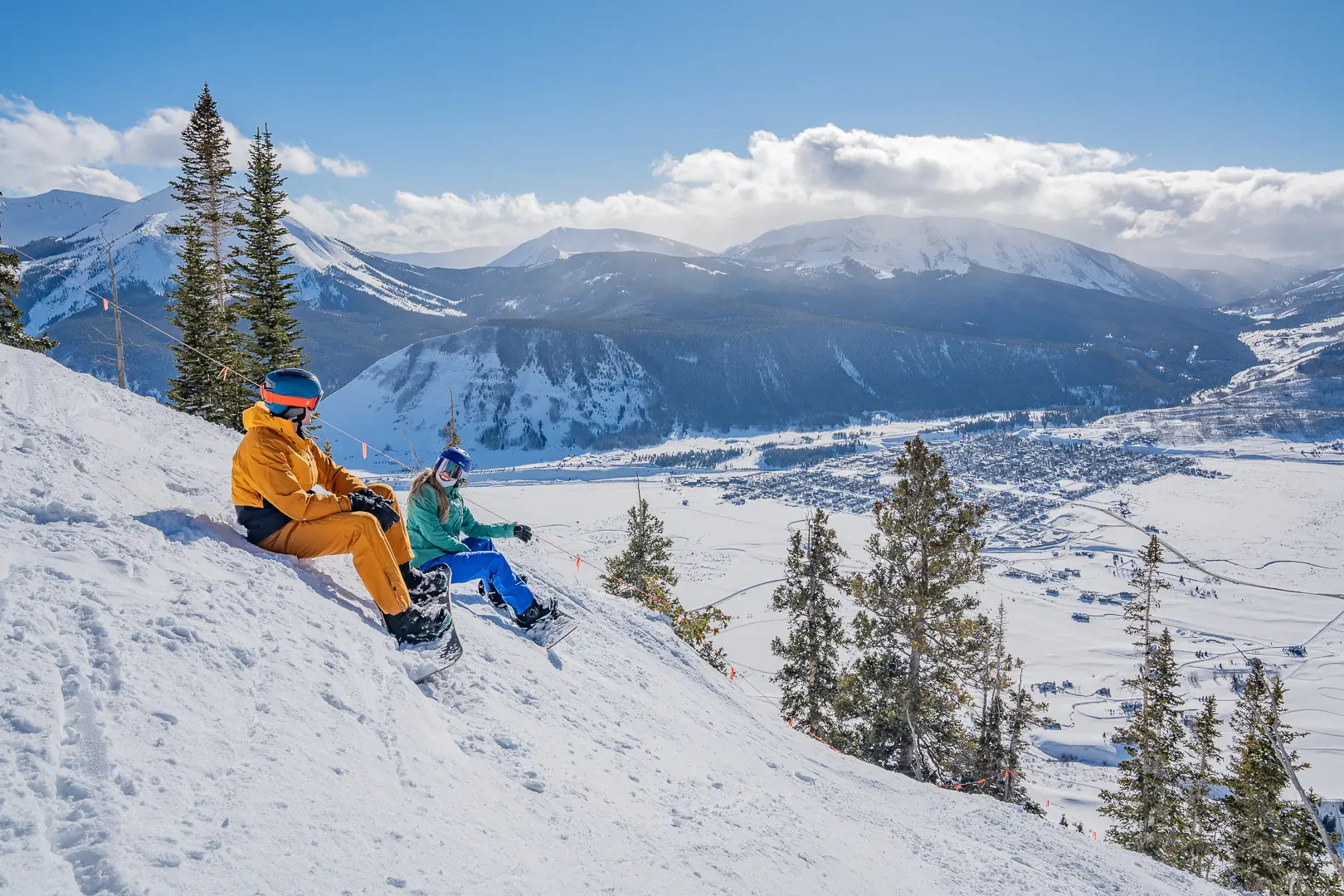



Insulated vs. Non-insulated Snowboard Jackets
One bucket of snowboard jackets is non-insulated, otherwise known as a shell. These are great options for warmer, milder climates. If there is little to no windchill and the temperatures coast above 20 degrees Fahrenheit, we are generally happy with a non-insulated jacket. That way, we aren’t too toasty on sunny and spring days, but we can easily throw on a midlayer to increase the warmth if it’s below freezing. A non-insulated jacket is the most adaptable, versatile option out there. If you’re interested in sidecountry or backcountry tours, we recommend investing in non-insulated outerwear for the ultimate functionality, to keep you from sweating bullets on the skin track, and for easier packability and lighter weight.
There’s also a swarm of insulated snowboard jackets to choose from. We love a comfortable warmth-packed outer layer if we’re lapping the resort in freezing temps below 20 degrees and if there’s windchill. If the lift lines or rides are long, we cherish insulated layers to help keep our energy up on the wait. Or, if you tend to get chilled in the winter, definitely try an insulated jacket. The type, degree, and zone of insulation varies across each jacket. Different types of fill include down, synthetic, or a hybrid of the two. Jackets can also be flannel-lined.
Our favorite insulated snowboard jackets each have a tailored amount of insulation, so they each provide a different degree of warmth:
- Jones Snowboards MTN Surf Recycled Jacket: 40g synthetic insulation
- Airblaster Sassy Beast Jacket: 60g/40g 100% post-consumer recycled PrimaLoft synthetic insulation
- Men’s Flylow Roswell Insulated Jacket: 60g synthetic insulation
- 686 Athena Insulated Jacket: 80g in body, 60g in sleeves, 40g in hood synthetic insulation
- Men’s Burton Covert Insulated Jacket: 80g synthetic insulation
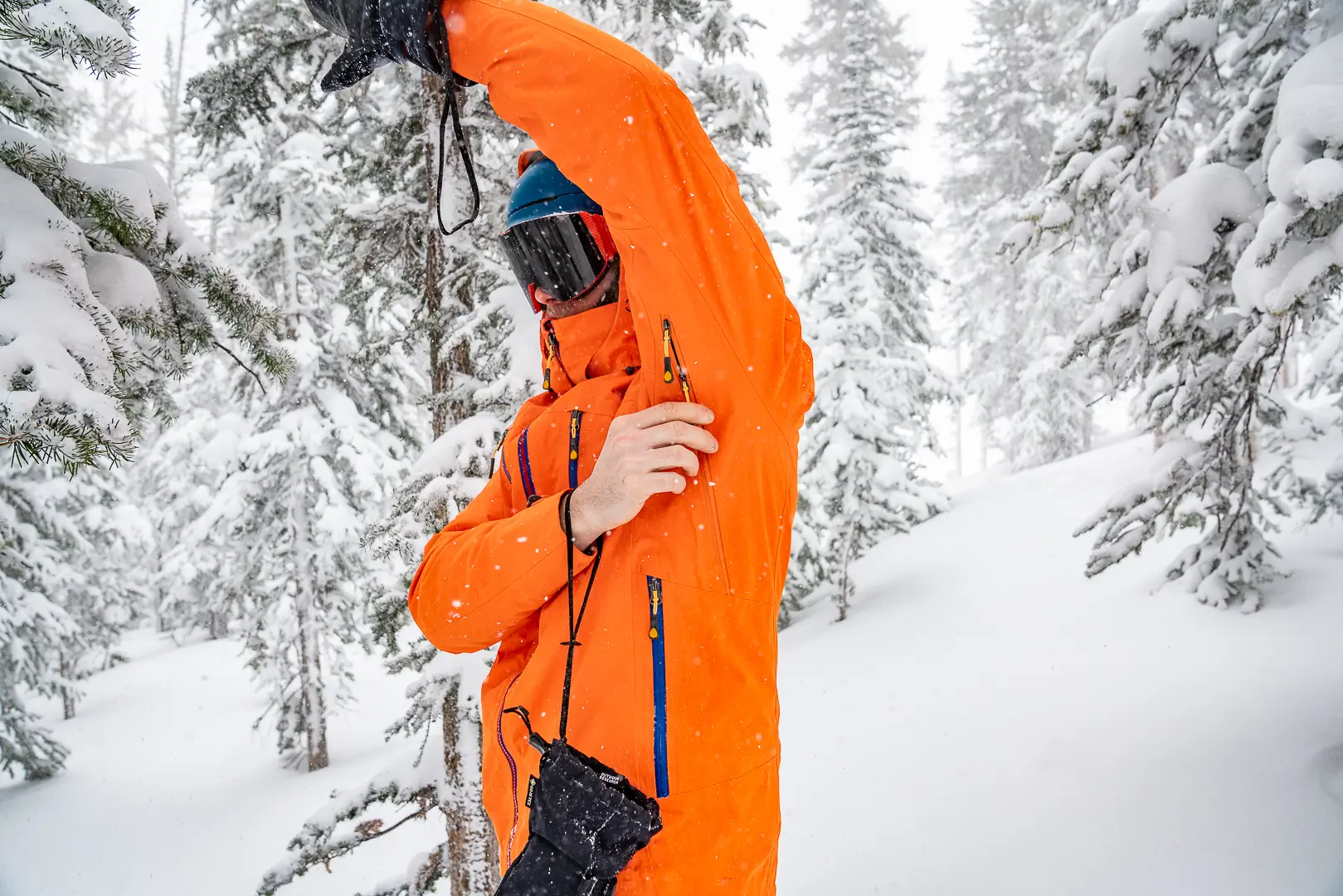



Insulation
Snow jackets can have two primary types of insulation: down and synthetic — or a combination of both — which is typically added to targeted zones in the jacket. Insulation works by trapping air inside tiny pockets within the materials, whether that be natural down feathers or strands of polyester, which is synthetic or human-made.
Down Insulation
Down Insulation is derived from ducks, geese, or other waterfowl. Down has a superior warmth-to-weight ratio that’s three times that of synthetic insulation. Overall, down is lighter, more compressible, and longer-lasting than synthetic insulation. The organic material does have one weakness: moisture. Down doesn’t insulate very well once it’s wet and takes very long to dry. The fill is also more expensive than synthetic options.
When looking at down jackets, consider the fill power, which is an indicator of the quality of the down. To calculate fill, a one-ounce sample of down is compressed in a cylinder. The higher the fill power, the less down is needed to create the same warmth because it’s able to trap more air within the jacket. For example, an 800+ fill is considered premium and offers more warmth per weight, while the range of 500-700 fill is more average. So, generally speaking, the higher the fill number, the greater the warmth, but the fill power isn’t the only variable affecting a jacket’s warmth.
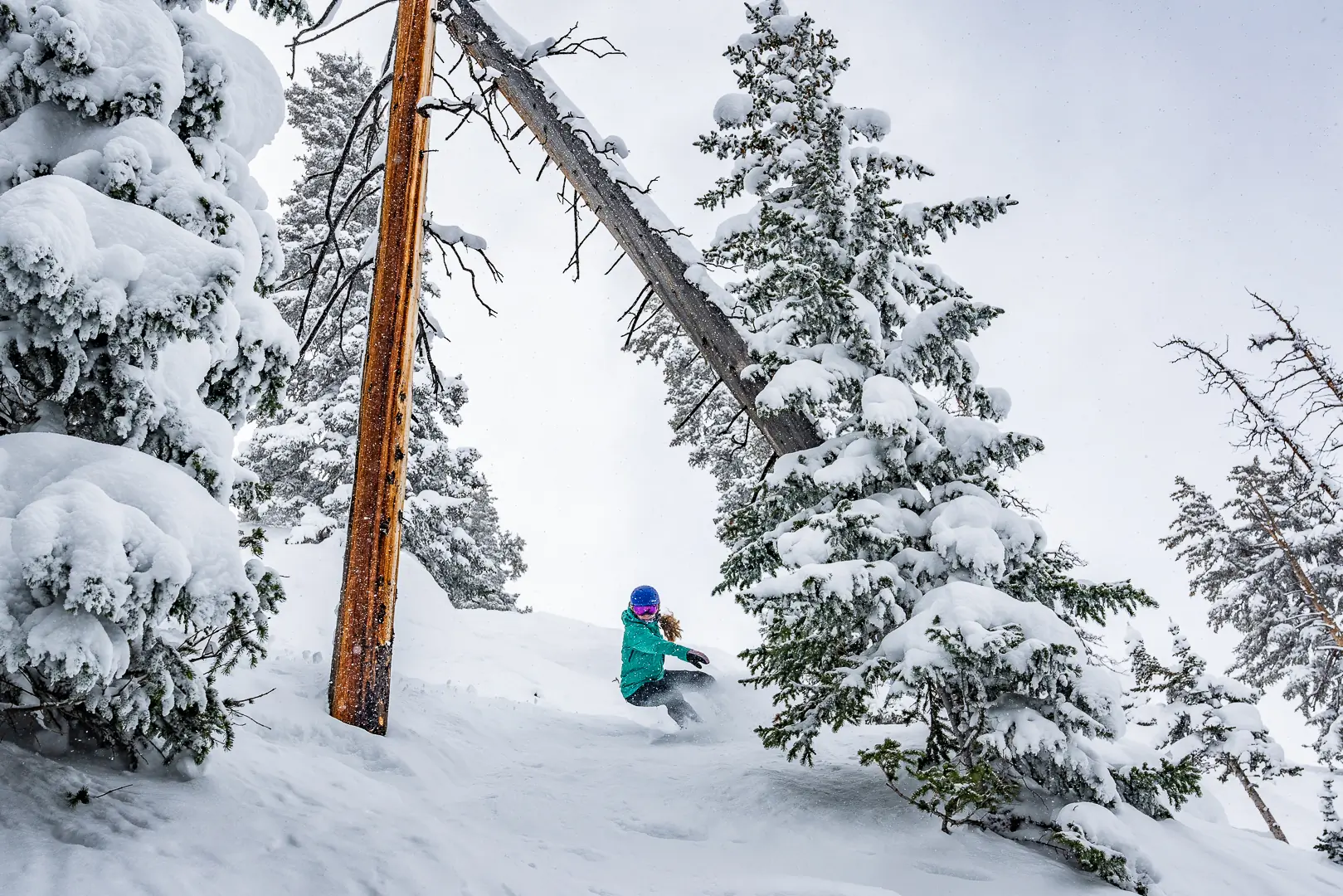



Synthetic Insulation
Synthetic insulation is made from polyester fibers, which are spun to create pockets of air between them. A higher quality of insulation translates to finer filaments with more space for air between them. Synthetic insulation can also be treated for odor and water resistance to improve performance in outdoor activities. Compared to down, synthetic insulation is generally less expensive, insulates better when it gets wet, and is fast drying. But, synthetic insulation is slightly heavier, compresses less, and doesn’t usually endure as much use as down insulation.
Looking at the specs, synthetic insulation is measured in grams per square meter, referring only to the amount of insulation and not the overall weight of the jacket. The higher the number, the more insulated and warmer the jacket will be. The majority of insulated snowboard jackets in our guide have synthetic insulation.
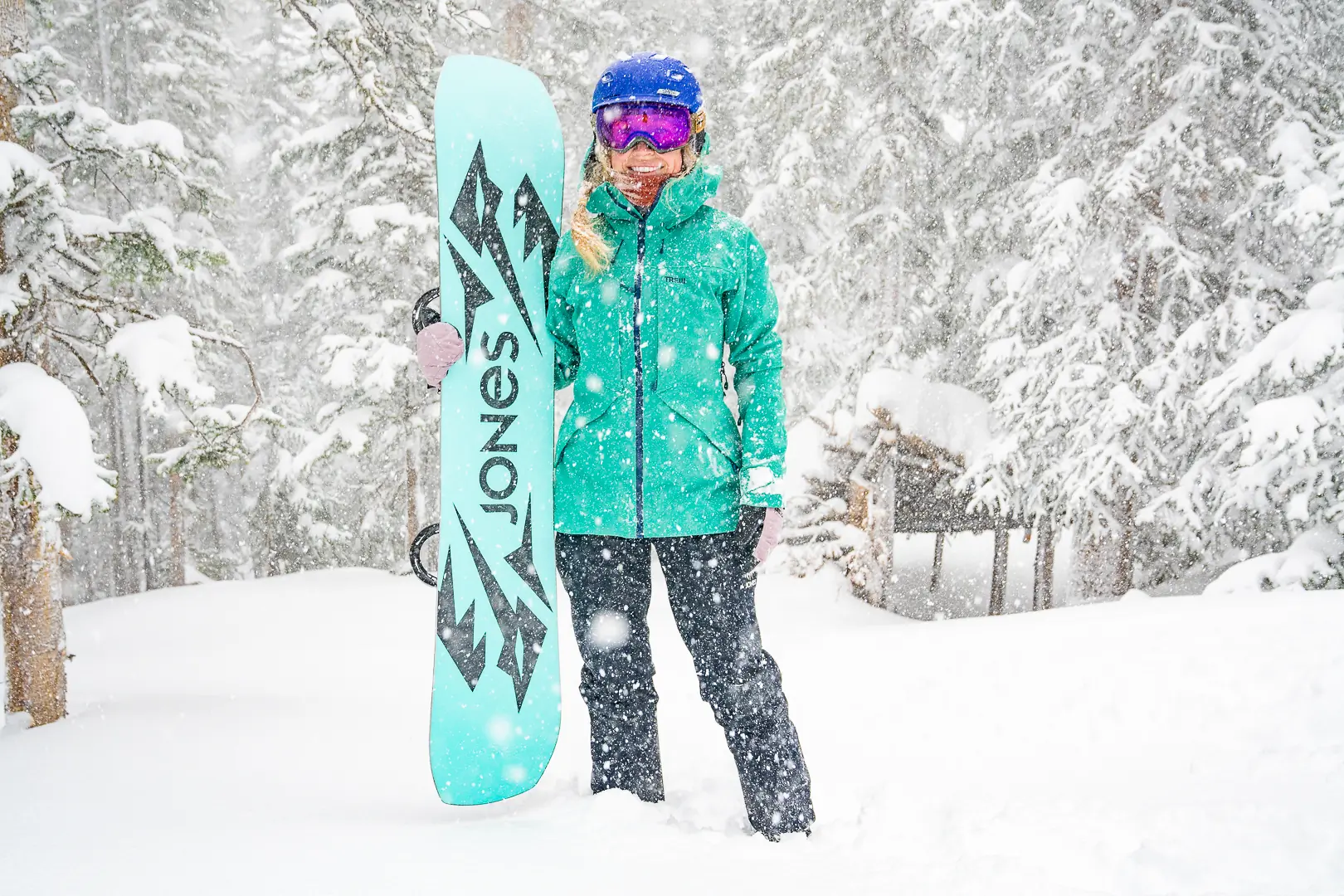



Waterproofness
Snowboard jackets have a range of waterproofness. The more waterproof a fabric is, the better it will protect you when there is a high water content in the snow — like in the PNW — or if you are outside in a blizzard for hours on end. Often, if a jacket is more waterproof, the breathability tends to decline. Premium jackets are able to maintain ultra-breathability with top-tier waterproofness, which is reflected in the overall cost.
The industry benchmark for waterproofness is GORE-TEX, a membrane that’s integrated into various 3-layer jacket designs or other in-house membranes made in-house. Typically, waterproofness is measured by the amount of water that can be placed on top of a fabric before it leaks, from 5,000 to 20,000mm or greater. The amount of waterproofing in a jacket can be paired with certain climates and weather patterns nationwide:
- 0-5,000mm: Resistant to light rain, dry snow
- 6,000-10,000mm: Waterproof for light rain and dry, non-heavy snow
- 11,000-15,000mm: Waterproof for moderate rain and dry, non-heavy snow
- 16,000-20,000mm: Waterproof for heavy rain and wet snow
- 20,000mm and greater: Waterproof for heavy rain and dense, wet, heavy snow
For many locations, a waterproof range of 8,000 to 10,000 mm works well for mild to moderate precipitation.
If you generally snowboard in a wetter climate with heavier snow (meaning, the snow water equivalent, or the water content in the snow, is higher) or you want to use your snowboard jacket in the backcountry, a jacket with more waterproofness is a good call.
Among the most waterproof snowboard jackets on our list is the Jones Women’s Shralpinist Stretch Recycled Jacket with 30,000mm of protection, which is a top-shelf design built sustainably and for off-piste missions.
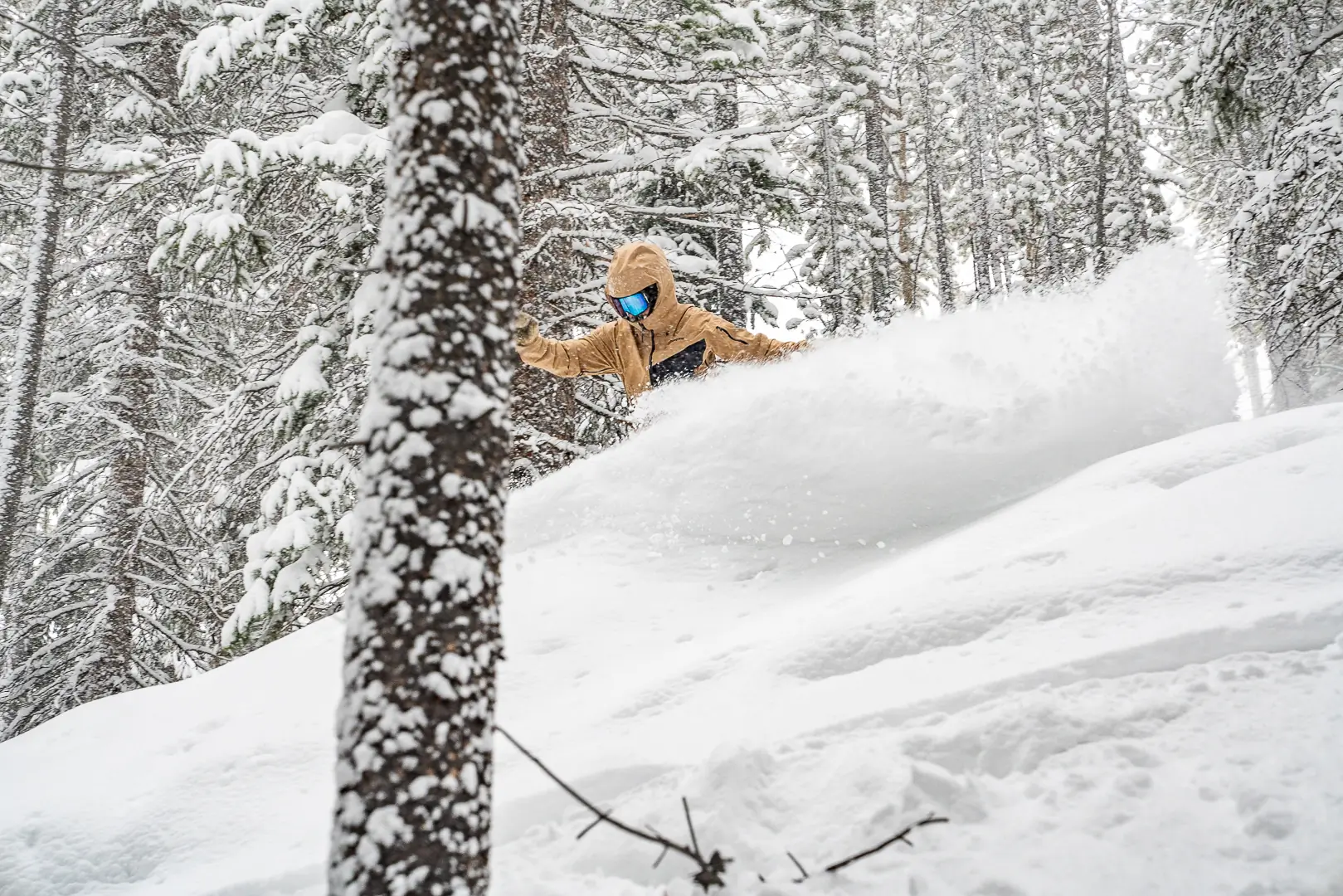



On the scale of waterproofness, 30K is your 747 jet while the 10K is a tiny bush airplane. The upper end of protection is the most waterproof and ideal for coastal snow climates. The jackets with 10,000mm of waterproof ratings are great to pair with mild and moderate weather patterns and drier snow climates.
Here’s how our favorite jackets and their waterproofness stack up side-by-side:
- Men’s & Women’s Jones Snowboards Shralpinist Stretch Recycled Jackets: 30,000mm
- TREW Gear Men’s Cosmic PRIMO & Women’s Stella PRIMO Jackets: 30,000mm
- Airblaster Women’s Sassy Beast Jacket: 30,000mm
- Jones Snowboards Men’s MTN Surf Recycled Jacket: 20,000mm
- Dakine Sender Stretch 3L Jacket: 20,000mm
- L1 Axial Jacket: 20,000mm
- Burton Men’s Covert 2.0 Jacket: 10,000mm
- 686 Women’s Athena Insulated Jacket: 10,000mm
- Dakine A – 1 Jacket: 10,000mm
- Flylow Men’s Roswell Jacket: 10,000mm
- Outdoor Research Men’s Skytour AscentShell Jacket & Women’s Skytour: 10,000mm
Face fabric treatments can also help make a jacket more waterproof, but they wear off with time and need to be reapplied. Traditional coatings are toxic for humans and the environment, and brands have been rolling out eco-friendly formulas, which are typically labeled PFC-free: Perfluorochemicals (PFCs) are synthetic chemicals. Some snowboard jackets also have fully sealed seams and waterproof zippers for extra moisture blockage.
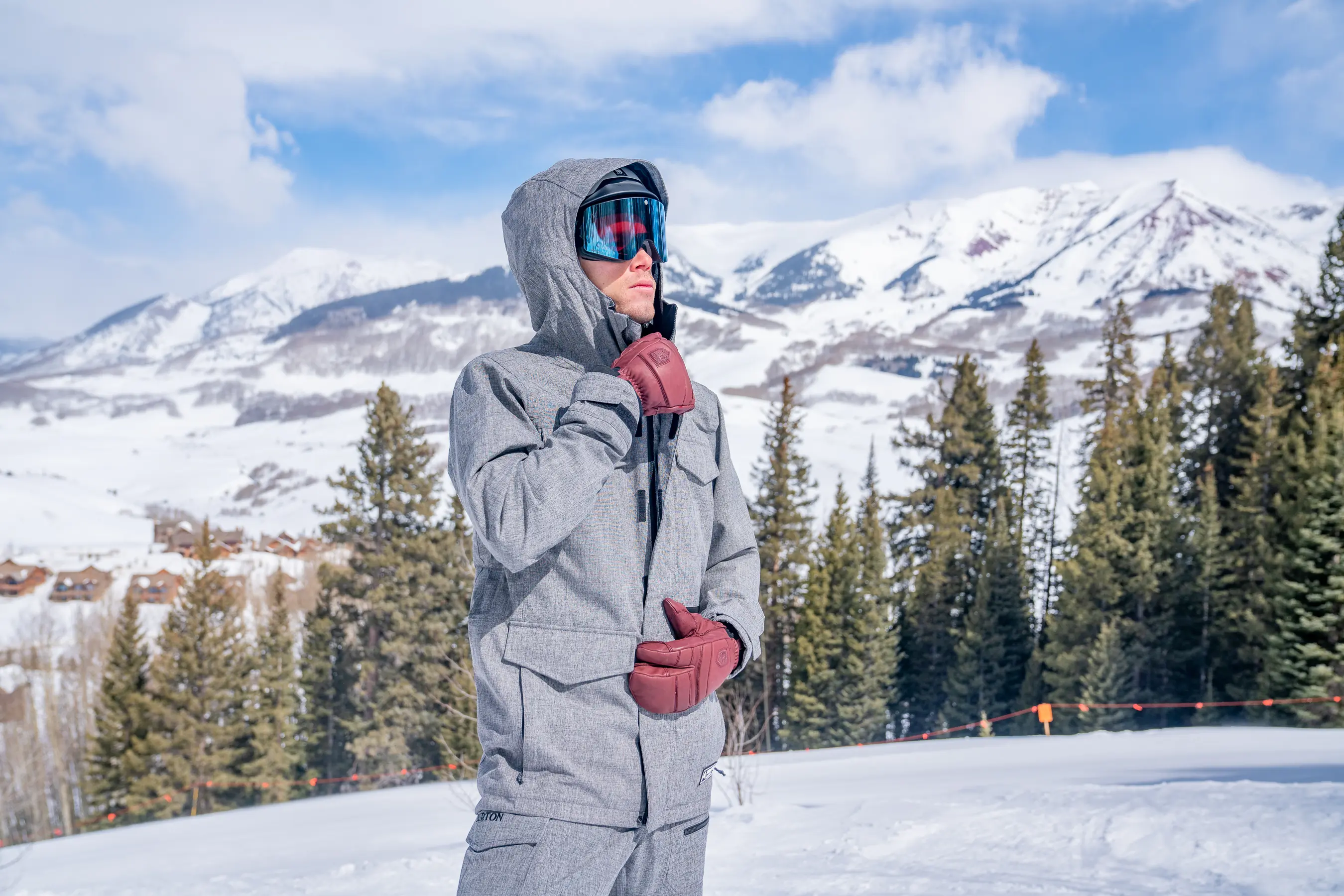



Durable Water Repellant (DWR) Treatment
Various chemical treatments can be applied to the exterior face of fabrics to increase water resistance. The treatment changes the surface texture of the fabric and allows water to collect in droplets or beads that roll away. Over time, the treatment can wear off with use and may need to be reapplied.
A movement of eco-friendly products is challenging the industry norm by achieving a Durable Water Repellent (DWR) without the use of toxic chemicals. Some also never need to be reproofed. For instance, some jackets use Teflon Ecoelite PFC-free DWR, while other brands still use traditional chemical-based DWR, which needs to be reapplied every season or so. Make sure you know which type of DWR your jacket has so you can be prepared to reapply the water resistance if necessary and so that you’re aware of the chemicals.
In our guide, the Flylow Roswell Jacket is treated with a traditional DWR. The Dakine Men’s Sender Stretch 3L Jacket and Dakine Women’s Sender Stretch 3L Jacket utilize a C6 PFC, which has a shorter carbon chain and breaks down faster in the environment.
Alternatively, a PFC-free DWR is used in the majority of our favorite snowboard jackets:
- Jones Snowboards Women’s MTN Surf Recycled Jacket
- Jones Snowboards Men’s Shralpinist Stretch Recycled Jacket
- Jones Snowboards Women’s Shralpinist Stretch Recycled Jacket
- Stio Women’s Figment Jacket
- Stio Men’s Figment Jacket
- Airblaster Women’s Sassy Beast Jacket
- Picture Organic Men’s Object Jacket
- Picture Organic Women’s Seen Jacket
- Jones Snowboards MTN Surf Recycled Jacket
- L1 Axial
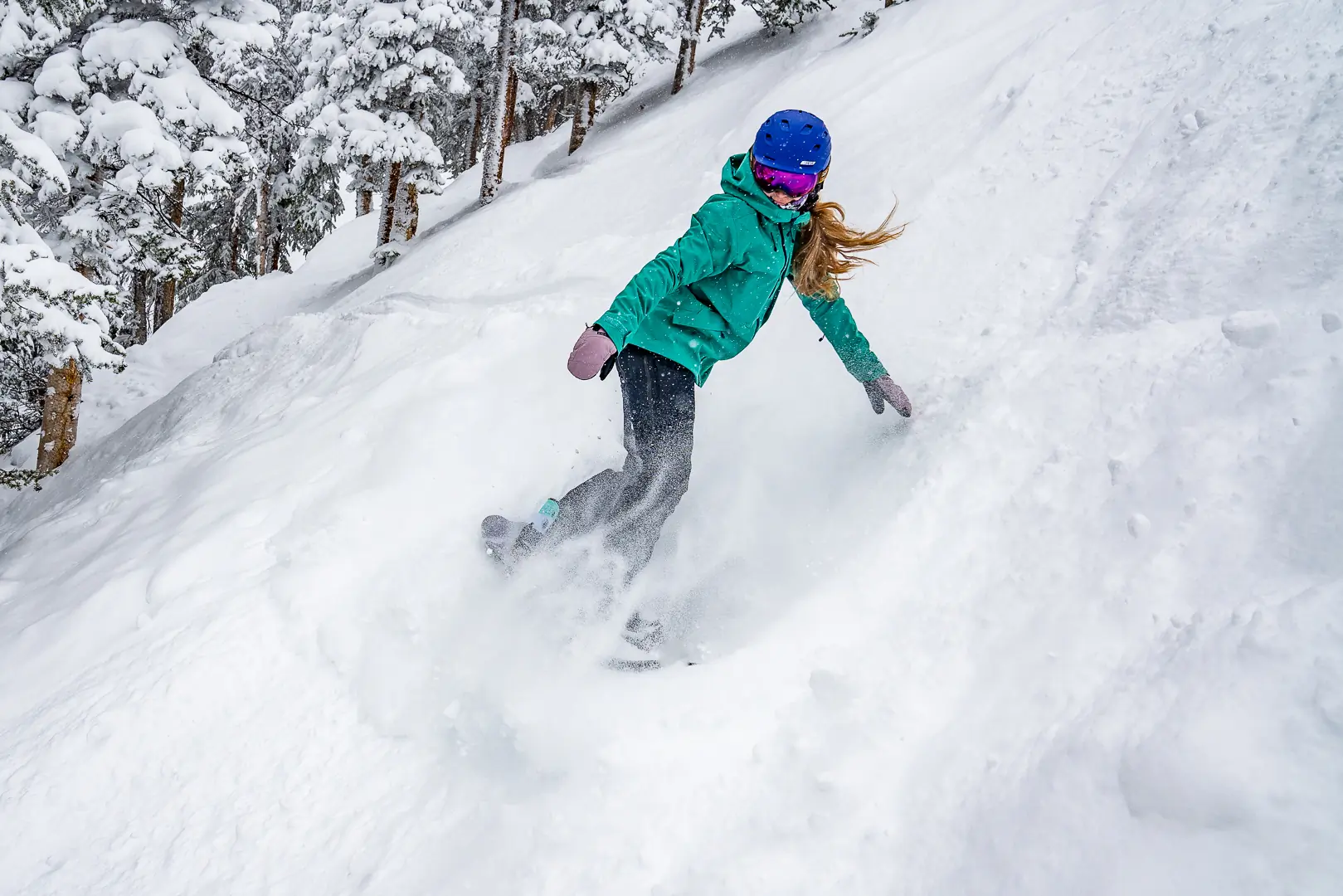



Breathability
A jacket’s breathability is the ability of the fabric to allow your body heat or perspiration to pass through from the interior to the exterior.
Generally, breathability is measured by the grams of water that can pass through one square meter of fabric over a 24-hour period (written as g/m² or an abbreviated g). However, there’s no industry standard for testing a jacket’s breathability, so the methods vary across manufacturers.
- 5,000-10,000 g/m²: Not the most breathable, suitable for inbounds alpine skiing
- 10,000-15,000 g/m²: Moderate breathability
- 15,000-20,000 g/m² and higher: Super breathable, a good range for inbounds uphill workouts and backcountry tours
For high-output resort riding or on powder days, aim for a jacket with a breathability rating of 10,000 to 15,000 g/m². Backcountry snowboarders and uphill athletes should look for even more breathability of 20,000 g/m² or more.
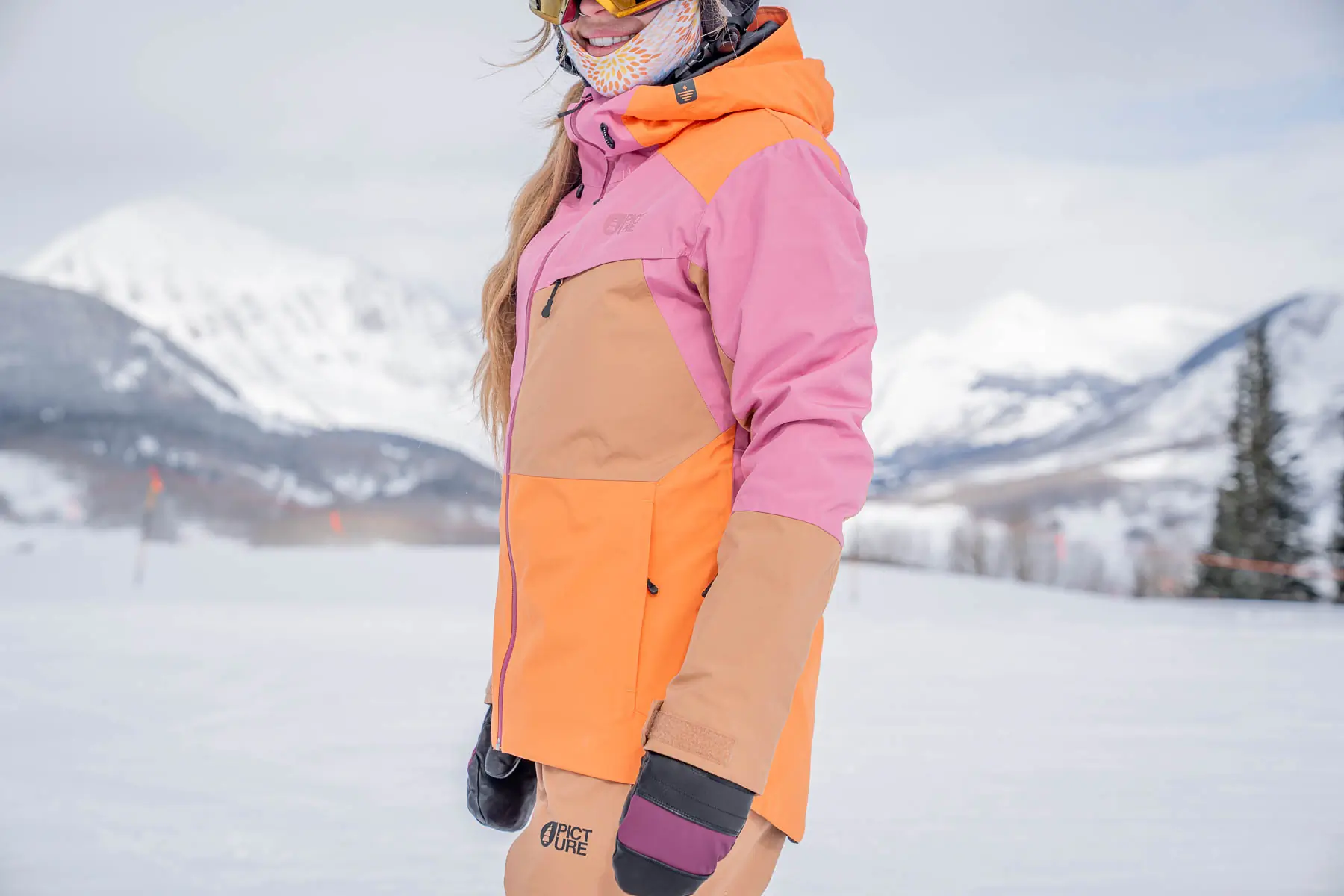



Here’s how the breathability of our favorite snowboard jackets lines up:
- Jones Snowboards Men’s Shralpinist Stretch Recycled Jacket: 30,000g
- Jones Snowboards Women’s Shralpinist Stretch Recycled Jacket: 30,000g
- TREW Gear Men’s Cosmic PRIMO Jacket: 20,000g
- TREW Gear Women’s Stella PRIMO Jacket: 20,000g
- Dakine Men’s Sender Stretch 3L Jacket: 20,000g
- Dakine Women’s Sender Stretch 3L Jacket: 20,000g
- Jones Snowboards Women’s MTN Surf Recycled Jacket: 20,000g
- Outdoor Research Men’s Skytour AscentShell Jacket: 20,000g
- Outdoor Research Women’s Skytour AscentShell Jacket: 20,000g
- Airblaster Women’s Sassy Beast Jacket: 20,000g
- Jones Snowboards MTN Surf Recycled Jacket: 20,000g
- L1 Axial: 20,000g
- Picture Organic Men’s Object Jacket: 15,000g
- Picture Organic Women’s Seen Jacket: 15,000g
- Stio Women’s Figment Jacket: 10,000g
- Stio Men’s Figment Jacket: 10,000g
- Flylow Roswell Jacket: 10,000g
- 686 Women’s Athena Insulated Jacket: 10,000g
- Burton Men’s Covert 2.0 Jacket: 5,000g
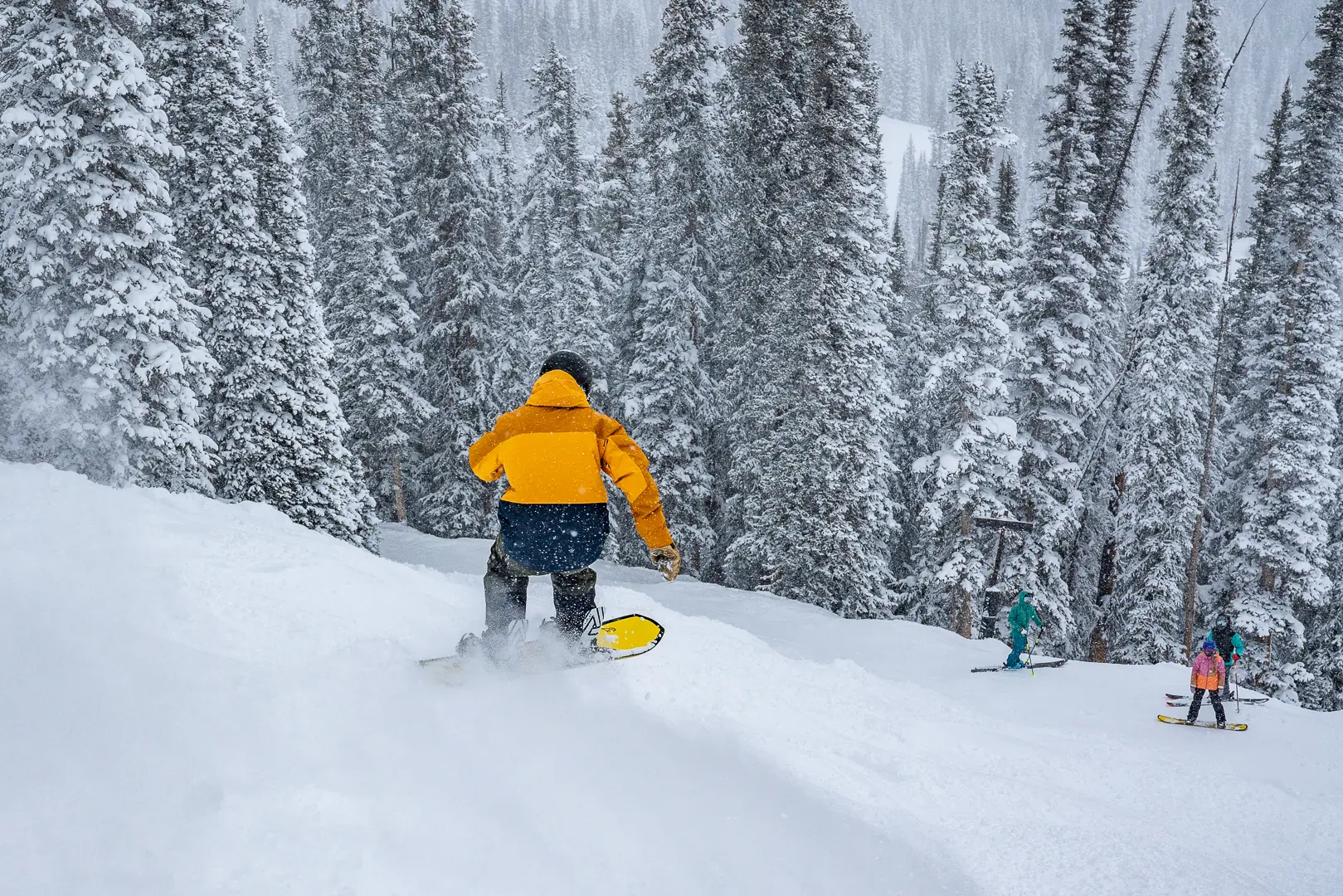



Air Permeability
Not to be confused with breathability, air permeability is how fast air can move moisture from the inside of the jacket to the outside of the jacket, which enables the fabric to breathe.
Air permeability is measured in cubic feet of air per minute (CFM), which is the amount of air that passes through a square foot of fabric. A material with 100 CFM is not a lick windproof while 50 CFM offers a bit of wind resistance. Meanwhile, 0 CFM is totally windproof.
Let’s think of this in terms of sweat: Traditional waterproof jackets have lower air permeability, meaning you really have to sweat a lot before the jacket starts to breathe. Jackets like the Outdoor Research Men’s Skytour AscentShell Jacket have higher air permeability, meaning the textile breathes before you reach that uncomfortable level of sweatiness.
The bottom line is that more air permeability means the jacket will be more comfortable for higher exertion levels like backcountry tours.
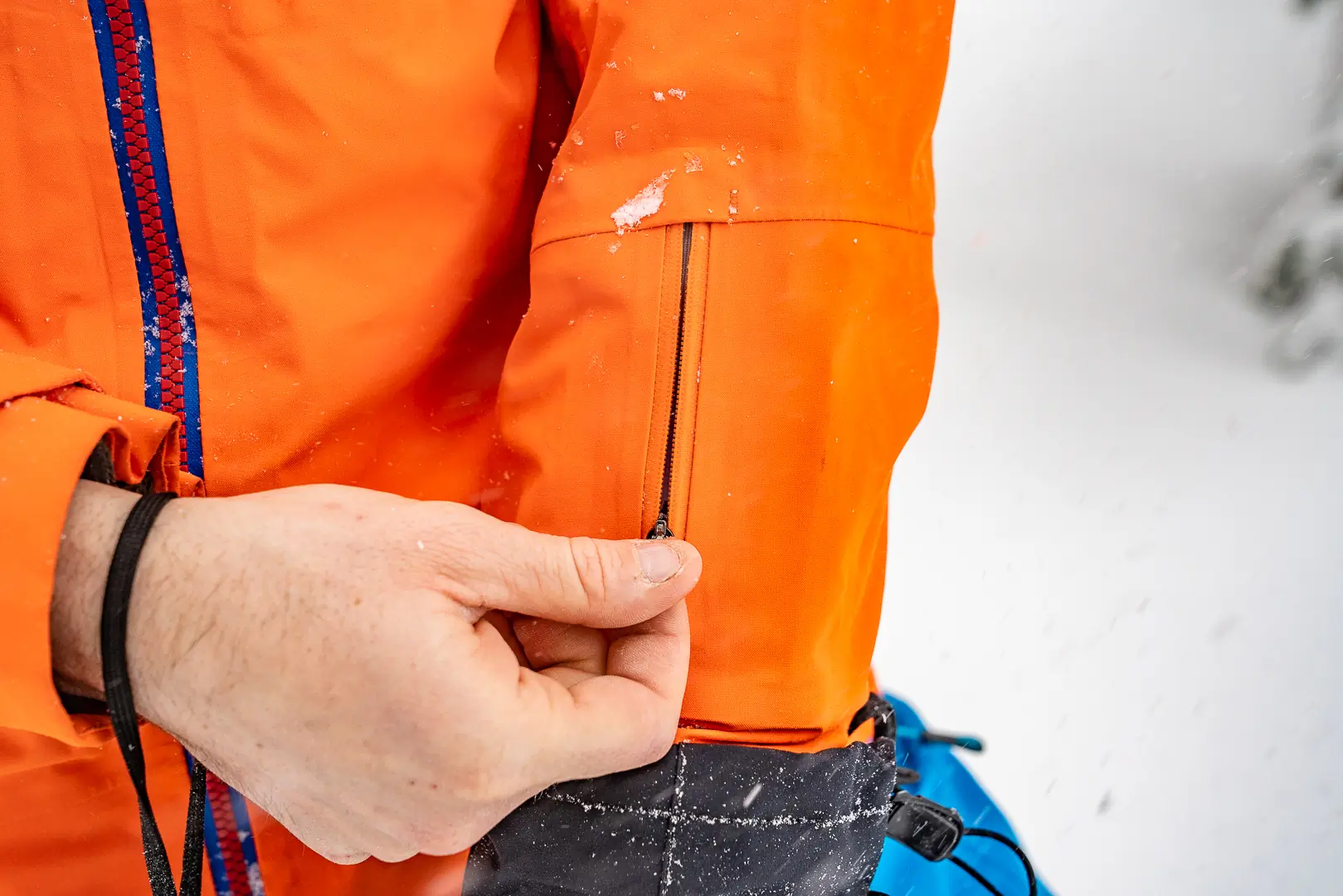



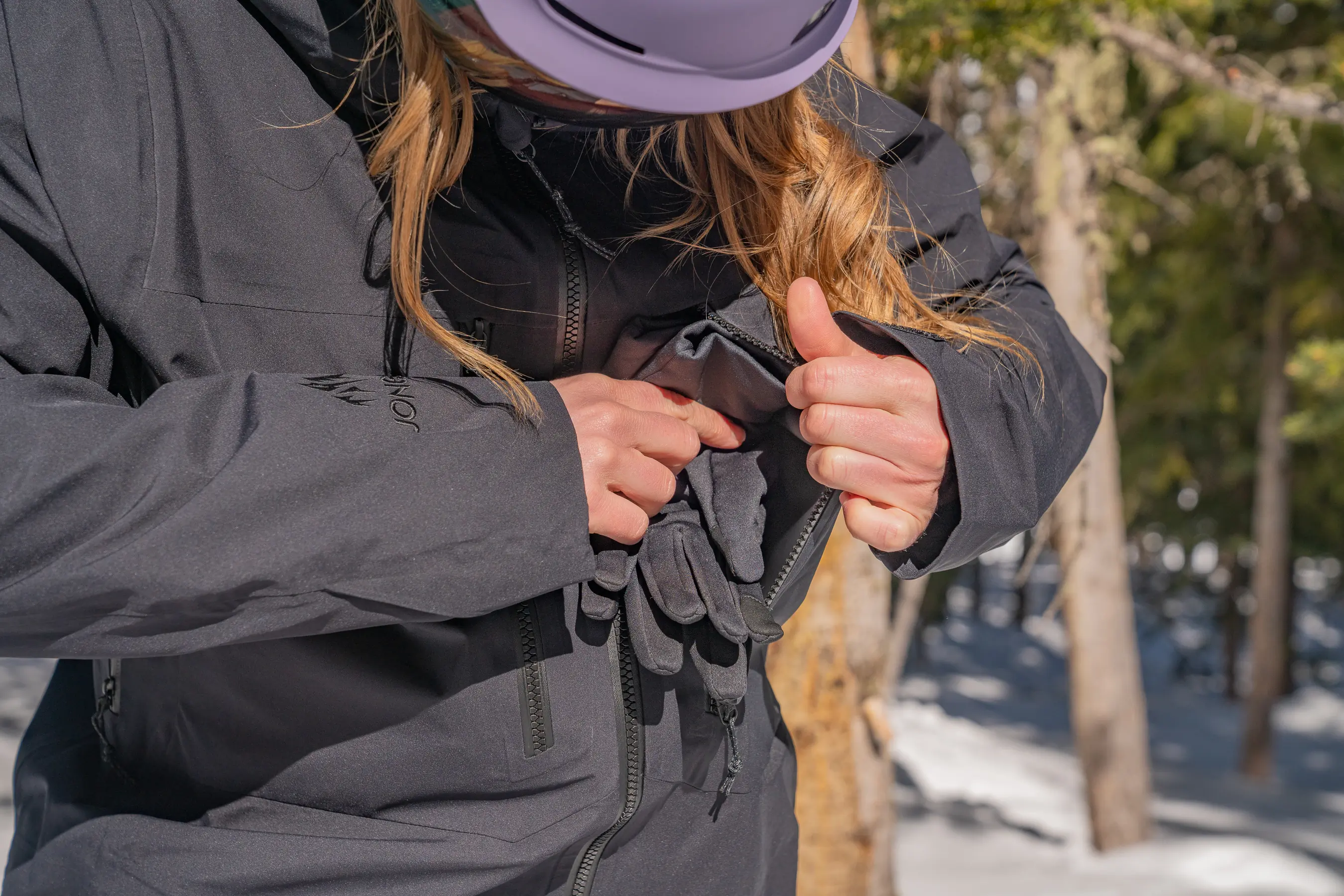



Ventilation & Zippers
Snowboard jackets often offer ventilation through underarm zippers, which help regulate body temperature. This feature can feel mandatory for warm-blooded folks or those who ride in warm conditions. Pit zips are great for powder days when your body works hard to make turns. On powder days, remember to close your vents before your descent!
Some underarm zippers are longer than others, and that spaciousness is especially useful for backcountry adventures when you’re consistently on the move and need to air out more body heat. Certain vent designs have a layer of mesh fabric that helps to block snow from flooding inside. Other designs open directly to the base layer. One drawback with mesh is that it could potentially get jammed in the zipper. The Burton Men’s Covert 2.0 Jacket offered an interesting solution for that issue by adding several narrow strips of fabric reinforcement, which introduces a bit of structure to the flimsy material. It seems to work.
In terms of quality, YKK zippers are the toughest and are fairly universal across brands. More so what we’ve noticed about zippers is that the leaner the pull, the harder it can be to grab, especially with mittens or ski gloves on. We like a medium or large zipper pull that we can quickly, easily grab to open or close.
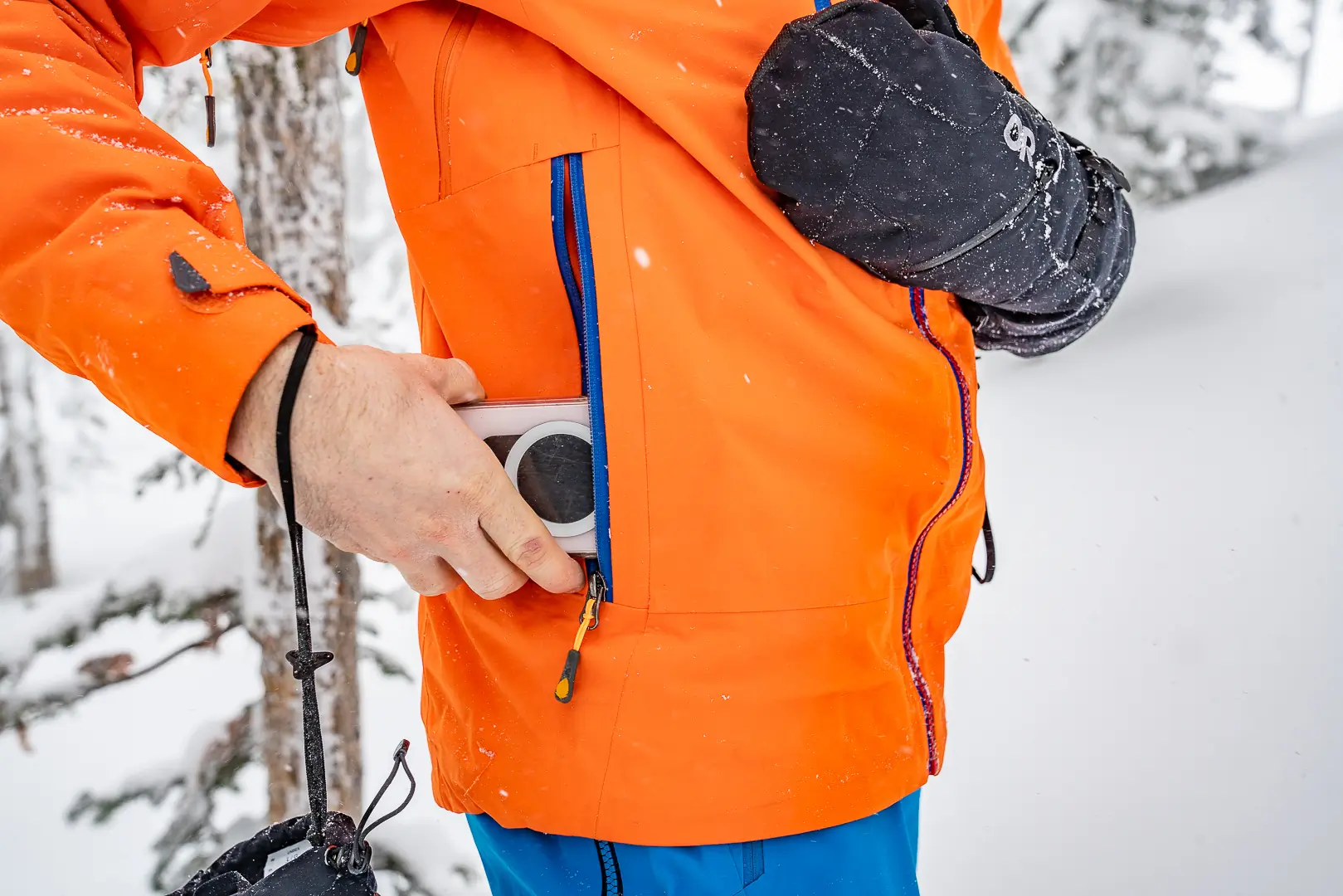



Pockets
One of the most critical details that can lead to a solid snowboard jacket is the pocket design. Seemingly simple, jackets can have different pocket shapes, placements, flaps, angles, sizes, and styles that can totally change the functionality, usability, and comfort of carrying your goods on the go. One of our biggest peeves is when the only pockets that are large enough for our phone also dig into our hip crease, so we feel a pinch on the lift or when we bend over to adjust our snowboard bindings.
While our choice snowboard jackets all have a basic collection of well-designed pockets, the Burton Men’s Covert 2.0 Jacket is full of pride with a whopping 10 pockets. The Jones Snowboards Men’s Shralpinist Stretch Recycled Jacket and Jones Snowboards MTN Surf Recycled Jacket don’t trail too far behind with 9 pouches. At a minimum, these top jackets have 4-5 pockets.
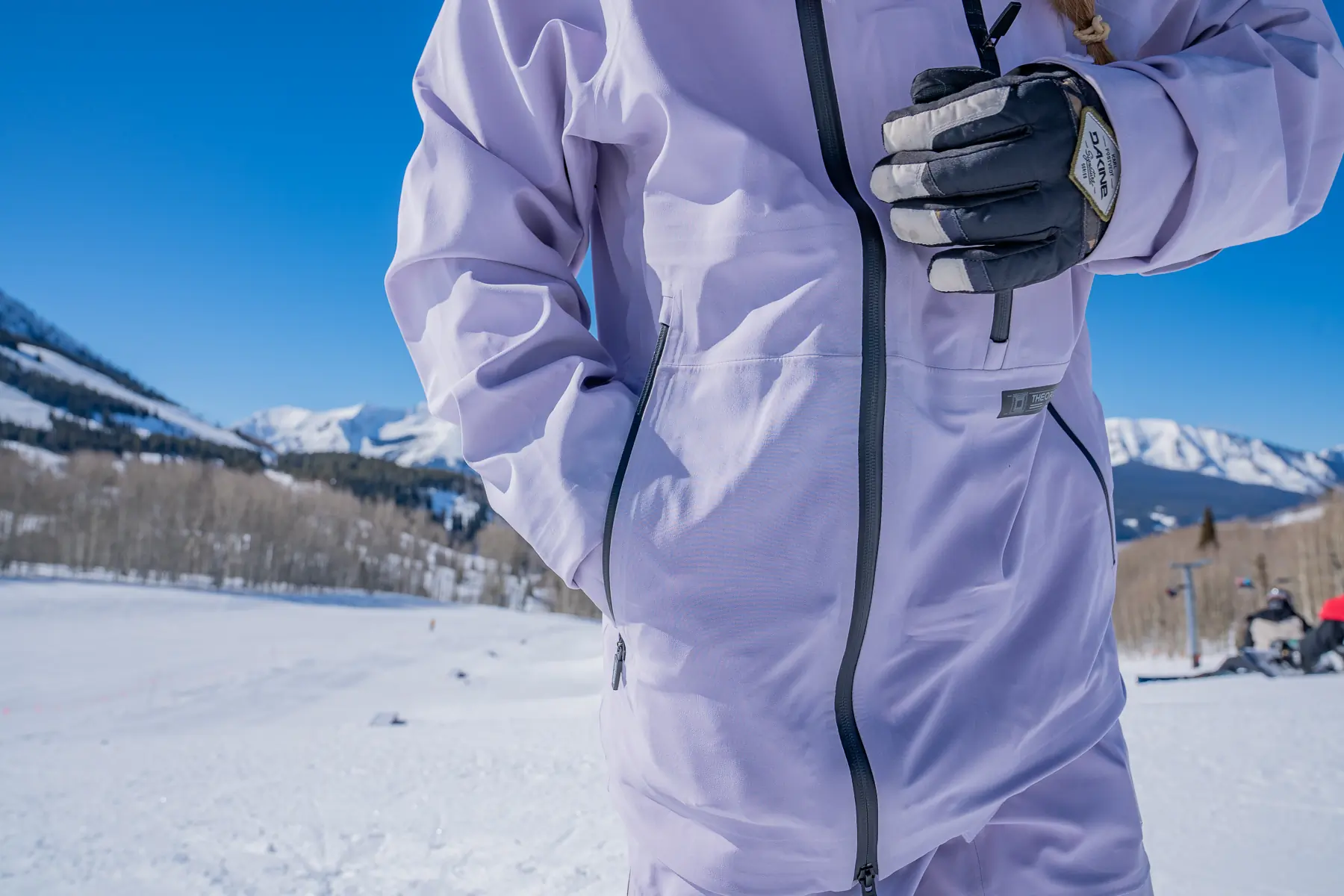



Exterior Pockets
Most snowboard jackets include two exterior hand pockets with zip closures, which can be lower on the waist or placed higher for compatibility with a ski backpack hip belt or harness for mountaineering. Not all hand pockets are lined, but when they are, we appreciate the extra touch, whether it’s microfleece or brushed tricot.
Deep, wide, higher-placed exterior pockets — like a chest pocket — can be a great spot to store a smartphone or notebook in the backcountry or on the lift. Putting heavier, bulkier items in the lower-placed hand pockets can sometimes smack against the upper thigh while hiking uphill, sitting on the lift, bending over to reach your boots, or making aggressive downhill carves.
Other exterior pockets can include small pouches on the arm or chest, which are great for lip balm, an ID, a credit card, or a ski pass. The L1 Axial has a unique, stylish pocket setup with two stacked offset zippers on the front face: The upper zip opens a vent and widens the collar while the lower zip opens the chest pocket, which has a media port.
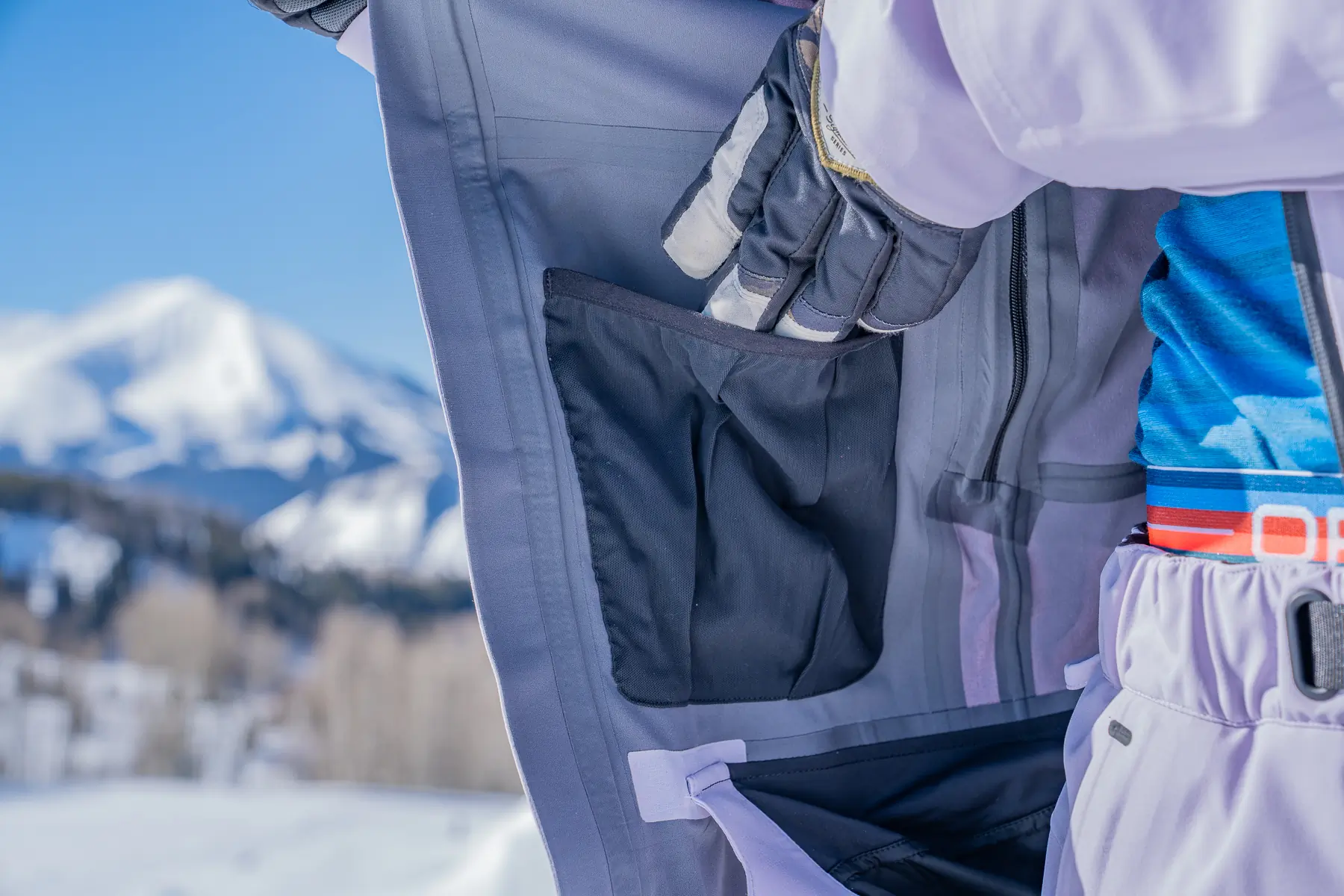



Interior Pockets
Interior pockets often have a zip closure, which is important for securing a credit card or ID. Some designs have ports for headphones.
Drop or dump pockets are deep, wide interior mesh hammocks with an elastic closure that can be useful for holding a beanie, gloves, goggles, or lens. If they’re large enough, they can hold backcountry skins, which is helpful if the temperatures are crisp and you need to prevent the glue from freezing between climbs.
Occasionally, jackets can have insulated zippered pockets that help to extend the battery life of your smartphone.


Fit & Sizing
There are a few general camps for snowboard jacket fit: athletic, regular, and baggy. The best fit comes down to your personal style, as well as the weather conditions where you ride and if you’re heading into the backcountry.
Athletic Fit
This house is trimmer with a more streamlined, athletic shape. If you’re wearing a ski backpack in the backcountry, it can be better to wear a more fitted jacket, so that the fabric doesn’t bunch up or get caught.
Baggier Fit
Baggier jackets are roomier and boxier with a more relaxed silhouette. We have found that super baggy jackets are more comfortable in a warmer climate. If the temps are below freezing, we prefer to have a jacket with more closure against the ambient air.
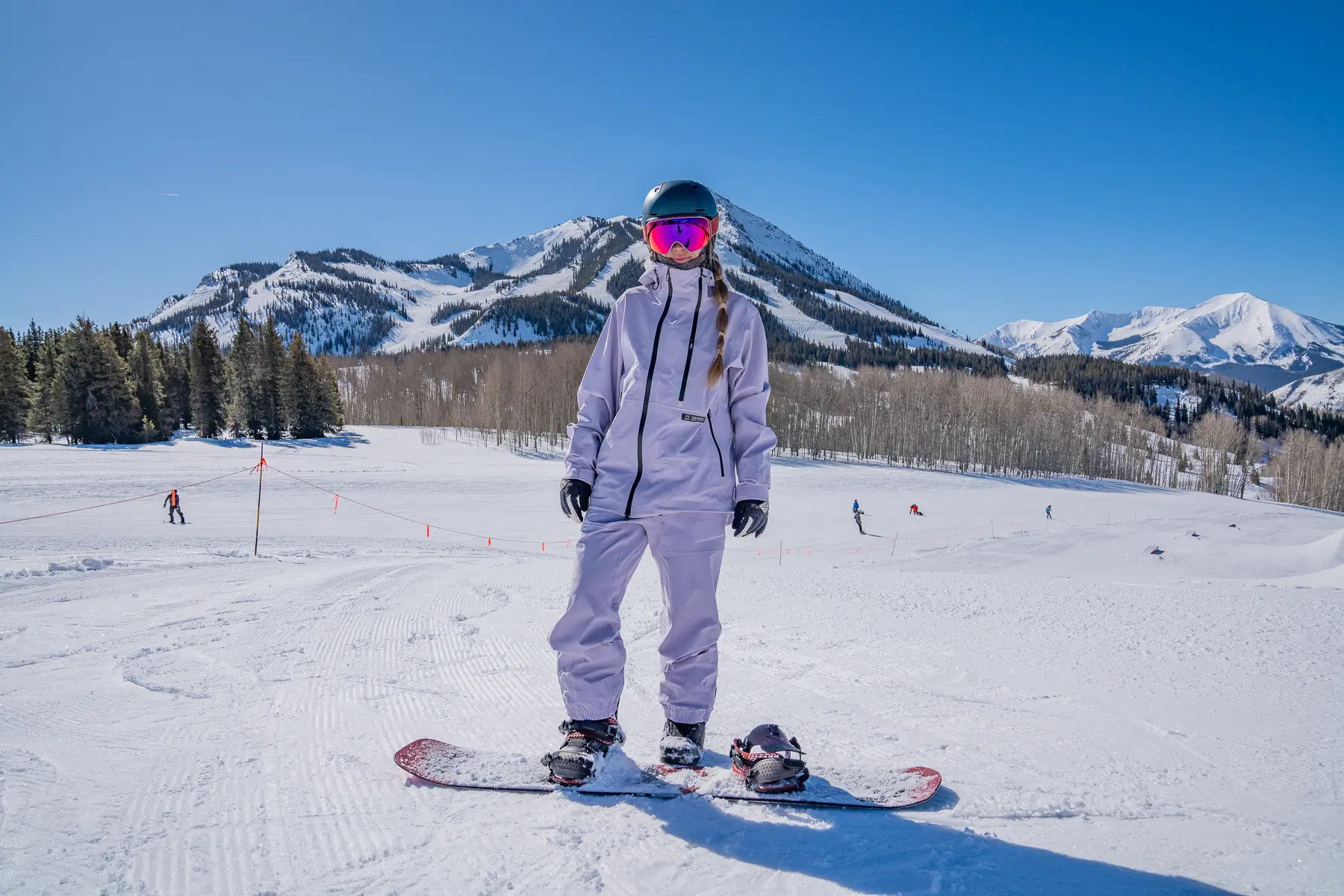



Longer Silhouette
Whether its fitted or baggy, a slightly longer jacket can provide extra protection on the lower back and backside from wind and snow, which is great for riding the chair lift or sitting down to adjust your snowboard bindings. Longer jackets tend to be better for in-bounds shreds versus splitboard tours, where you want a lighter, packable option.
Size Charts & Extended Sizes
Each manufacturer has its own size charts. Be sure to take your personal measurements and match them up. Consider the type of midlayer and base layer you’ll wear beneath your snowboard jacket. In some cases, it might be better to size up your outerwear so that layering underneath doesn’t feel restrictive.
A handful of brands offer a broader size range, and some offer plus sizes, also known as extended sizes. In 2024, TREW Gear launched extended sizes — 3XL through 5XL — in the TREW Gear Men’s Cosmic PRIMO Jacket and TREW Gear Women’s Stella PRIMO Jacket.
Everyone’s body is unique, so check the exchange and return policy before you buy.


Collar & Hood
Jacket collars vary in height and ideally have a softly lined interior chin guard that feels gentle against the face, which will help shield your chin and cheeks when it’s windy, cold, or snowy out.
Hoods can be fixed or removable. Some hoods are adjustable via elastic pulls on the side and back. Others have an integrated visor so that they don’t collapse beneath moisture and help keep precipitation from reaching the topside of your goggles.
Many are designed to be helmet-compatible, meaning they can be pulled up over your ski helmet with the front collar zipped shut. However, not all helmet-compatible hoods are created equal. Often, they’re not the most ergonomic while in use over a helmet, resulting in a limited or restricted head swivel when you turn your head from left to right.
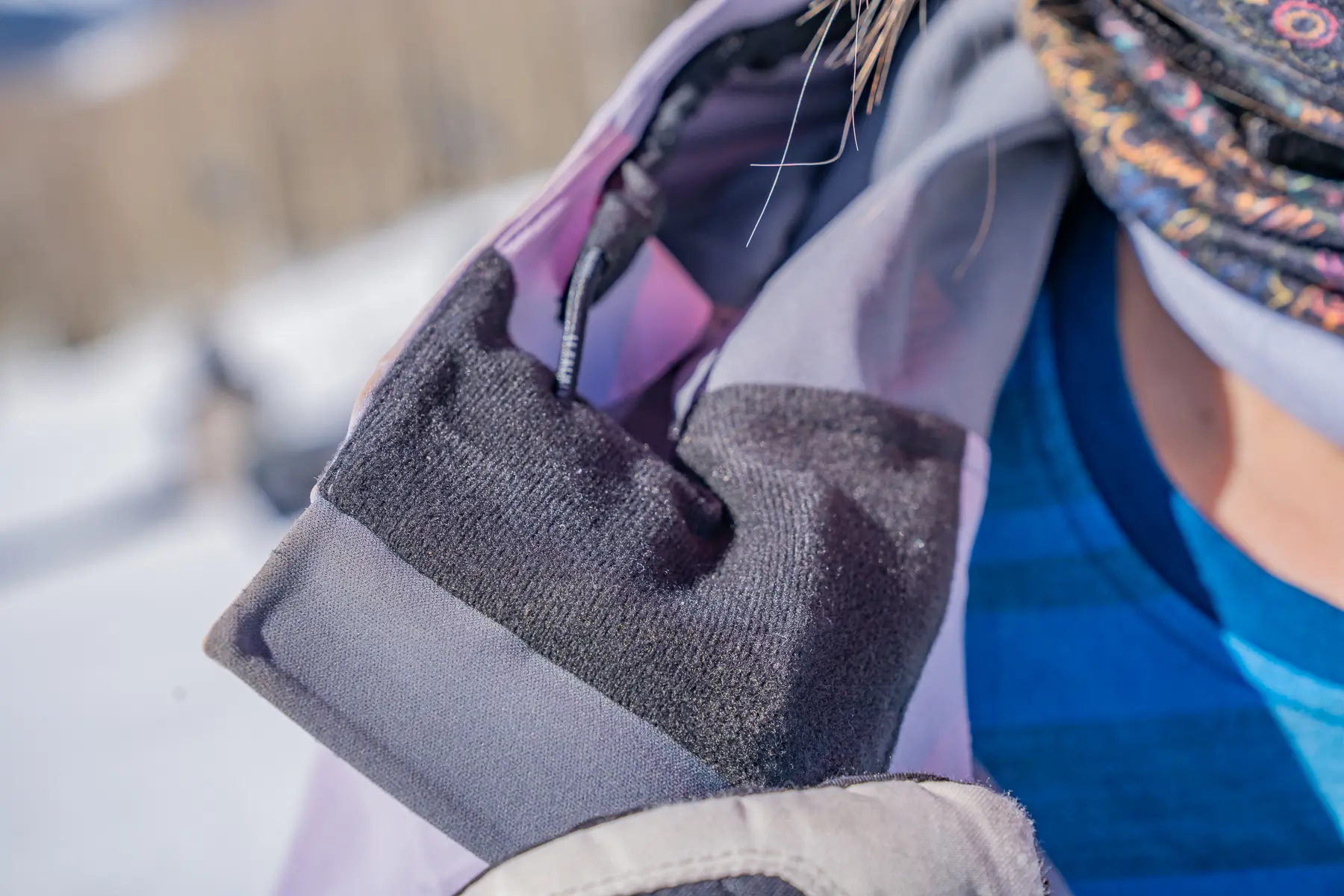



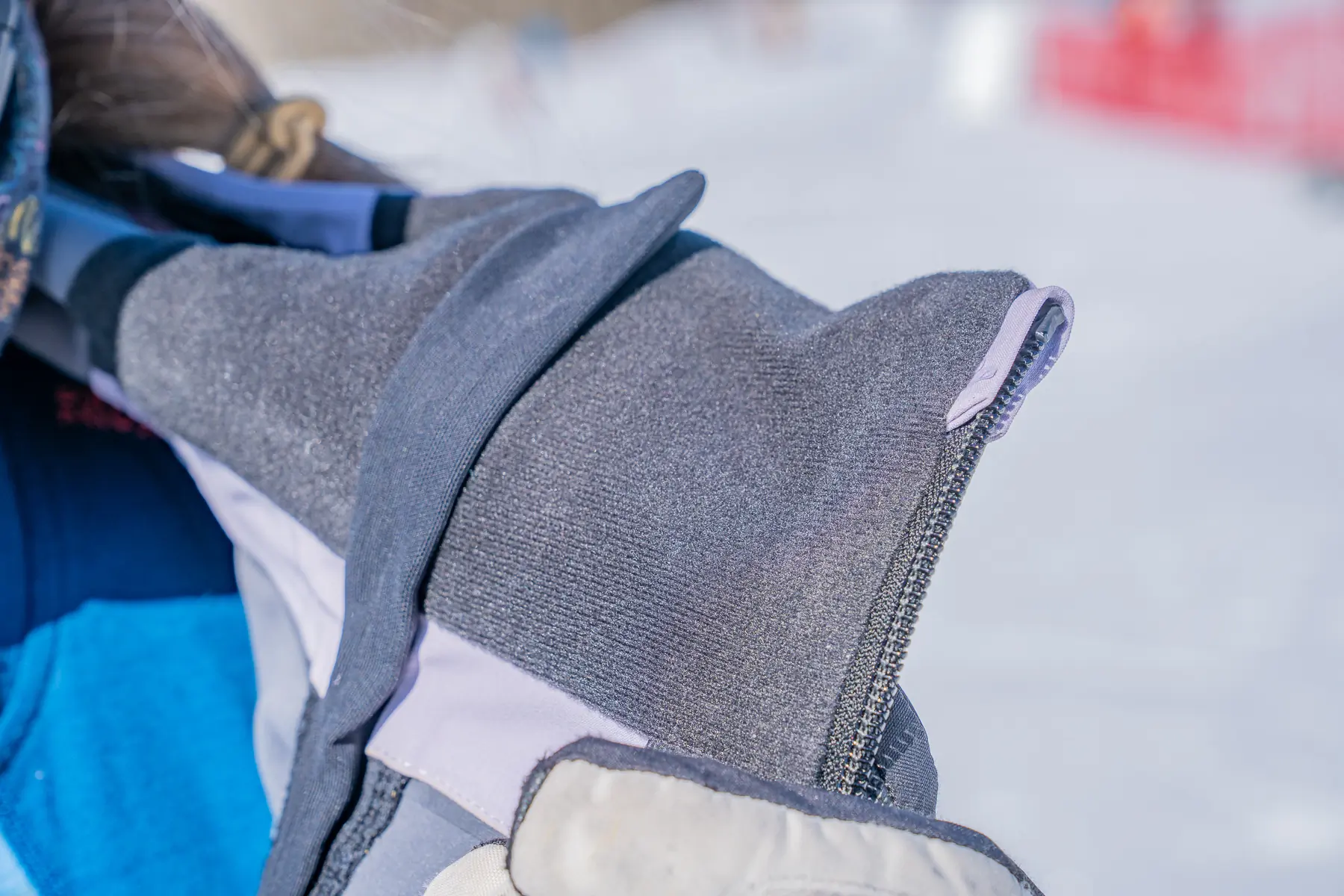



For instance, the TREW Gear Men’s Cosmic PRIMO Jacket did not fit well over a large helmet, and the TREW Gear Women’s Stella PRIMO Jacket was also relatively tight over a medium helmet. The Jones Snowboards Women’s Shralpinist Stretch Recycled Jacket hood fits well over a helmet. The hood of the Stio Women’s Figment Jacket is on the roomier side.
Other hoods can be so cavernous that wind balloons them like a parachute. The precise fit depends on the size and shape of the helmet, which differs from model to model. Each jacket’s hood has a slightly different cut. As a whole, we think snowboard jacket brands could work to dial in helmet and hood compatibility.
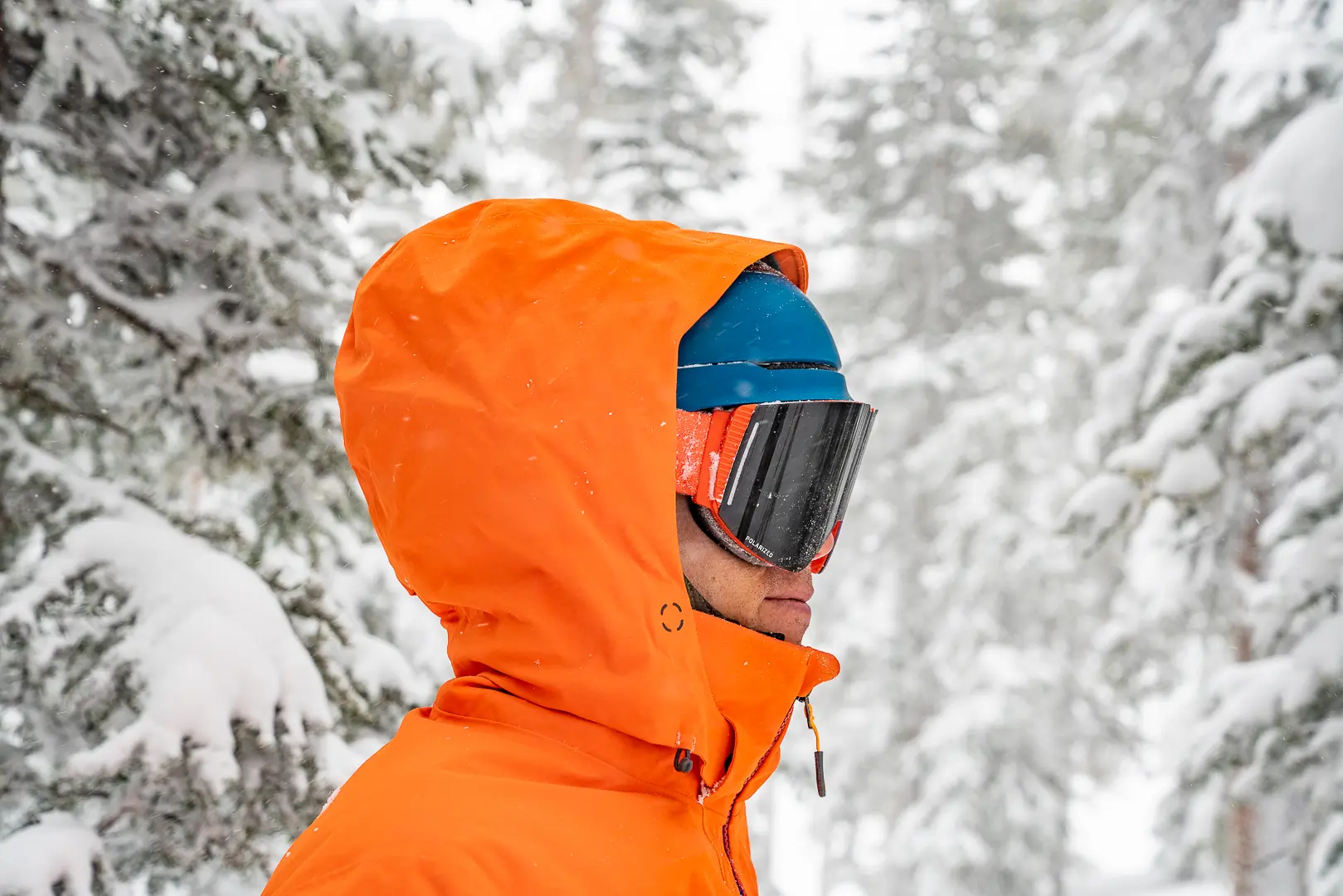



Weight
A jacket’s weight and bulkiness is an important factor for backcountry snowboarders that may need to stash their jacket in a ski backpack. Similarly, uphill athletes might wear a jacket for weather protection but need a lighter layer. Occasional resort riders might stash their jacket in a pack as the conditions warm.
The lightest jackets in our picks include the Outdoor Research Men’s Skytour AscentShell Jacket at 627 grams, followed closely by the Jones Snowboards Men’s Shralpinist Stretch Recycled Jacket at 786 grams. The women’s iterations of those two models weigh slightly less than the men’s versions.
Hitting a fair middle-ground weight is the Jones Snowboards MTN Surf Parka at 920 grams, and the Flylow Roswell Jacket at 975 grams. Another slightly beefier jacket is the Burton Men’s Covert 2.0 Jacket at 992 grams.
Ultimately, you shouldn’t compromise a snowboard jacket’s protection, durability, or comfort to drop a little weight but it’s good to aim for a sweet spot, especially when you’re heading out-of-bounds.


Sleeve Cuffs & Powder Skirts
Powder skirts help to prevent fluffy flakes from flying up and soaking your base layers or lower back. A skirt can also help block cold wind. Some designs are fixed while others are removable. A handful of brands have attachment points — like snaps or zippers — that directly attached a powder skirt to their respective snow pants. Another option for greater backside protection is to wear ski bibs.
Jacket sleeve cuffs each have a Velcro strap closure, though some designs have additional snaps, and the straps vary in width and length, making some more functional than others to operate while wearing ski gloves. The cuff straps on the Flylow Roswell Jacket are on the leaner side, while the straps on the TREW Gear Men’s Cosmic PRIMO Jacket are a tad shorter and angled.
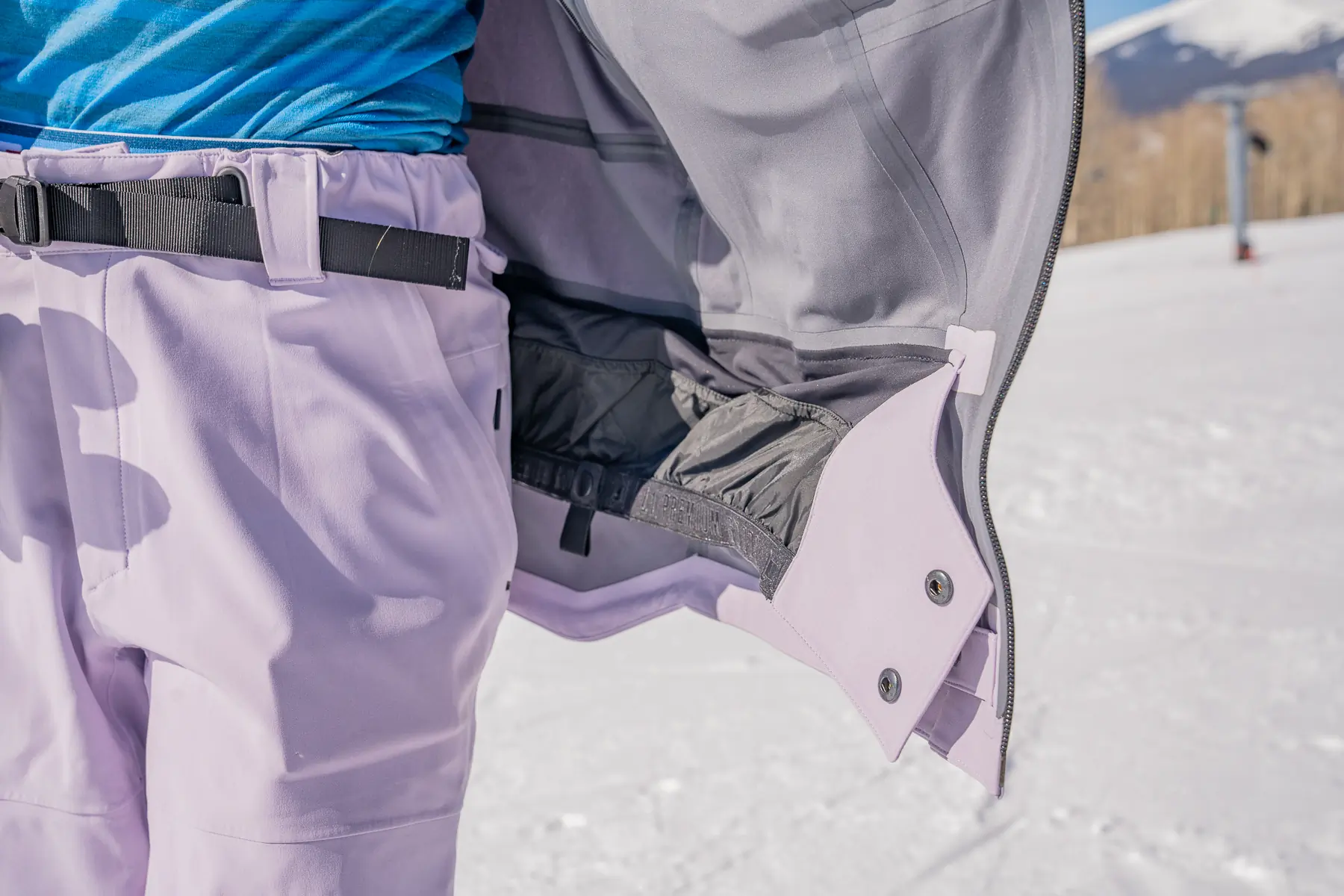



The wrist straps on the Jones Snowboards Men’s Shralpinist Stretch Recycled Jacket hit a sweet spot of functionality with an ideal length and width. The V-Science two-way cuffs on Volcom jackets are some of our favorite sleeve cuff designs across all snowboard (or ski) jackets: You can wrap the Velcro strap around your thumb, creating a temporary thumb loop.
Inside, some jacket sleeves have an integrated wrist gaiter, also known as a storm cuff. The stretchy fabric provides warmth by keeping wind and moisture out of the sleeve. Some designs are lengthier and have thumbholes to help secure the fabric over the top of the hand. While wrist gaiters increase protection, some designs can feel cumbersome if you like to wear a watch or tuck the undercuff of a ski glove into the jacket sleeve.


Sustainable Designs
Some brands in the snowsports space are setting a benchmark for sustainability.
Jones Snowboards Pushes Innovation
Jones Snowboards upholds a gold standard for their outerwear line, which hit the market in 2021-2022 with the men’s apparel lineup followed by the women’s collection the next season. The brand uses materials that are mostly OEKO-TEX Standard 100 and Bluesign-certified. The majority are 100% recycled and utilize PFC-free DWR (except the GORE-TEX Pro fabric). Their products are made in WRAP and BSCI certified facilities, to guarantee sound working conditions in the supply chain. In August 2022, the brand debuted the industry’s first-ever down jacket design with 100% recycled fabric, 100% recycled down fill, and recycled polyester zip pull cords. Some of their apparel designs have recycled polyester adjuster cords or a recycled neck zipper.
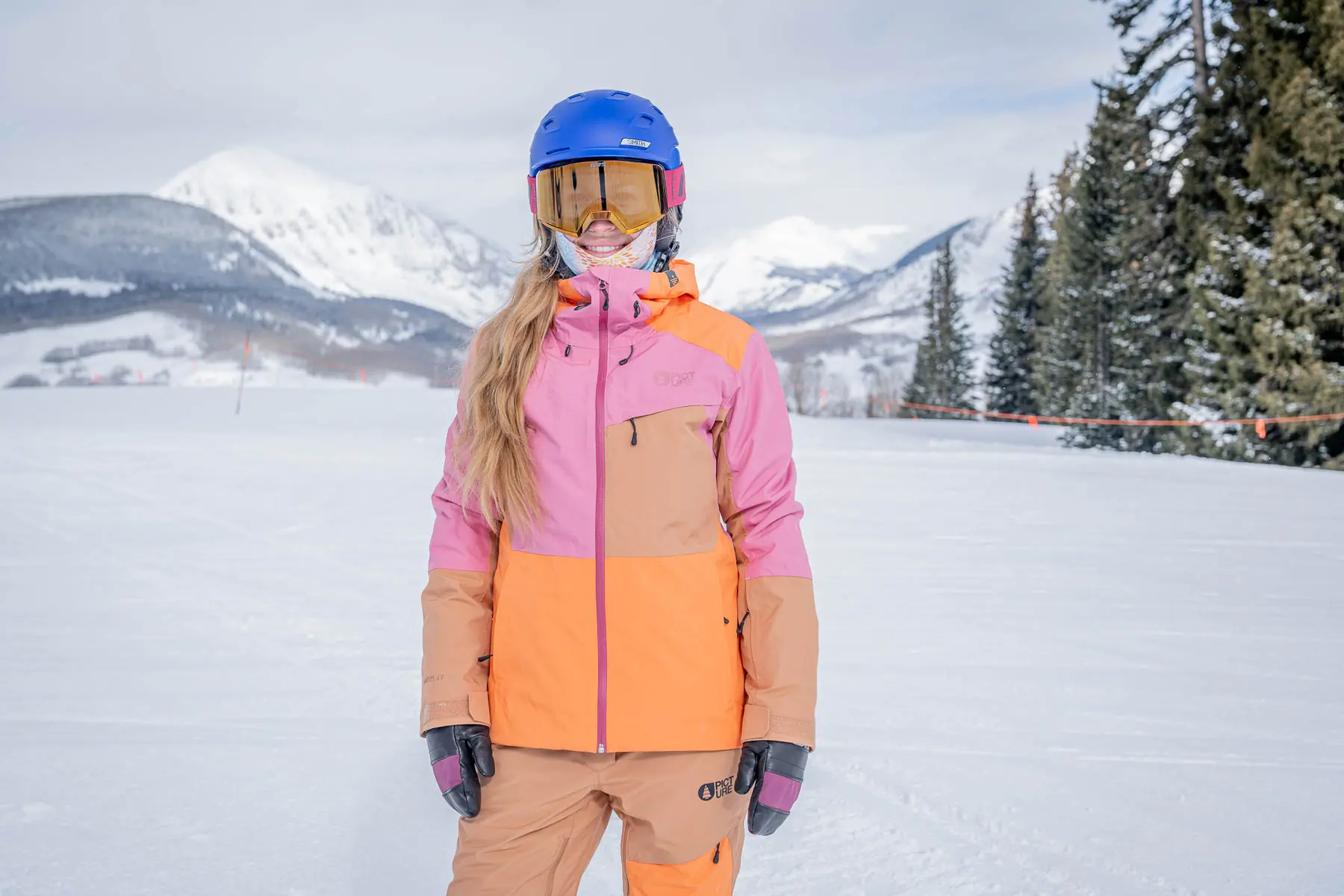



Upcycled Factory Scraps
Picture Organic also sets a high bar for sustainability. Launched in the brand’s winter 2023-2024 outerwear, Picture introduced The Circular fabric: a blend of 40% post-consumer used garments and 60% pre-consumer fabric pulled from factory cutting scraps. The creation replaces the brand’s previous bio-sourced materials for an even lower impact on the environment.
Recycled Fabric & Synthetic Fill
TREW Gear also hit a home run, spending several years developing a 100% recycled nylon textile that reached the market in 2023-2024. GRS (Global Recycled Standard) certified, the innovation updated their PRIMO 3-layer fabric, which remains highly waterproof and breathable for Pacific Northwest weather. Likewise, the Dakine Men’s Sender Stretch 3L Jacket and Dakine Women’s Sender Stretch 3L Jacket are made with 100% recycled 3-layer fabrics, which debuted in the 2022-2023 season. Pushing the needle with recycled synthetic insulation, the Airblaster Sassy Beast Jacket uses post-consumer recycled PrimaLoft synthetic insulation.


Price & Value
Most of our favorite snowboard jackets are moderately priced and fall in the $300 price range. The jackets that cost less are not as durable or adaptable across conditions but are well-designed, stylish, and check the box for many riders in milder climates nationwide. On the high end, other jackets pull out all the stops with design details and materials, upping the price and delivering an extremely durable, functional, well-fitting product that performs across conditions — the perfect partner for out-of-bounds missions.
Budget
On the economic side, our choice snowboard jackets range from $200 to $300. That line starts with the Men’s Burton Covert 2.0 Jacket at $270. The design of the Covert 2.0 is capped at 10K waterproofness and 5K breathability. It’s a 2-layer piece that and has no sustainability details.
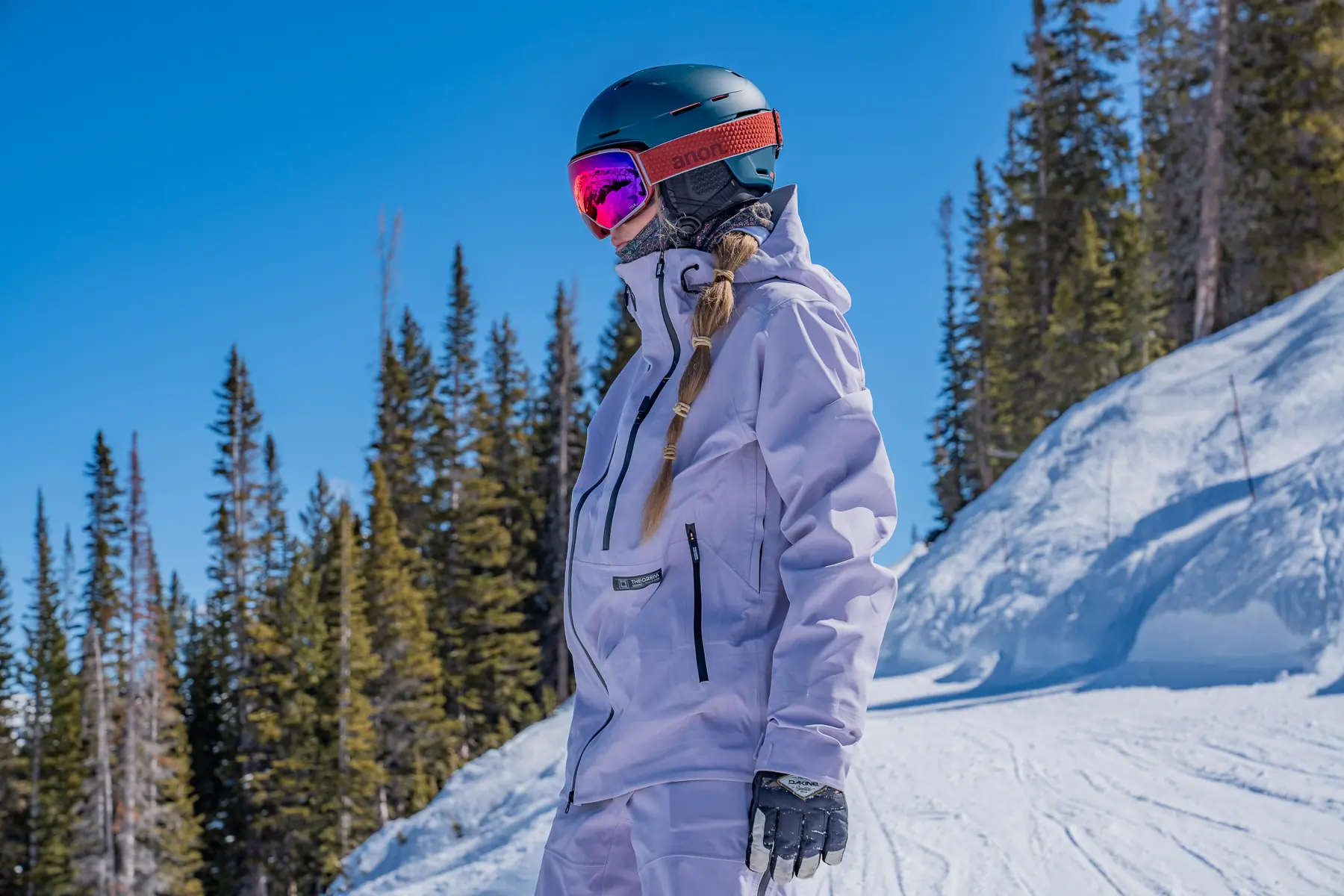



Mid-Tier
The majority of our favorite snowboard jackets range closer to $300 to $400. That tier starts with the Men’s Flylow Roswell Jacket ($300) and the Women’s Airblaster Sassy Beast Jacket ($320). These jackets are typically 3-layer and feature details like hoods, fleece-lined pockets, sustainable upgrades like recycled insulation and PFC-free DWR, and higher levels of waterproofness, breathability, and air permeability.
Premium
The most robust designs are key for long days in variable conditions at the resort and especially in the backcountry, and these snowboard jackets can reach up to $700. This crowned level contains the most well-built, ergonomic, sustainable, and stout designs, which equate to expensive materials, construction, and third-party certifications. These fabrics are usually the stretchiest and have the highest levels of waterproofness and breathability. Safety can also be an additional detail with elements like RECCO reflectors or infographics like the 5 Red Flags and Avalanche Rescue Tips patches inside the Jones jackets.
On the lower end of this range is the Women’s Outdoor Research Skytour AscentShell Jacket and Men’s Outdoor Research Skytour AscentShell Jacket ($429). Next, you’ll find the Men’s Jones Snowboards MTN Surf Recycled Jacket ($500), as well as the TREW Gear Men’s Cosmic PRIMO Jacket & Women’s Stella PRIMO Jacket, both ($499), Dakine Women’s Sender Stretch 3L Jacket, and the Dakine Sender Stretch 3L Jacket ($495). Topping out our most expensive jackets is the Women’s Jones Snowboards Shralpinist Stretch Recycled Jacket ($525) and Men’s Jones Snowboards Shralpinist Stretch Recycled Jacket ($575).
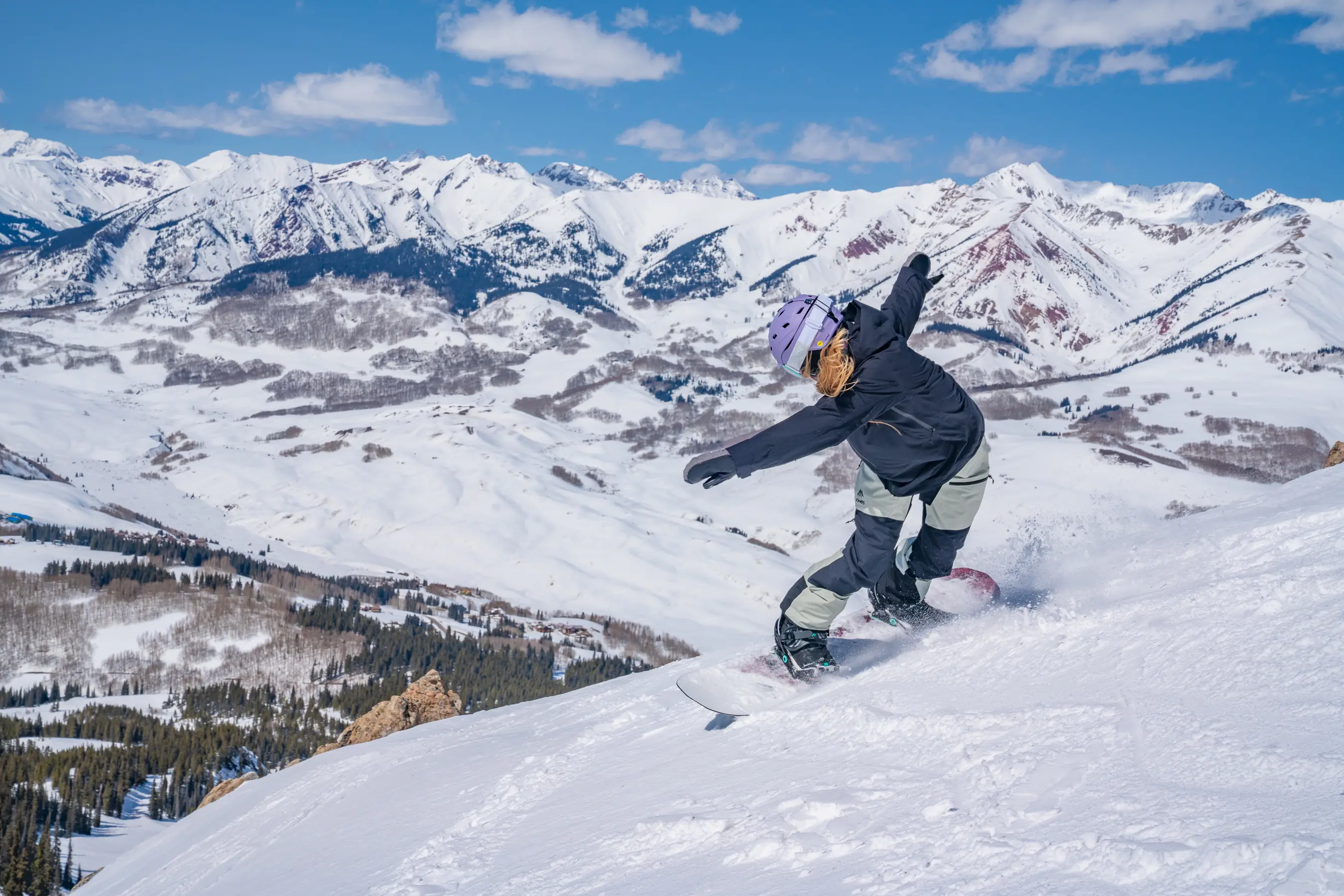



Frequently Asked Questions
Technically, ski jackets and snowboard jackets are all snow jackets — snowboarders can wear ski jackets, and skiers can wear snowboard jackets, and they do. From a design end, some snowboard apparel has a baggy aesthetic. Certain cuts are longer, which provides protection when snowboarders sit down to adjust their bindings. But the biggest difference between these two categories is the branding, marketing, and style trends. Many brands target both sports like Picture and TREW Gear.
You’ll want to choose a jacket that has adequate waterproofness for the amount of snow and how wet the snow is where you ride. You’ll want the breathability to be adequate: that number can be lower if you’re riding the lift versus hiking with your board or touring, in which case you’ll need more breathability. Riding powder and carving through trees or moguls can also increase the need for more breathability. The other variables are the jackets style and fit, as well as the price tag. It helps to try on snowboard jackets in person at your local snowboard or outdoor shop to get an idea of what works best.
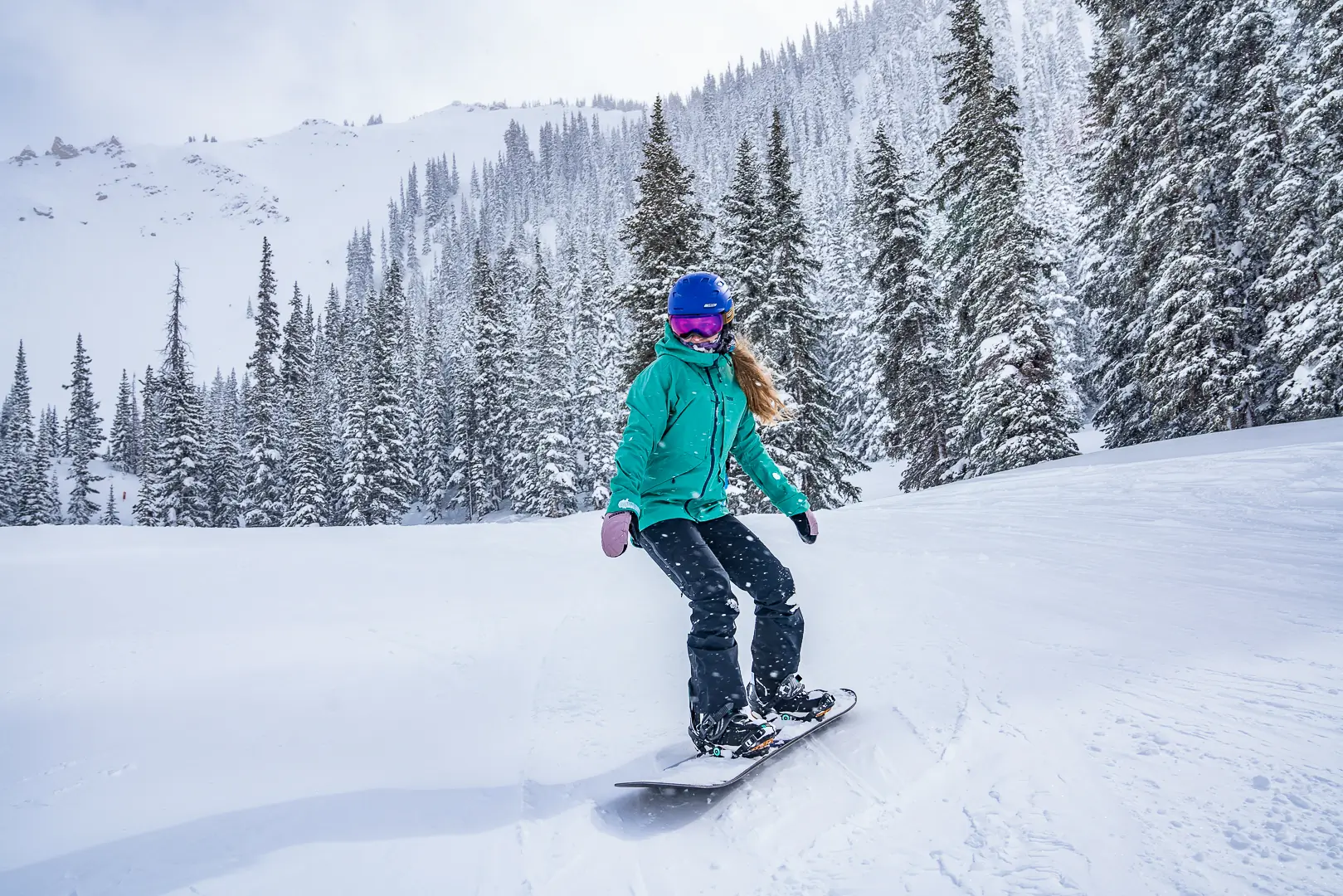



If you fall in between sizes, we recommend sizing up. Consider the midlayer you prefer to wear beneath your jacket, and how much space you’d like. A little wiggle room is nice — you don’t want your system to be too tight or cumbersome.
Each manufacturer will have its own size charts for the men’s and women’s products. be sure to measure yourself and check the return or exchange policy before purchasing. If possible, go to your local retailer to try on jackets in person to confirm the size.
A performance-oriented snowboard jacket should be slightly roomy in the shoulders and waist, to avoid pinch points and restriction. You want to be able to comfortably pull on the jacket, bend over to adjust your snowboard boots or bindings, and have freedom of movement as you shred. But you also don’t want a jacket to be too big. Blank space at the hem, collar, and cuffs can diminish protection from the elements like wind and moisture. Extra fabric can be cumbersome, create drag, and flap in the wind. Most of our favorite jackets are made with fabrics that provide suitable stretch, which supports mobility, so you don’t need to size up in a grand way. As far as style goes, some snowboarders intentionally prefer a super baggy look — aesthetics come down to personal preference.
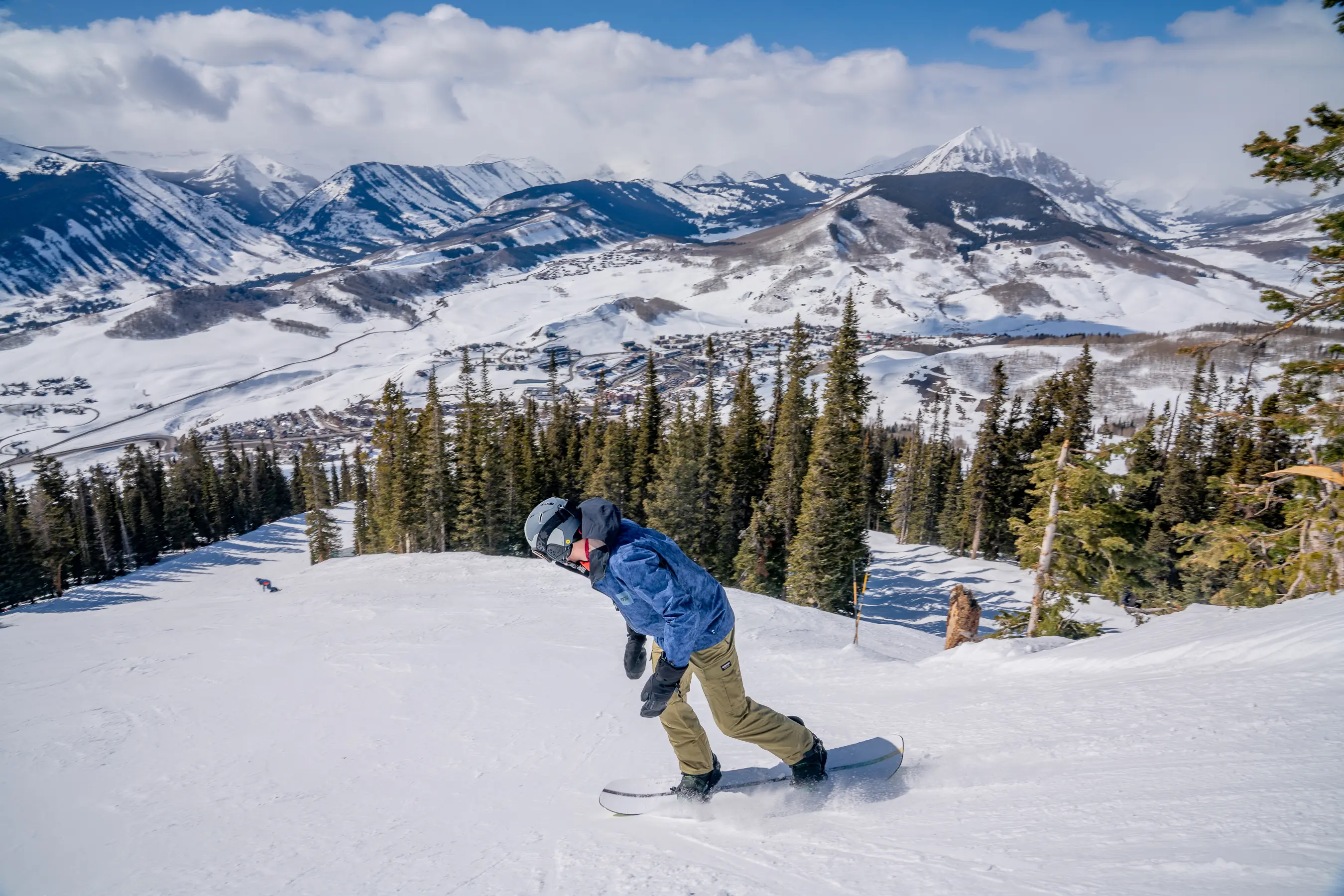



Some of the snowboard jackets on our list are insulated. Each insulated design uses a unique type and amount of fill, and the insulation can also be targeted to zones in the jacket like the torso, arms, and hood. The warmest options on our list in terms of insulation are the Burton Men’s Covert 2.0 Jacket with 80 grams of synthetic insulation.
Across testing and research, we found that a really popular, tried-and-true women’s snowboard jacket is the TREW Gear Women’s Stella PRIMO Classic, which hits all the same marks as the V.CO, plus it’s made with 100% recycled fabric and is available in extended sizes of 1X through 4X, as well as XS through XXL.
For backcountry travel, one of our favorite snowboard jackets for women is the Jones Snowboards Women’s Shralpinist Stretch Recycled Jacket, which sets a benchmark for sustainable design and is equally comfortable for resort shreds if you want a shell jacket without insulation. Our favorite insulated resort jacket is the Airblaster Women’s Sassy Beast Jacket, which is loaded with tiny details including spacious pockets, a super-soft and large chin guard, eco-friendly materials, smooth fabric, wrist gaiters, and a fun bat-imprinted taffeta lining.
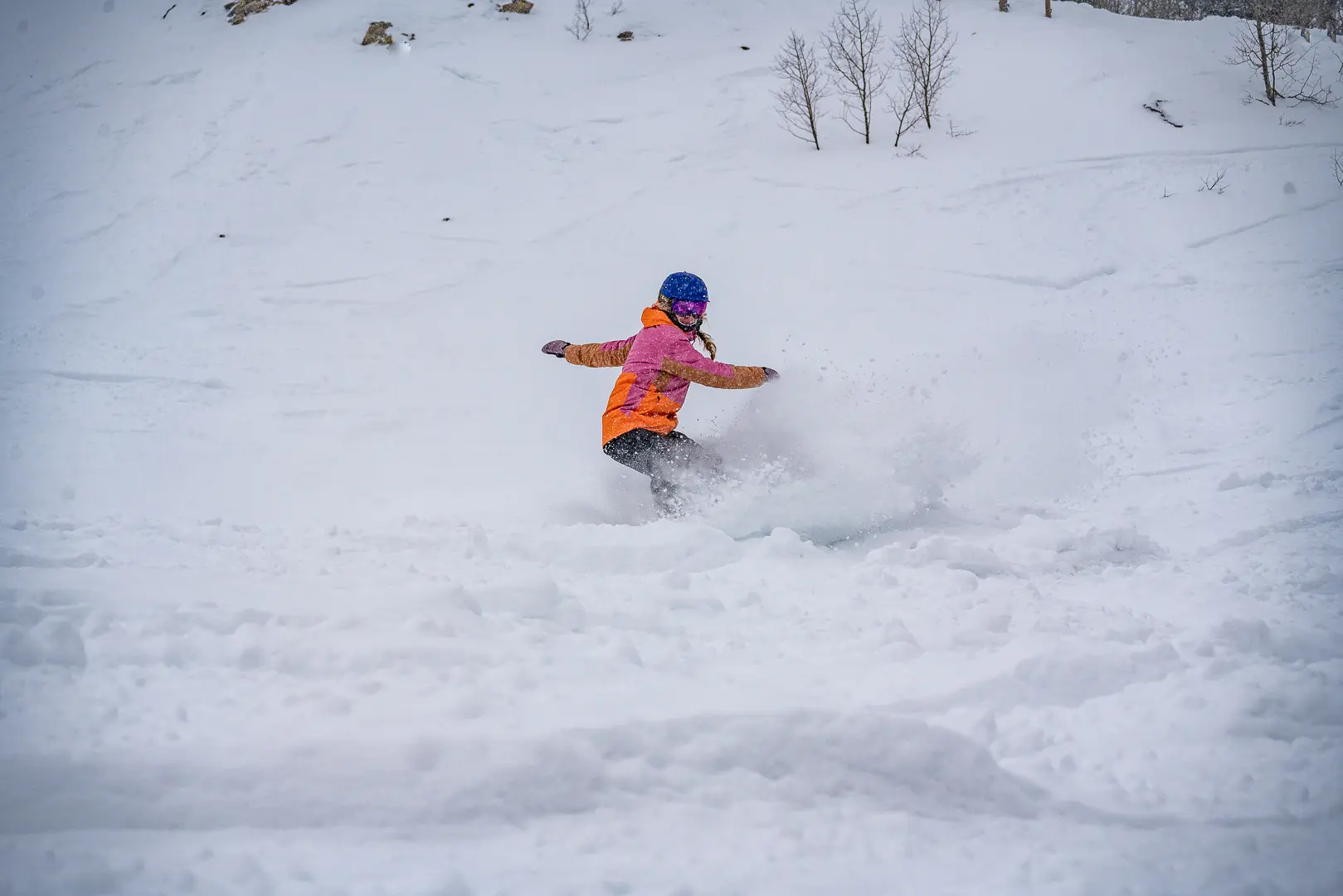



Snowboard jackets are a long-term investment and worth the ticket of admission for their protection, comfort, and style. The most economic options usually range from $200 to $300, and the average cost is $300 to $400. The most robust designs, which are best for long days in variable conditions or human-powered days on snow, can reach around $700. Usually, a bigger price tag denotes higher-quality materials, elements like RECCO reflectors, sustainable textiles and treatments, and a more time-intensive design and manufacturing process.
A snowboard jacket breaks down for a multitude of reasons, including exposure to sunshine, rain, and snow, in addition to wear and tear. The terrain and application play a huge role in how long your jacket will last. Things like riding a snowmobile to access your backcountry lines, operating a trailer to transport your snowmobile, carving snow through rocky and cliffy terrain or dense trees that can snag the fabric, or even wearing a backcountry pack can be tough on your outerwear. If you want to get a lot of life out of your outerwear, remember to treat it well.
Hopefully, you can avoid contact with sharp objects to prevent tears and snags and keep your jacket clean so that it remains breathable. You’ll want to hang it up to dry.
Our highest-volume testers, getting 60+ days in the field at the resort and backcountry, typically use their favorite snowboard jackets for at least a few years. If you only ride inbounds a couple of weeks each season and take good care of your jacket, its lifespan will be longer — like 5-6 years or longer. That said, after a few years of use, you may find yourself doing some extra care on the jacket’s zippers or seams. Annually, you’ll need to assess the waterproofing and if any topical treatment needs to be reapplied. Be sure to follow the care and re-waterproofing instructions, which are tailored to each jacket.


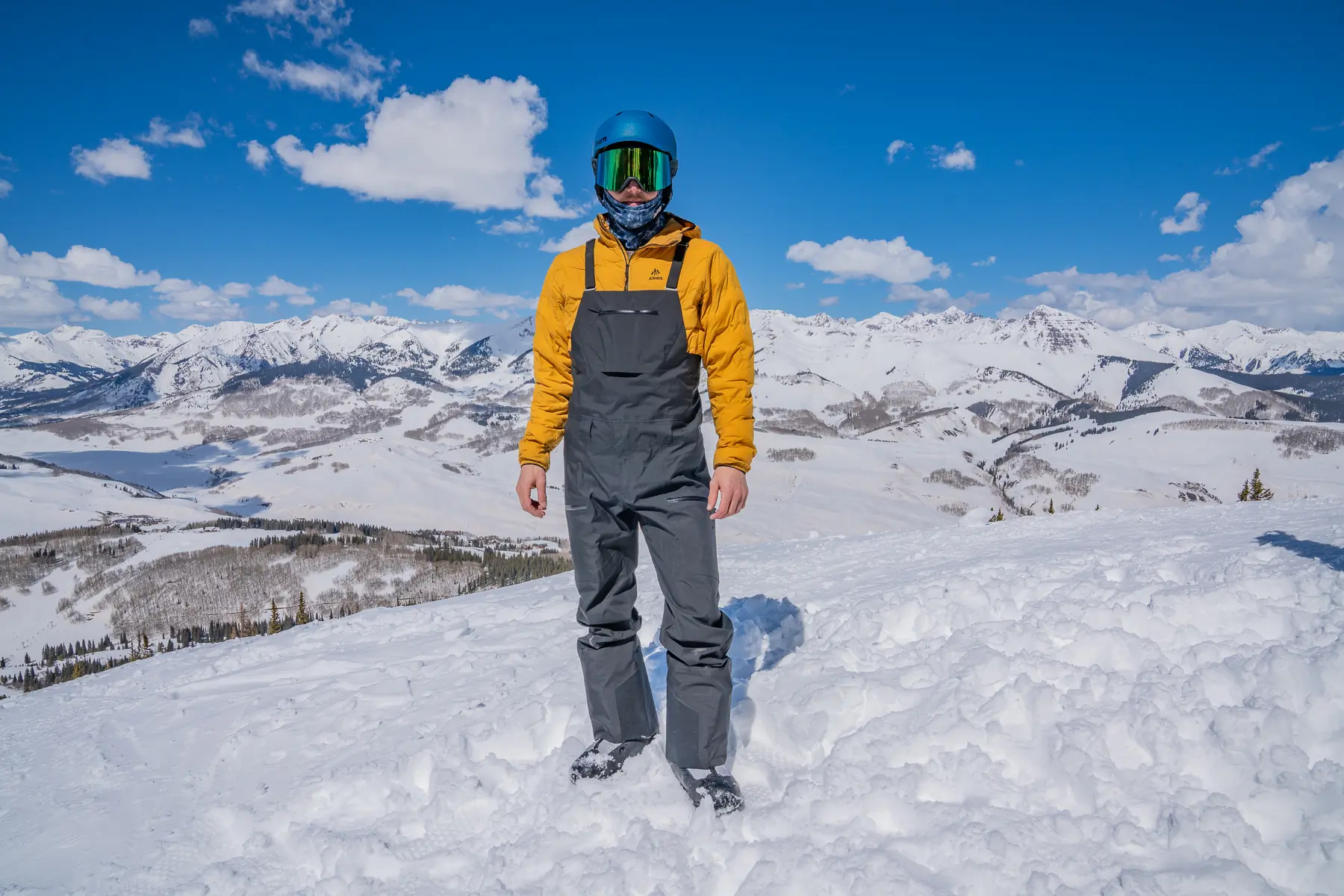

The Best Men’s Ski Bibs of 2025-2026
Whether you ski, snowboard, snowmobile, or splitboard, we’ve found the best men’s ski bibs.
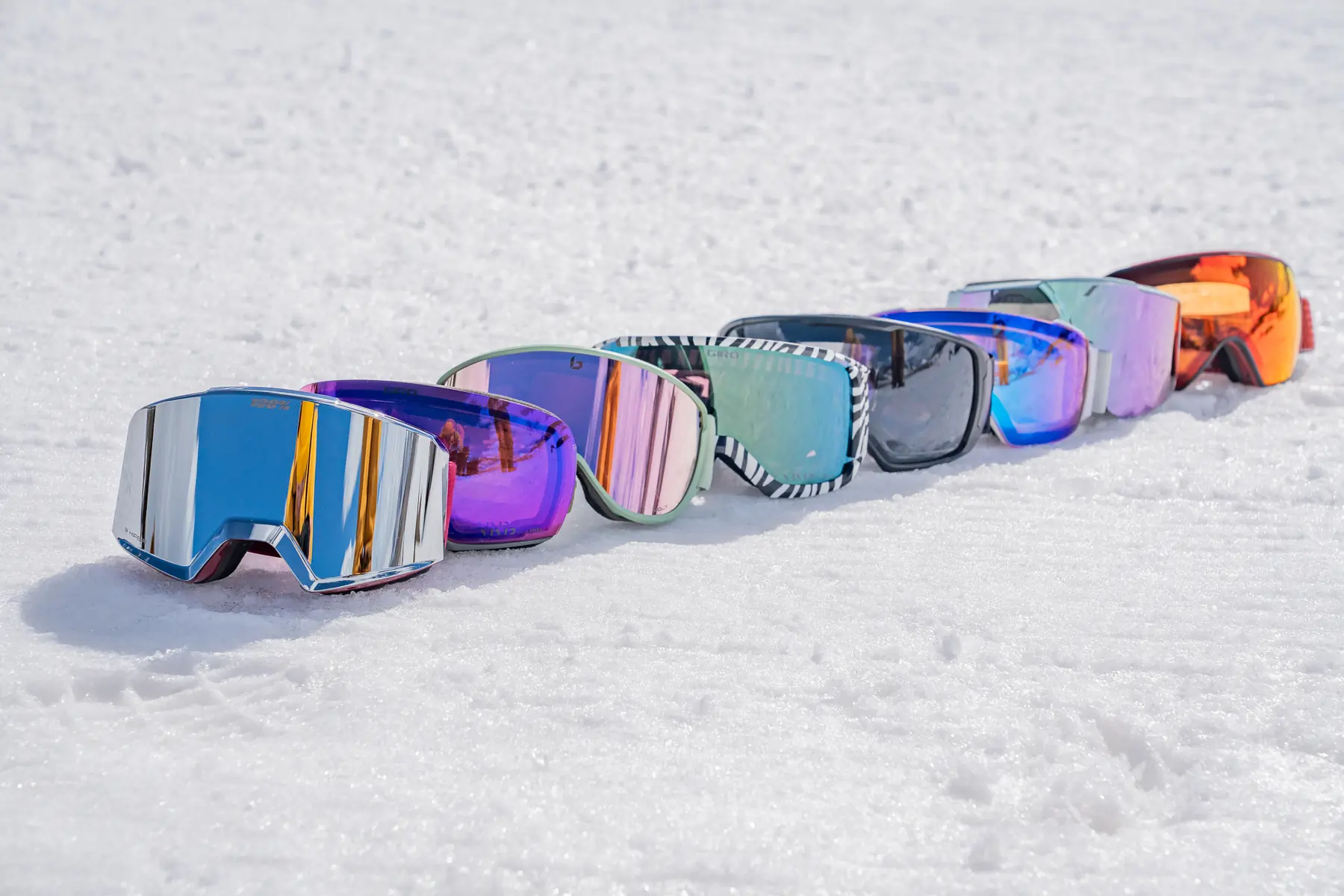

The Best Ski Goggles of 2025-2026
Searching for the best ski goggles for skiing, snowboarding, or snowmobiling? We’ve got you covered with our vetted collection.
